Last updated: 24th February 2024
Agra was the city we were most excited about visiting on our grand tour of India. Why? because it’s home of the world’s most famous building – the Taj Mahal. And yes, we can tell you no matter how many times you’ve seen it in pictures, nothing does it justice as seeing it for real. In this Agra itinerary we’ll show you how to see the Taj Mahal plus all the other famous places of Agra in 2 days.
Table of Contents
Day 1 – Agra Itinerary
Arrive By Train to Agra Cannt
We caught an early morning sleeper train from Jaipur to Agra and arrived into the city’s Agra Cantt station at lunchtime. After a quick lunch and freshen up we were super excited to be off on our 1st day of sightseeing in Agra.
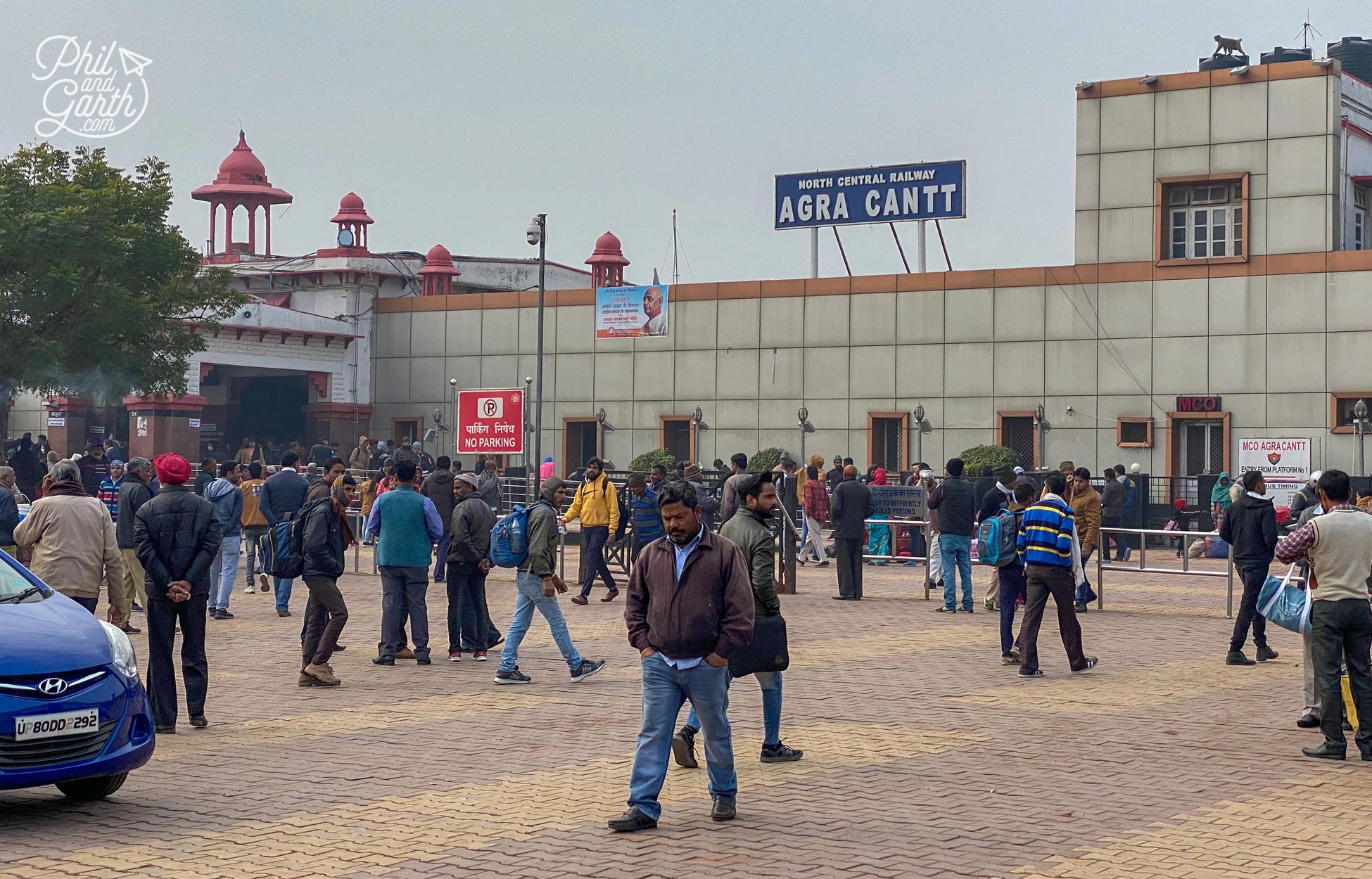
Agra attracts huge numbers of domestic and foreign tourists every year
I’timād-ud-Daulah – The Baby Taj
As we set off from our hotel, our first impression of Agra is that it’s a big ugly modern city. Many roads don’t have pavements instead just mud paths, however things did improve greatly as we got close to our first stop, the I’timād-ud-Daulah. Built in 1614 this lavish 17th century mausoleum is set in a beautiful garden, it contains the tomb of I’timād-ud-Daulah. He was the father of the Emperor’s wife and his children served as generals of the Mughal Emperors. Some people describe the building as a ‘jewellery box’ because of the gemstones inside the tomb chamber. We thought ‘Baby Taj’ was more appropriate as it does resemble the Taj Mahal. It’s ornate and very pretty, made entirely of white marble with accents of red marble. Garth loved all the elaborate latticework and marble geometric tile designs. It’s done using inlay techniques called ‘pietra dura‘ – the decorative art of cutting and polishing stones, putting them together to create beautiful images and patterns.
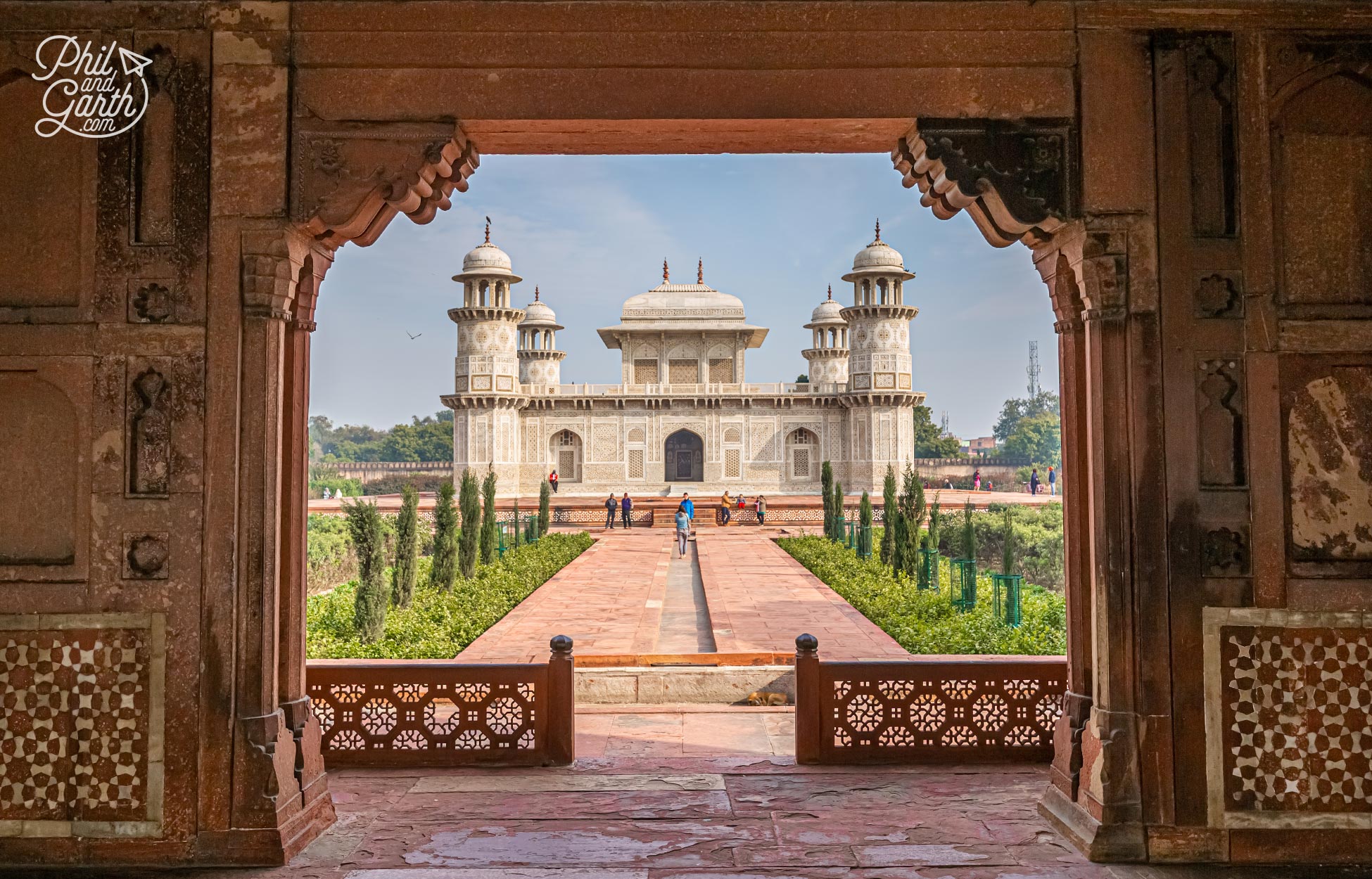
The mausoleum of I’timād-ud-Daulah also known as ‘The Baby Taj’
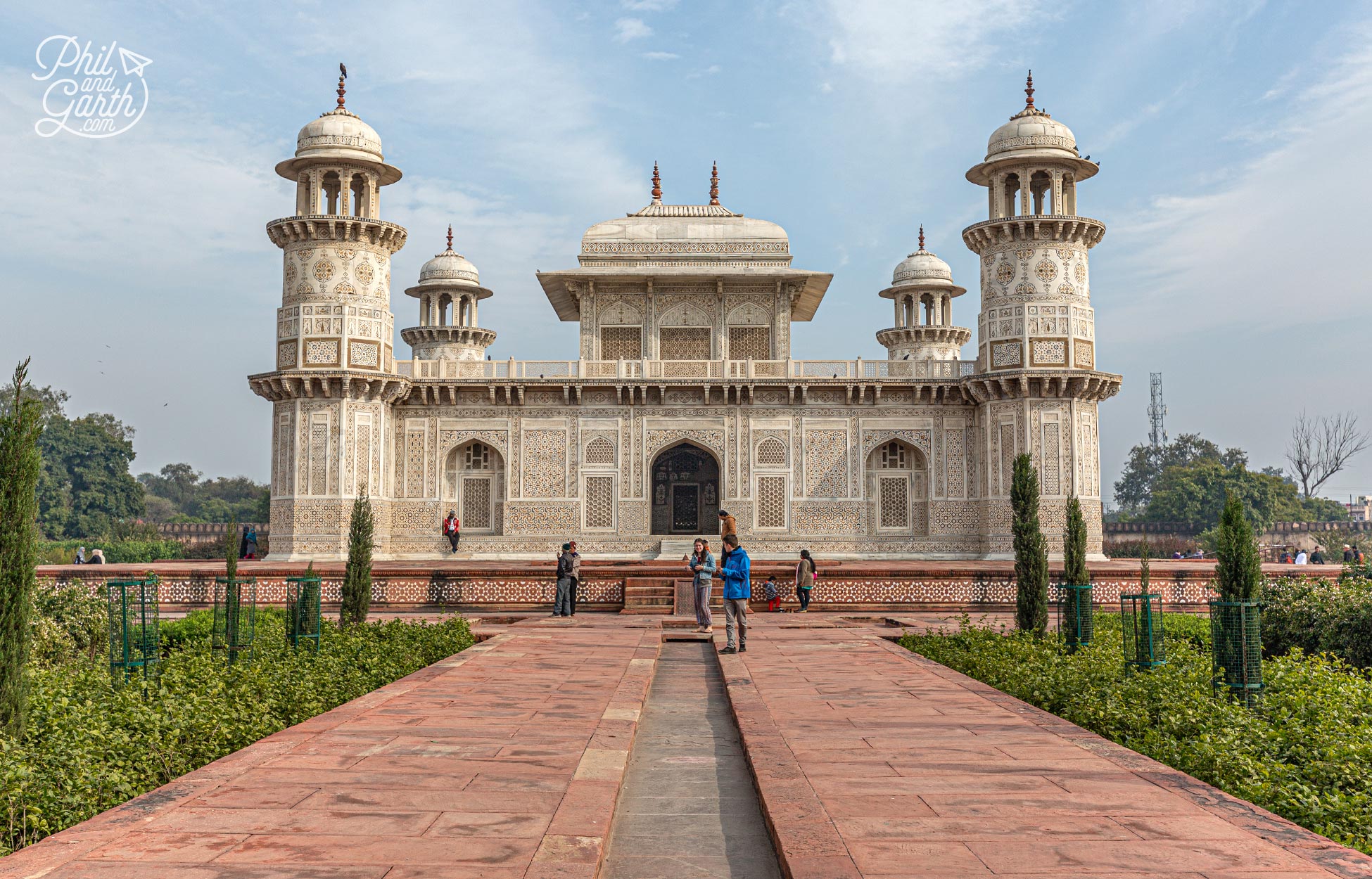
The rooftop pavilion has 4 corner minarets
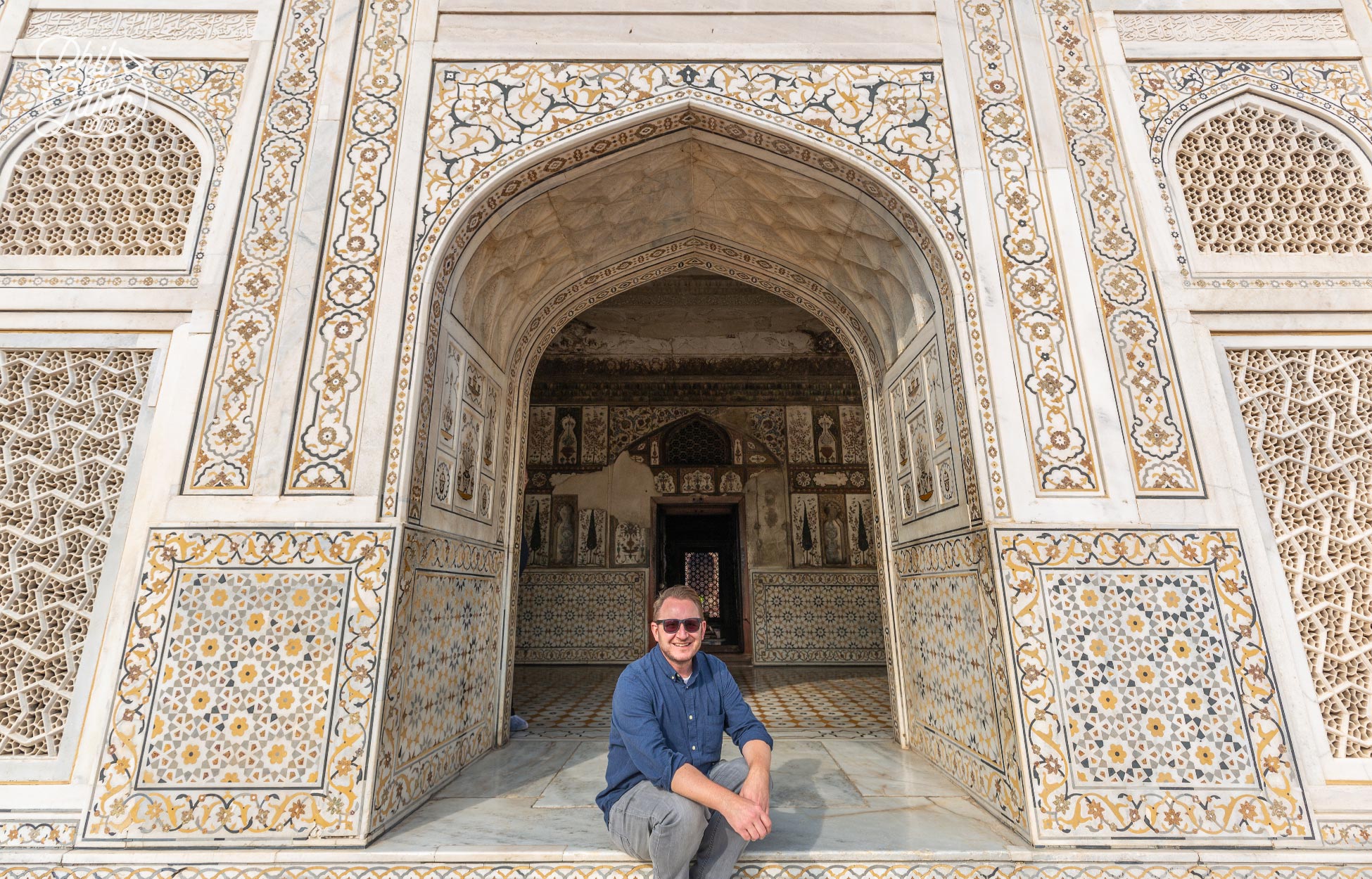
Garth on the steps of this exquisite building
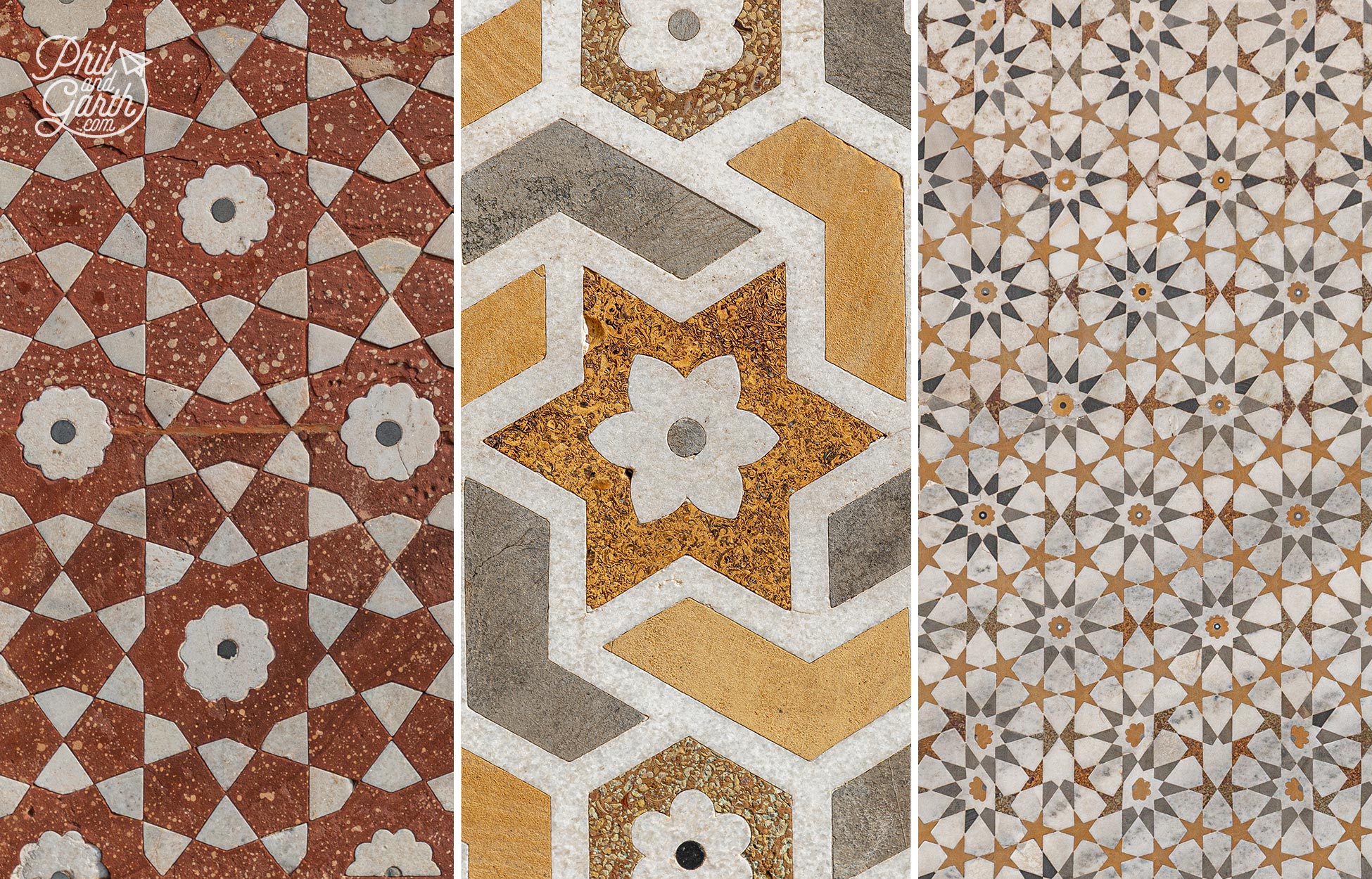
Gorgeous tile patterns and symmetry of the ‘Baby Taj Mahal’
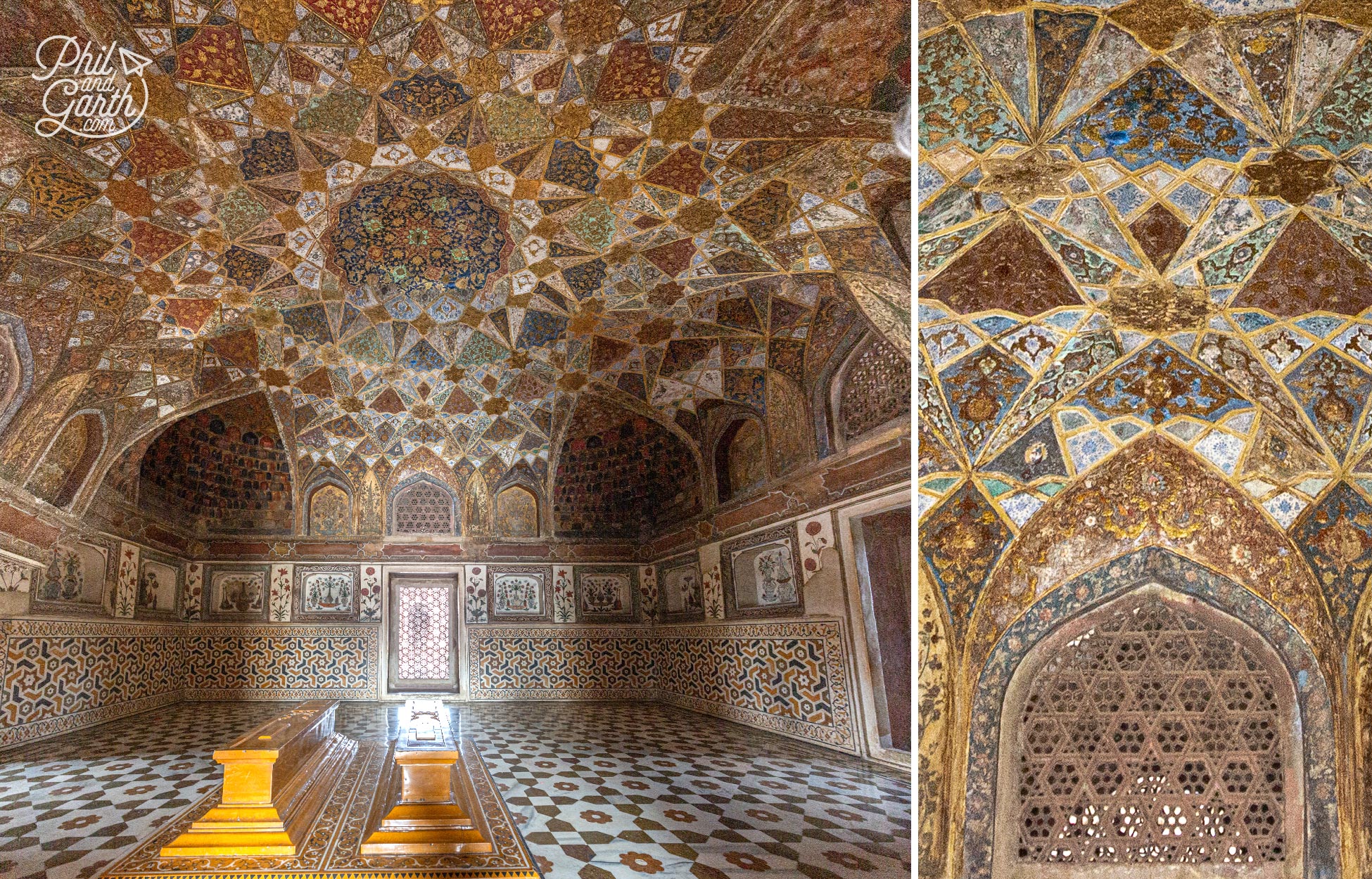
The extravagant stone inlay work inside the tomb chamber
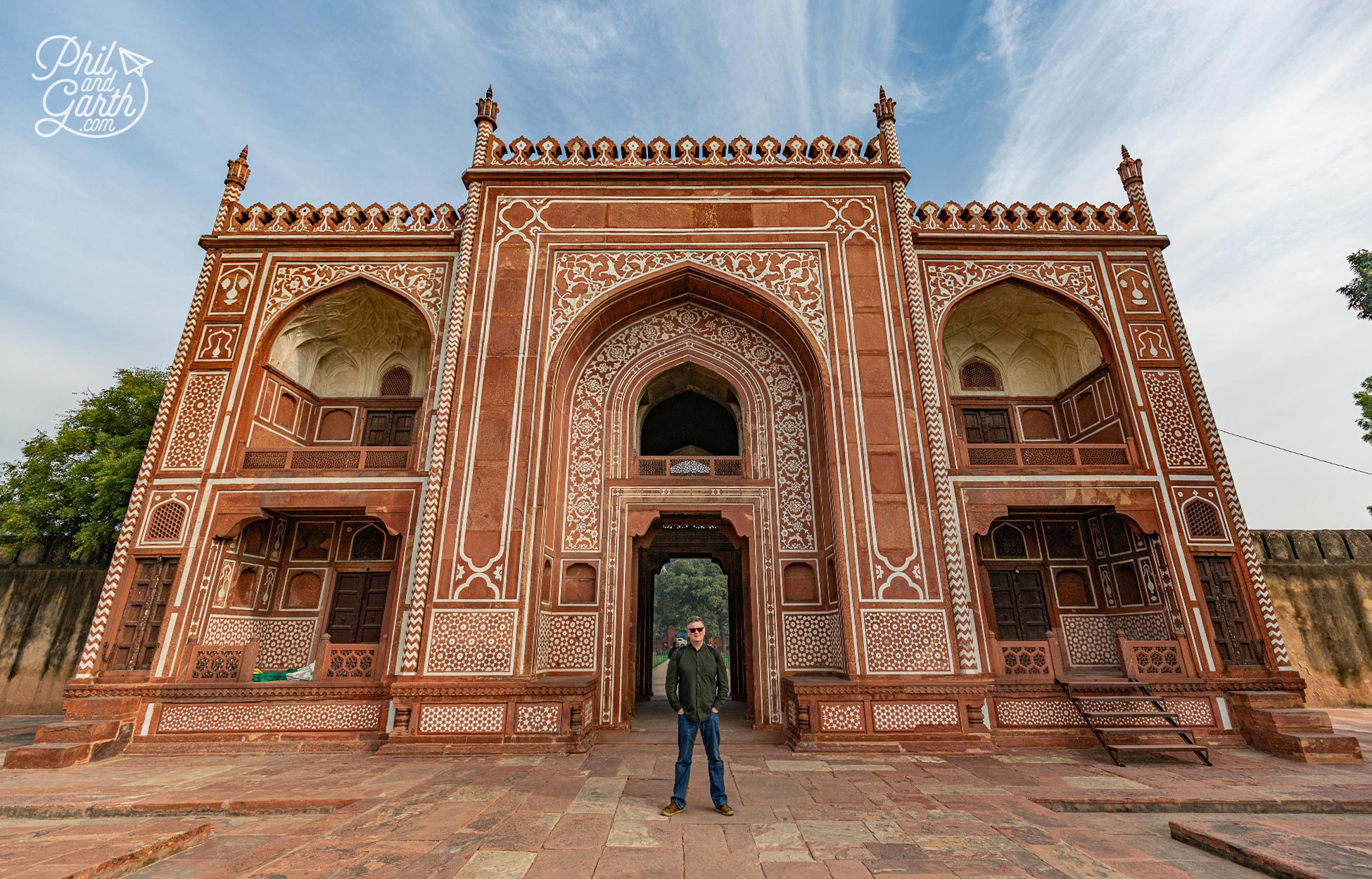
Phil at the entrance gate of I’timād-ud-Daulah
Taj Mahal at Sunset from Mehtab Bagh
In the early evening we were absolutely thrilled and giddy to go watch the sunset over India’s most famous attraction and possibly the world’s most famous building – the iconic Taj Mahal. Would it be worth the hype and our long journey from the UK to see it for the very first time? We arrived at Mehtab Bagh – a lovely green park opposite the Taj Mahal next to the Yamuna River.
As we entered the park we had butterflies in our stomachs, just like we did when we approached Angkor Wat in Cambodia. We caught our first glimpse of the Taj Mahal poking through the trees and we were mesmerised! As we got closer, our first reaction was that it was much bigger than we imagined it to be, especially the large ‘onion dome’. It was one of those surreal ‘pinch yourself’ moments where we were stood opposite something that felt so familiar. We sat with lots of other people for a few hours watching the colour change on the marble domes and minarets as the sun disappeared. It felt magical and an epic moment of our trip, because it was. Mehtab Bagh is a peaceful place to view the Taj Mahal without the crowds.
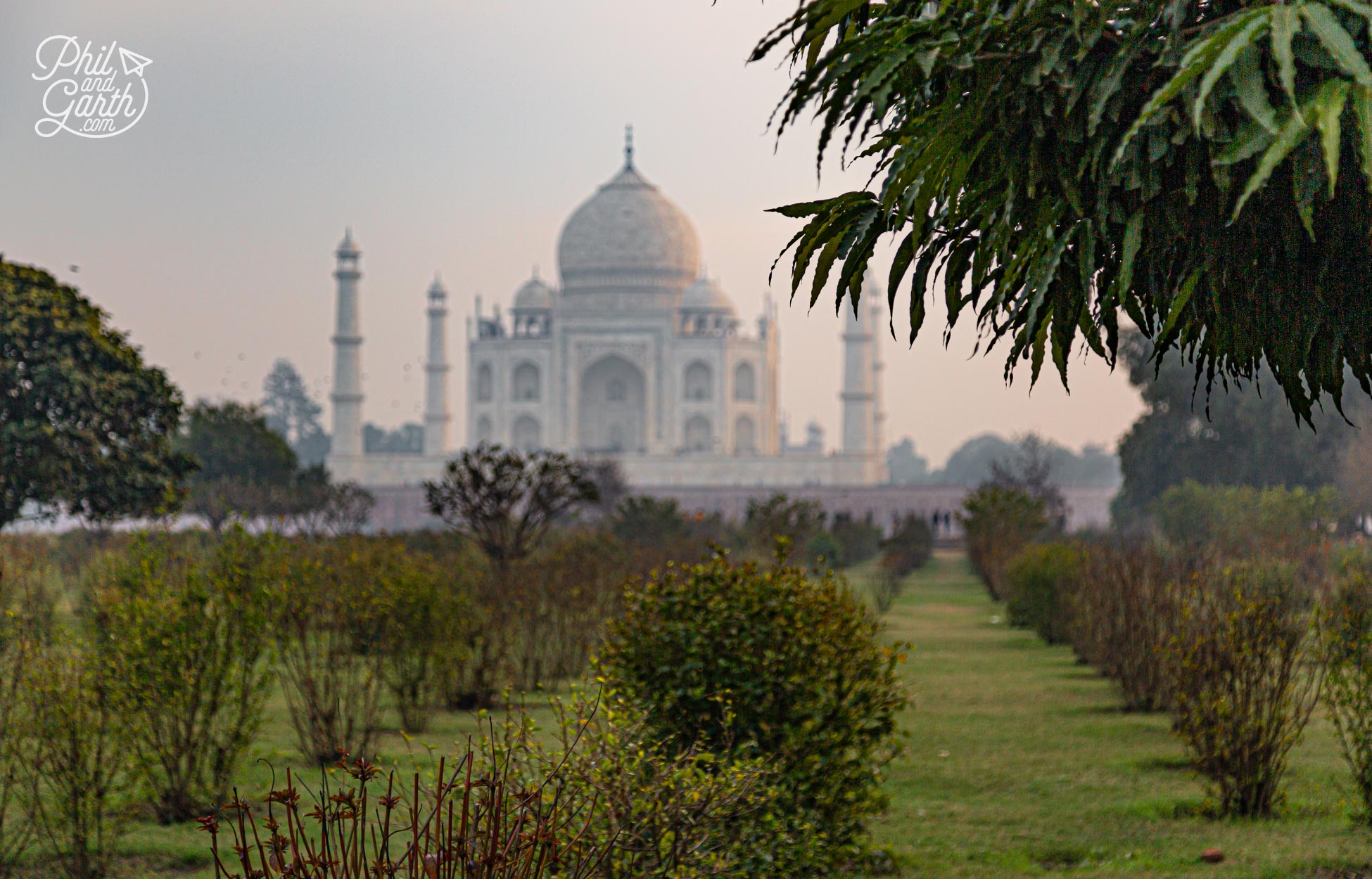
Our first glimpse of the Taj Mahal from the Mehtab Bagh garden
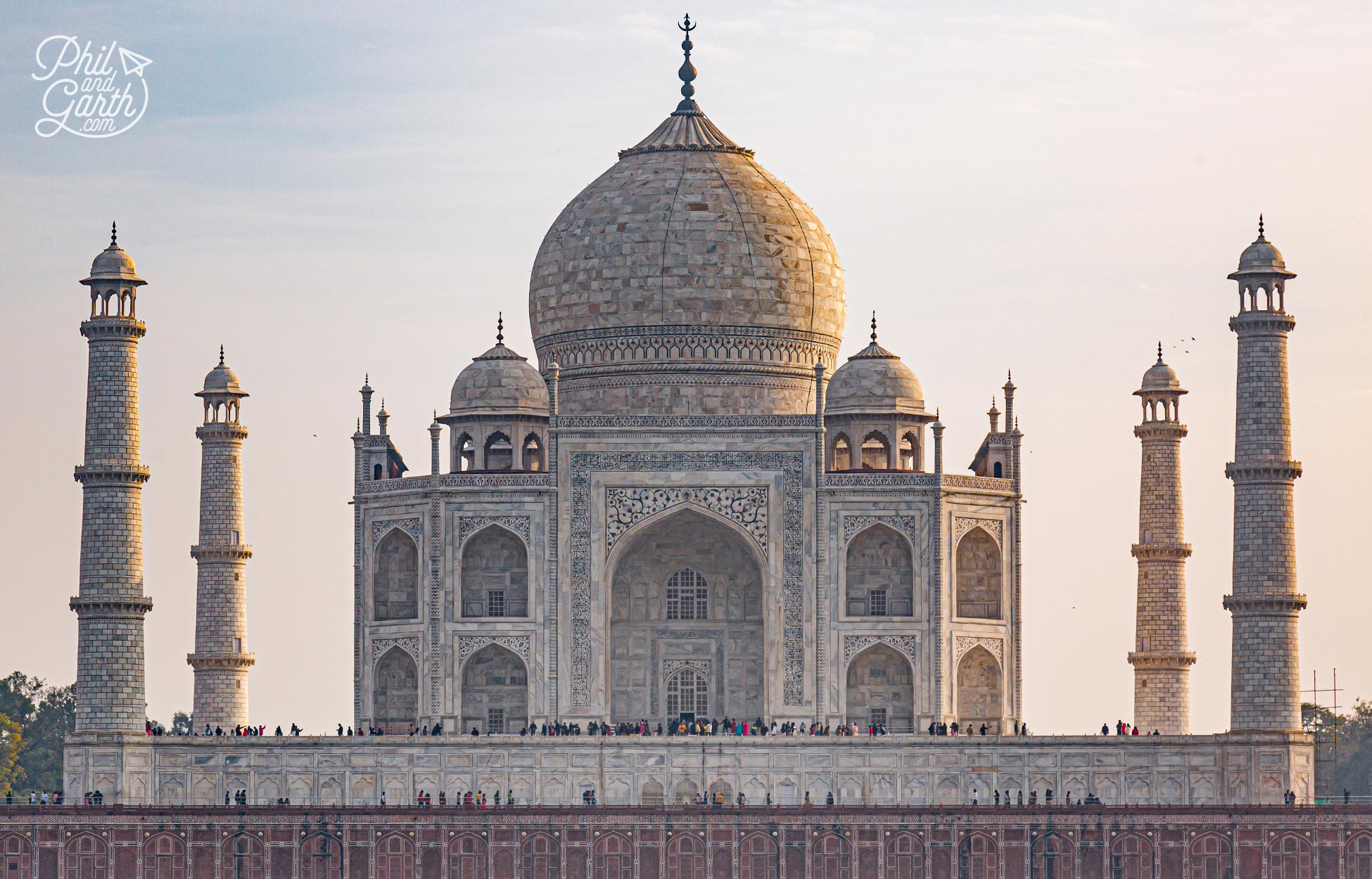
The fabulous Taj Mahal – The jewel in India’s crown
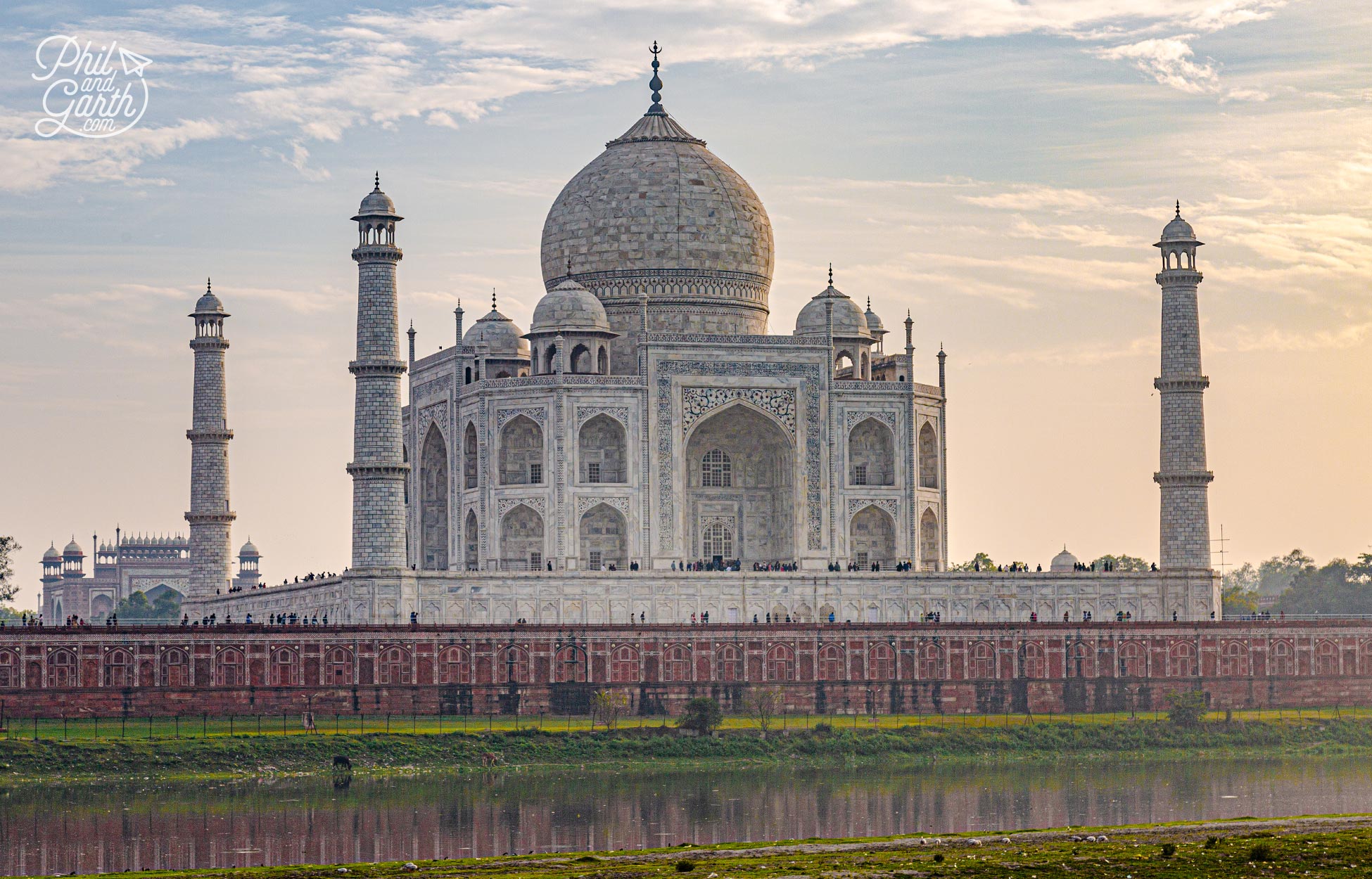
Our lovely view of the Taj Mahal viewed from the banks of the River Yamuna at Mehtab Bagh gardens
Built on the banks of the Yamuna River the Taj Mahal is a UNESCO World Heritage Site and a true wonder of the modern world. The Taj Mahal is a mausoleum built by the Mughal Emperor Shah Jahan to house the tomb of his late wife Mumtaz Mahal. The Emperor had 3 wives but Mumtaz was his favourite who died while giving birth to their 14th child. The Taj Mahal symbolises their great love for each other.
The Taj Mahal was built between 1631 and 1648. Working day and night it took over 20,000 skilled craftsmen and over 1,000 elephants (to transport building materials) 22 years to complete. The Indo-Islamic architecture has perfect symmetry and this white marble masterpiece is considered by many people to be the most beautiful building in the world. The design is very similar to the Humayun’s Tomb we visited in Delhi. A clever design fact – the 4 minaret towers tilt outwards by 2 degrees, built so they fall away from the mausoleum in the event of an earthquake.
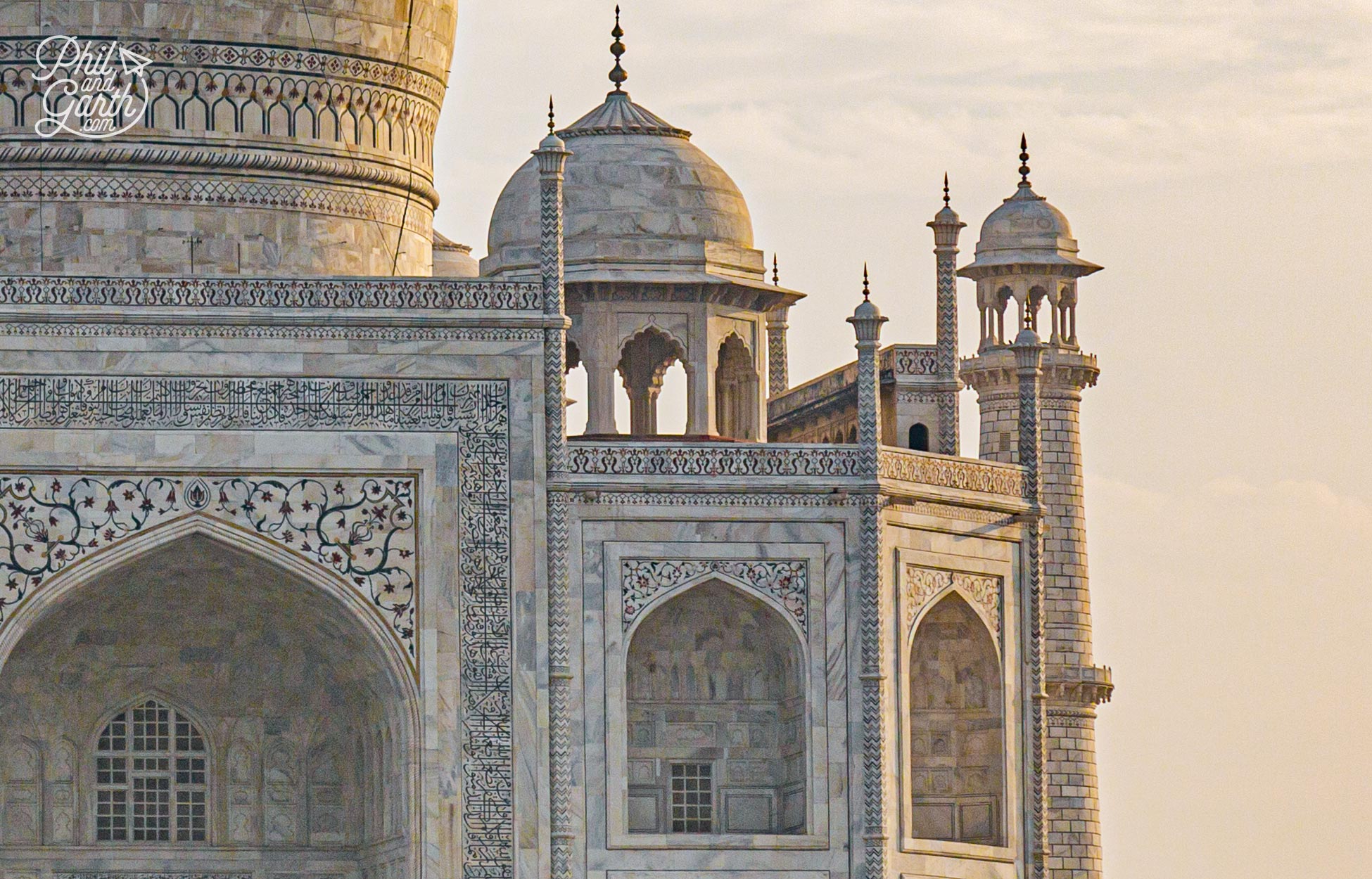
It took 20,000 craftsmen and over 1,000 elephants 22 years to complete
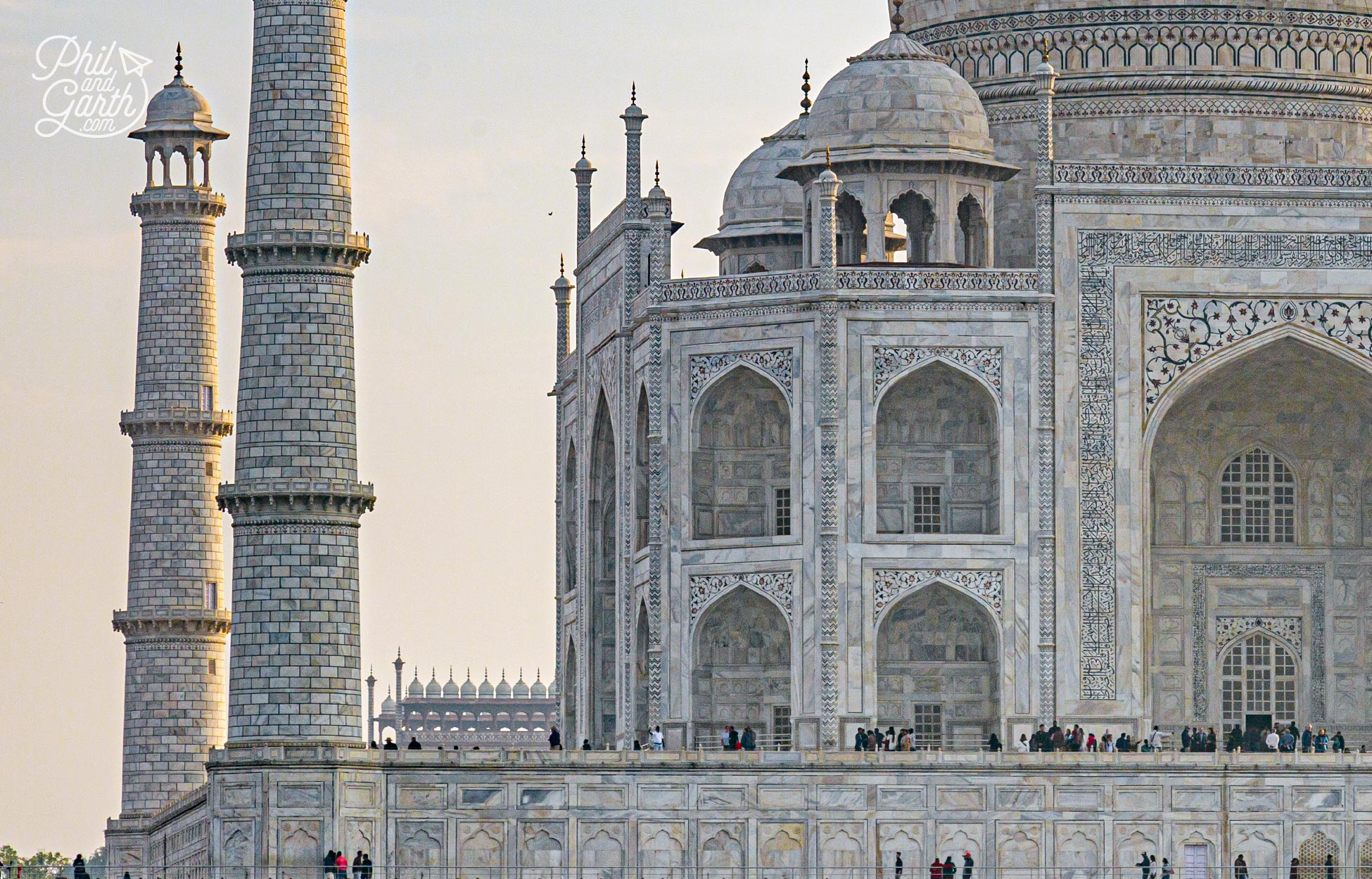
The Taj Mahal mausoleum has the tomb of Mumtaz Mahal
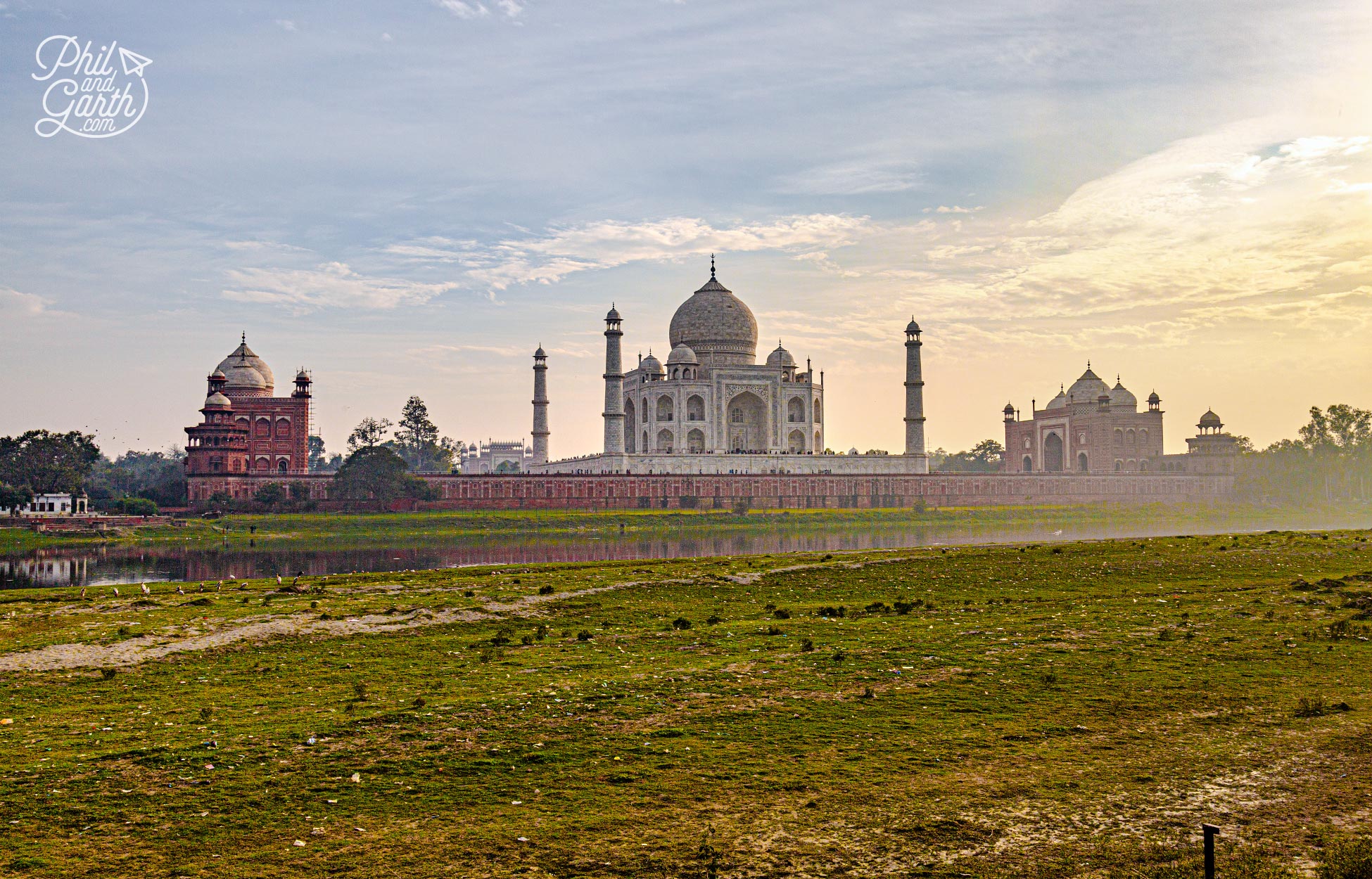
Opposite each side are 2 red sandstone buildings – a mosque and a former guest house
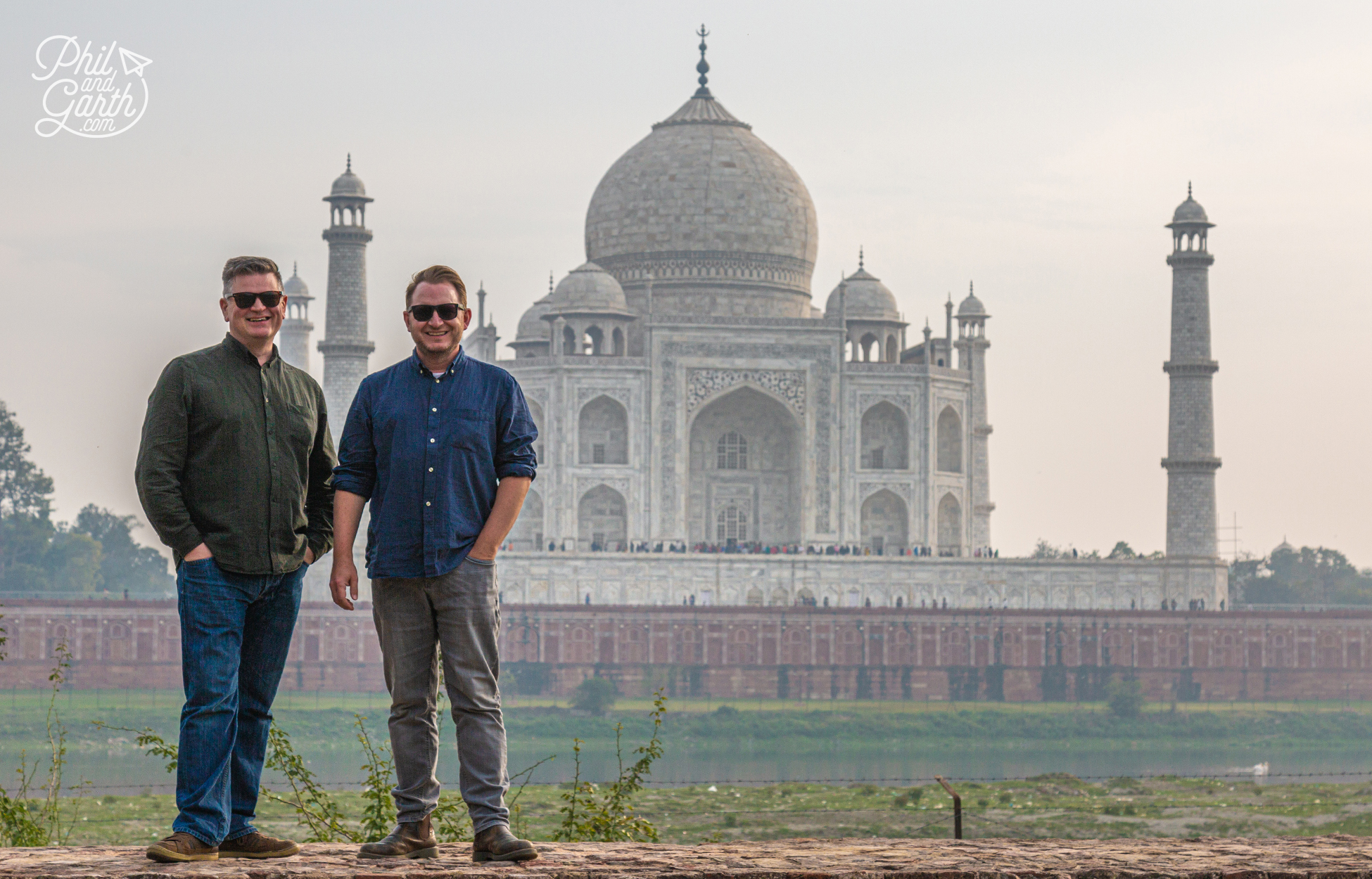
Mehtab Bagh is the perfect spot for photos of the Taj Mahal without all the crowds
What’s really interesting about the Mehtab Bagh park is that another Taj Mahal was going to be built here. The foundations were laid which we saw, but it was never finished. It was going to a mirror image of the Taj Mahal built in black marble containing the tomb of Emperor Shah Jahan so he could the look across the river to his wife, Mumtaz in the white Taj Mahal. However before Emperor Shah Jahan died he was put in prison by his son! perhaps because black marble costs 10 x more than white marble?
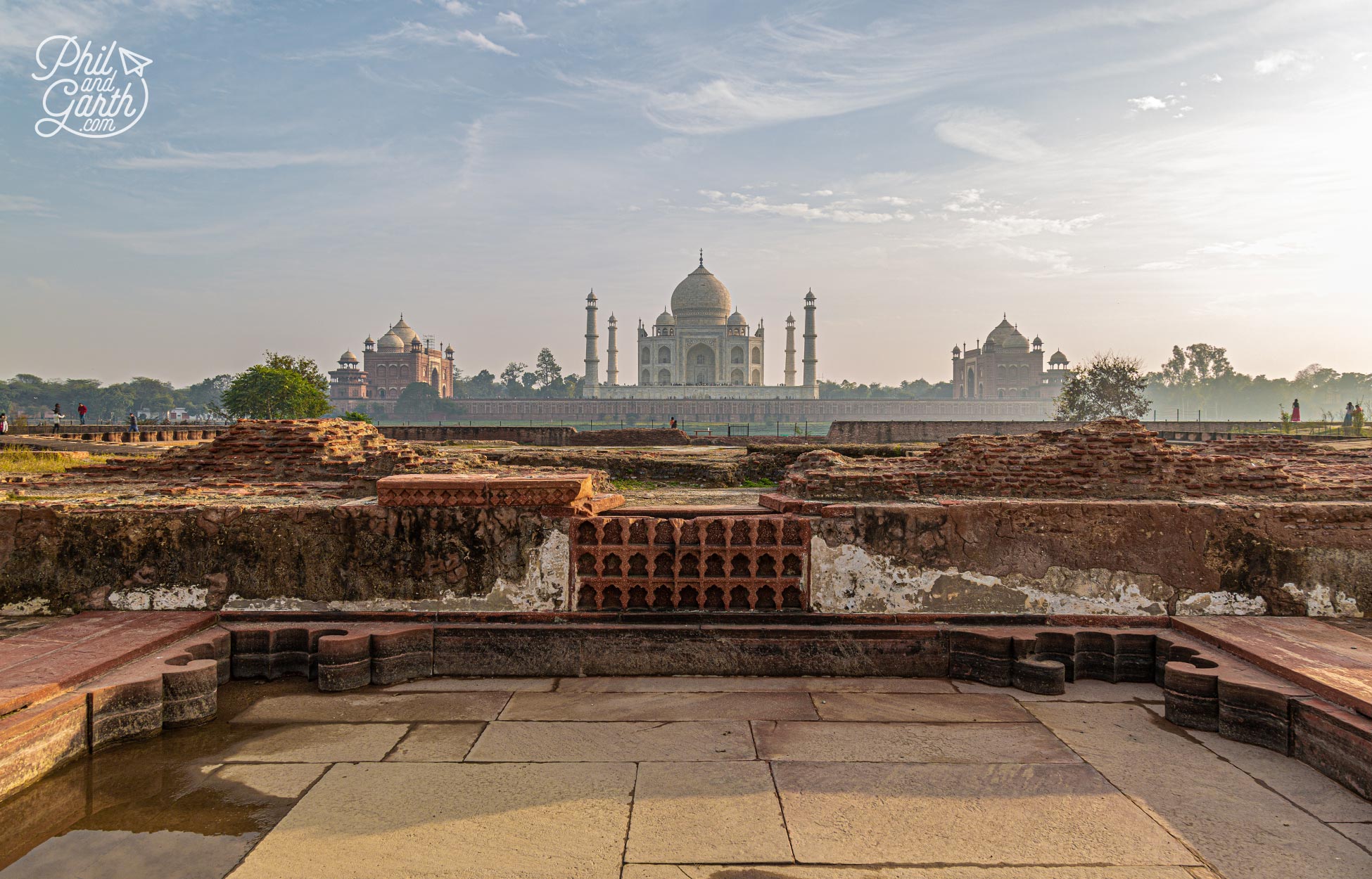
The foundations of the Black Taj Mahal in Mehtab Bagh
Day 2 – Agra Itinerary
Taj Mahal At Sunrise (In The Fog!)
Day 2 of our Agra itinerary starts with an early morning wake up call. Before we knew it blurry eyed we were off in a tuk-tuk back to see the Taj Mahal at sunrise to beat the huge crowds. Even thought we’re not morning people this was a once in a lifetime opportunity we weren’t going to miss. It was incredibly cold and foggy but very atmospheric. At 5.40am we arrived at the entrance to be first in the queue and we were! All we could hear were the sounds of dogs howling in sync to the call to prayer.
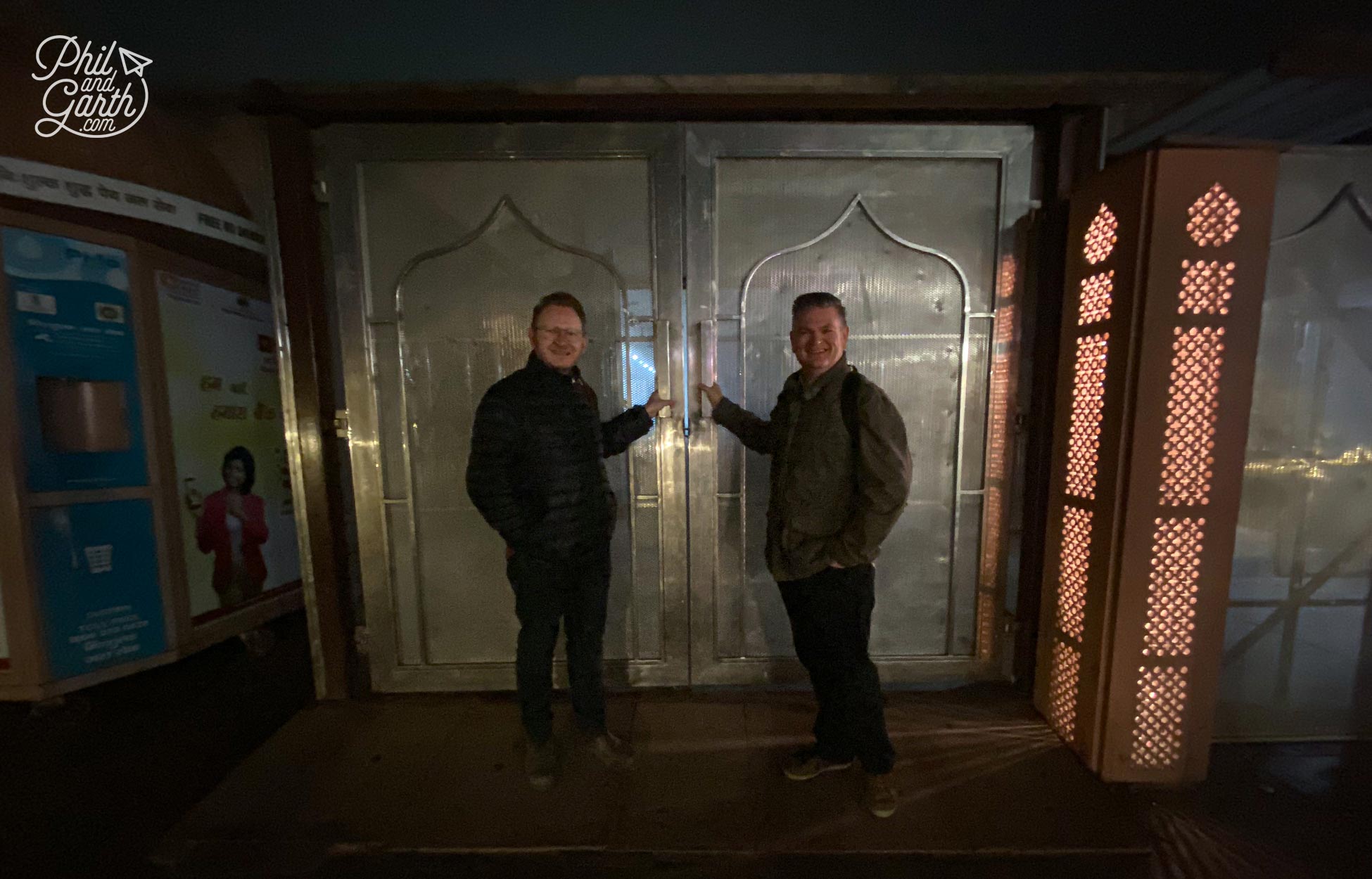
First in the queue at 5.40am
At 6am the doors opened for security which is understandably very tight. There’s lots of banned items you can’t take inside the Taj Mahal. Anything sharp that could damage the Taj, no chemicals including hand sanitiser, no food, no books, no selfie sticks, no power banks, no tripods, no extra batteries. So try to take as little as possible as you’ll get through much quicker. Garth had the rucksack with just our camera, passports, a spare memory card and a small water bottle. Phil didn’t have anything and was waived through.
Video cameras are not allowed, however you can use a video camera on the step just inside the main gate after that you must leave your video camera in locker at cost of 25INR. One member of our small group tour had a camcorder that had to be placed in a locker, such a weird rule because they allow DSLR cameras and mobile phones that can take video, which everyone was doing. The rules change regularly according to our guide, so worth double checking out the Taj Mahal’s official website for the latest restrictions.
Our local guide was Didi Khan took us towards the North gate entrance which is the main gate. As we walked through the entrance our hearts sunk as the Taj Mahal was completely covered by fog. We could hardly see our hands in front of our face! but we did get very fleeting glimpses of the main dome and minaret towers. It was incredibly disappointing but hey we’ve had plenty of experiences when travelling where we got unlucky with the weather like when we tried to see one of the world’s biggest buddha statue in Hong Kong. The tickets allow you 3 hours at the Taj, so we were optimistic the fog might lift. Whatever happened we knew we would be able to go inside the tomb chamber without the effects of the unfortunate weather.
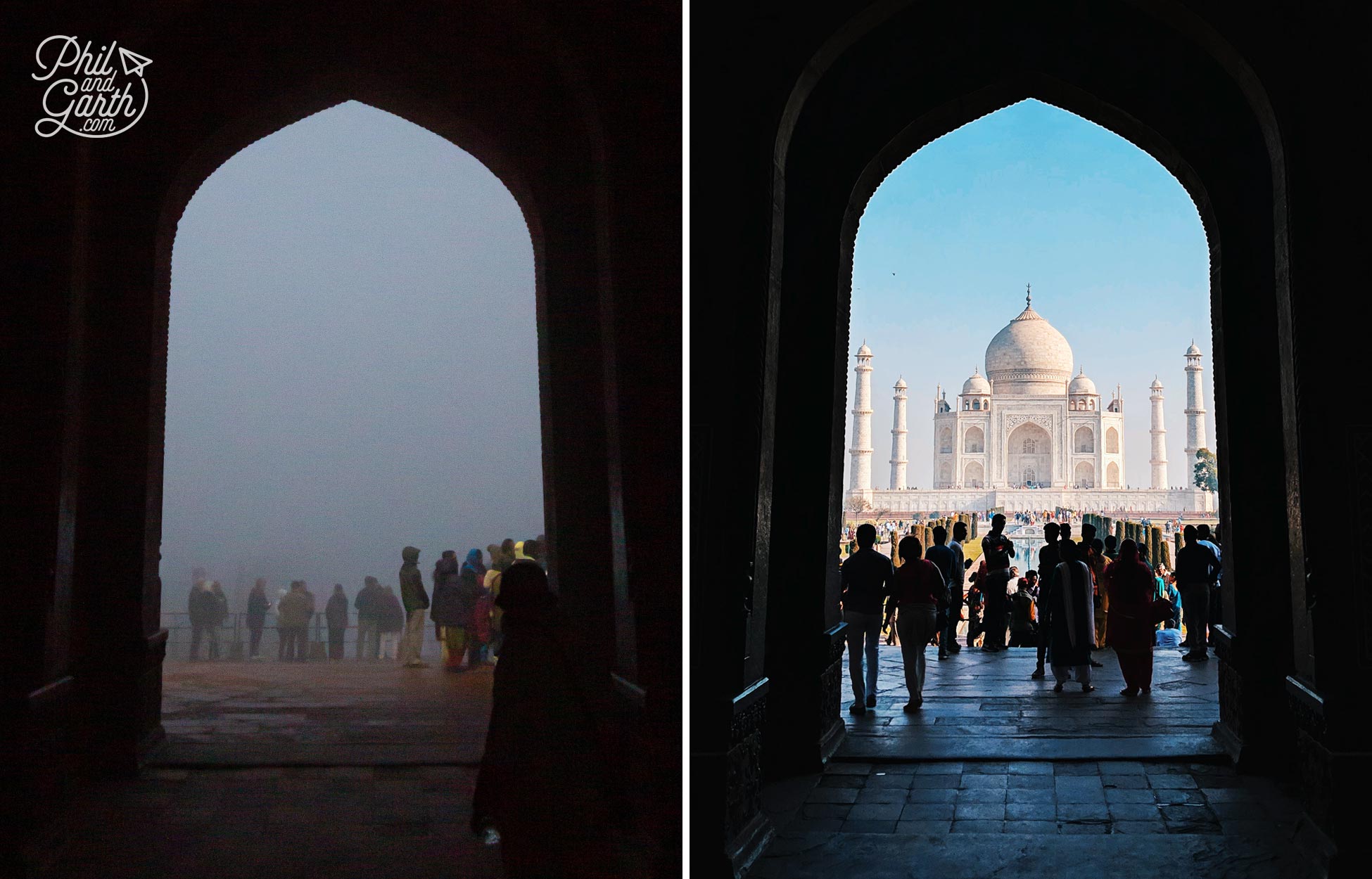
The classic shot of the Taj Mahal from the North gate entrance – our foggy view … and what we should have seen!
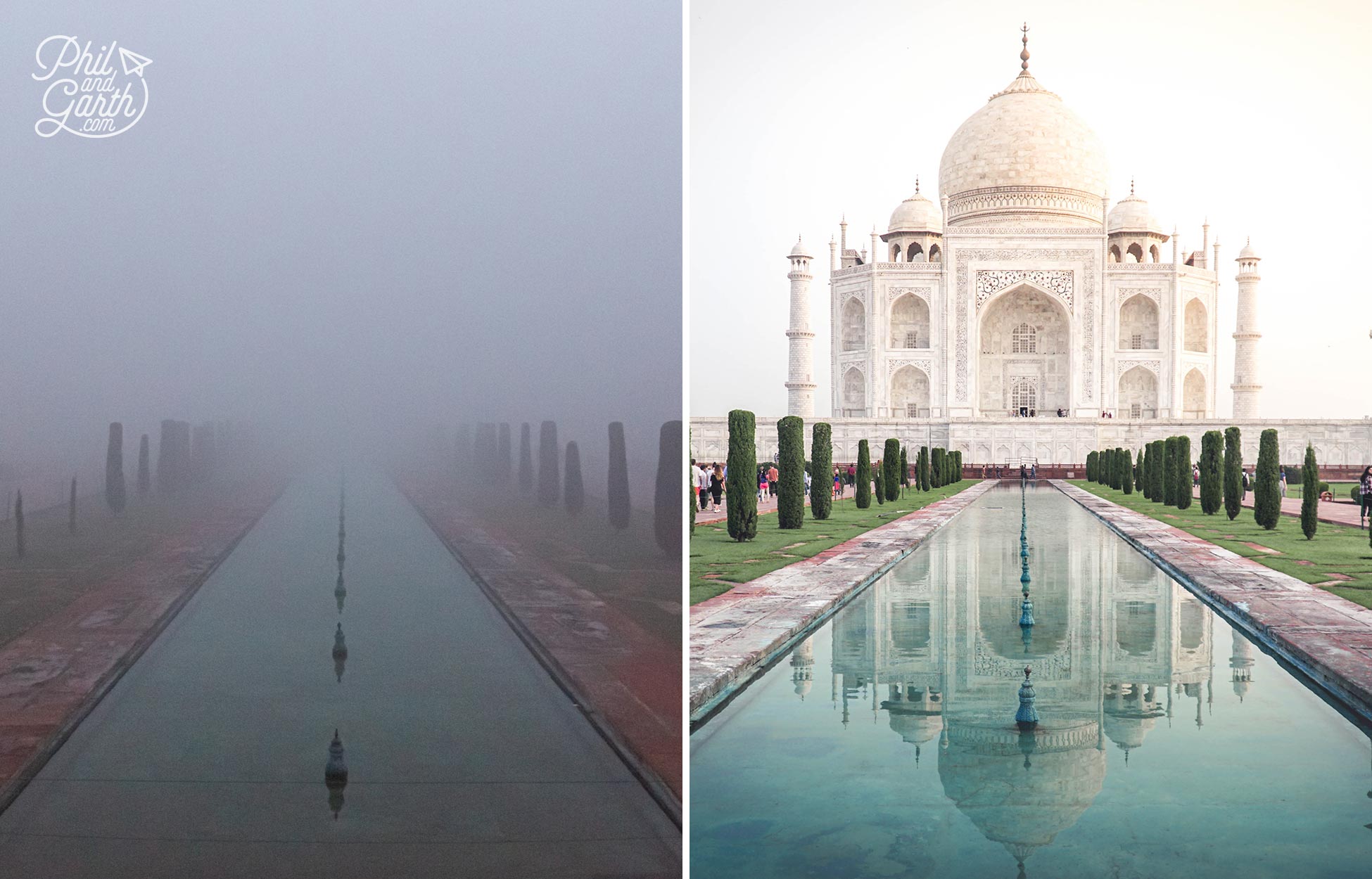
Our view of the Taj Mahal from the North gate … and what we should have seen!
The ‘Diana Bench’
Despite the fog the biggest queue for photos was at the ‘Diana Bench’ as our guide called it. Remember the photo when Princess Diana sat in solitude in 1992? Well we can tell you that everyone has got it wrong, even our guide Didi. The actual ‘Diana Bench’ is the one behind our heads, it’s the one closest to the Taj Mahal.
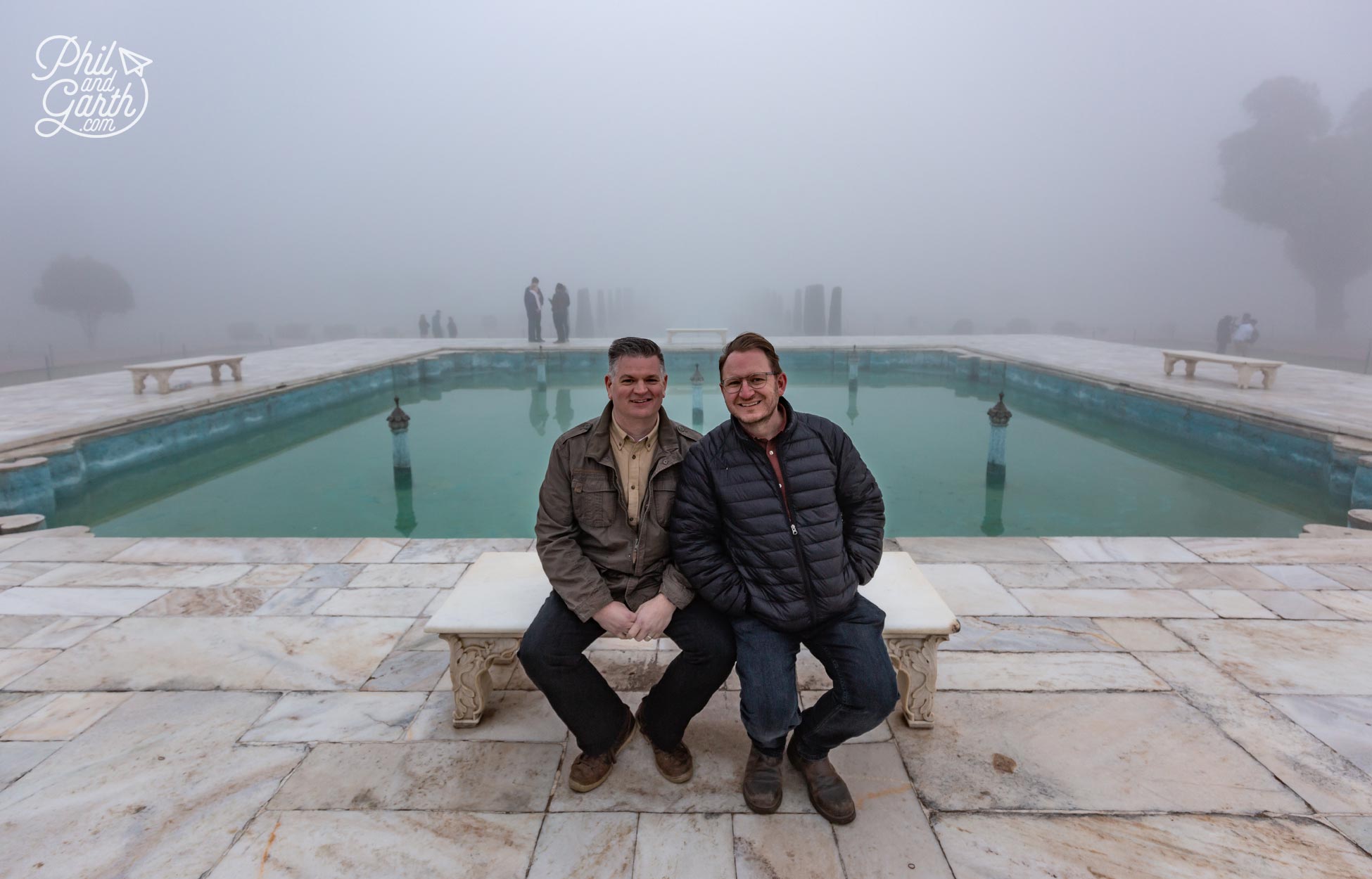
The ‘Diana’ bench at the Taj Mahal
Outside the Taj Mahal Tomb on the Upper Terrace
After putting on our protective shoe covers we were allowed up-close on the upper terrace (there’s an additional fee for this on top of the main ticket price, go for the ‘high value’ ticket for the shortest queues). It’s even more beautiful up here as we could see and appreciate the intricacy of all the stone inlay details. Hundreds of precious stones have been carved to create designs of roses and poppies using the same ‘pietra dura’ inlay technique we saw at the Baby Taj. The Arabic calligraphy on the entrance is a verse from the Quran and is actually an optical illusion. Look closely and the type gets bigger in size towards the top. Sadly we could tell the fog wasn’t going to lift 🙁 it was too thick, but it did give the mausoleum an added ethereal quality.
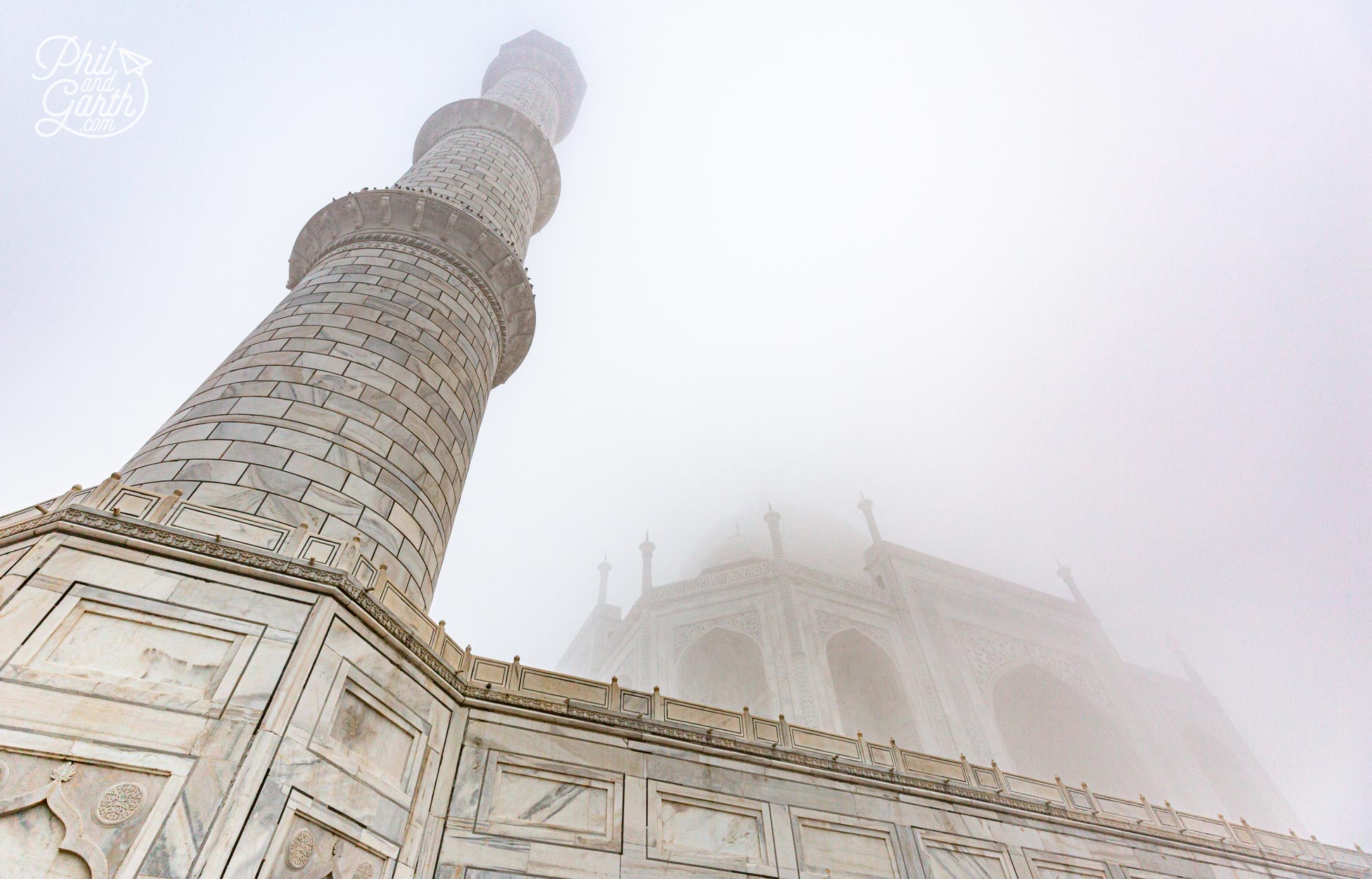
One of the corner minarets as we approached the upper terrace of the Taj Mahal
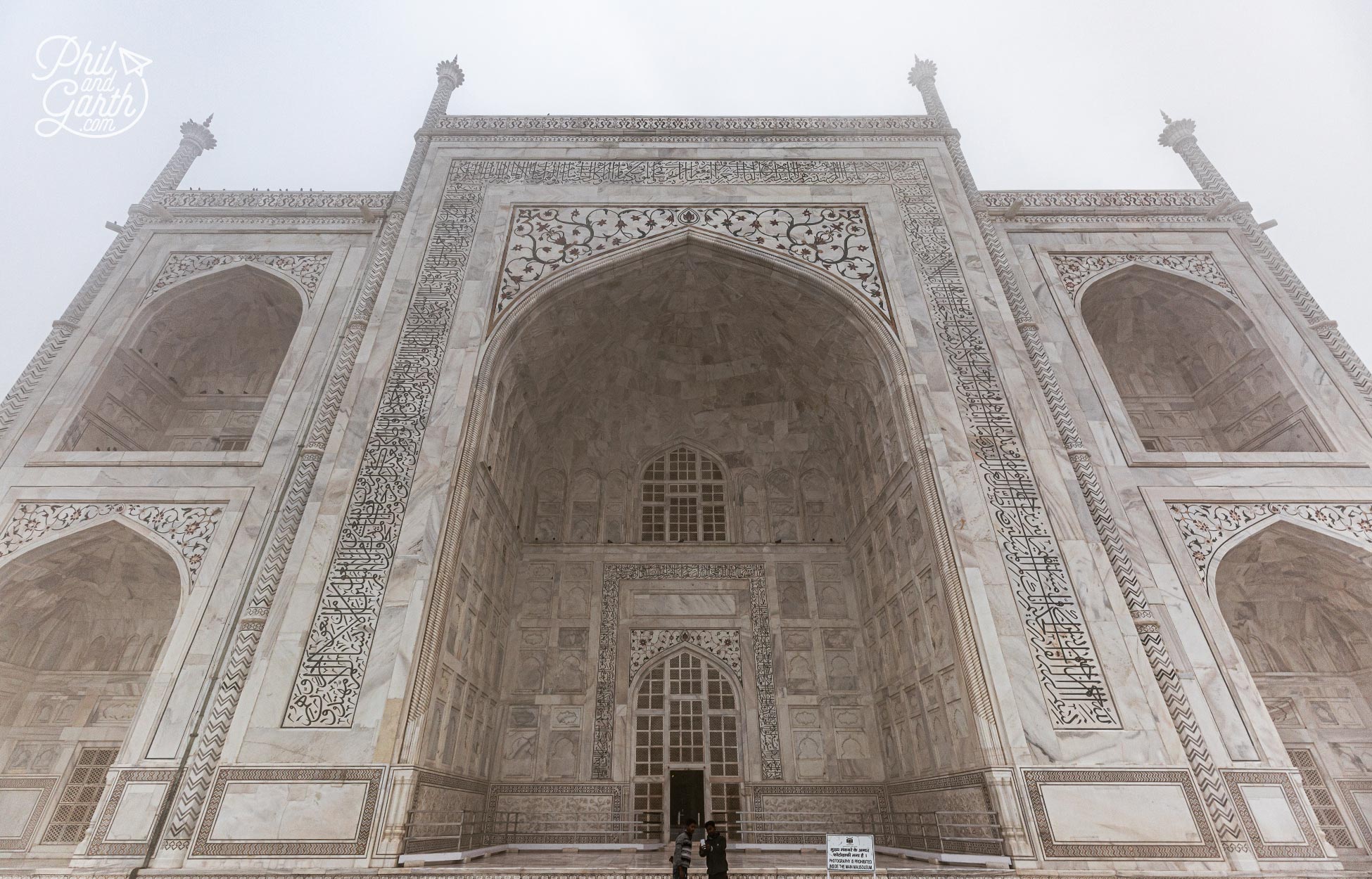
Entrance to the mausoleum
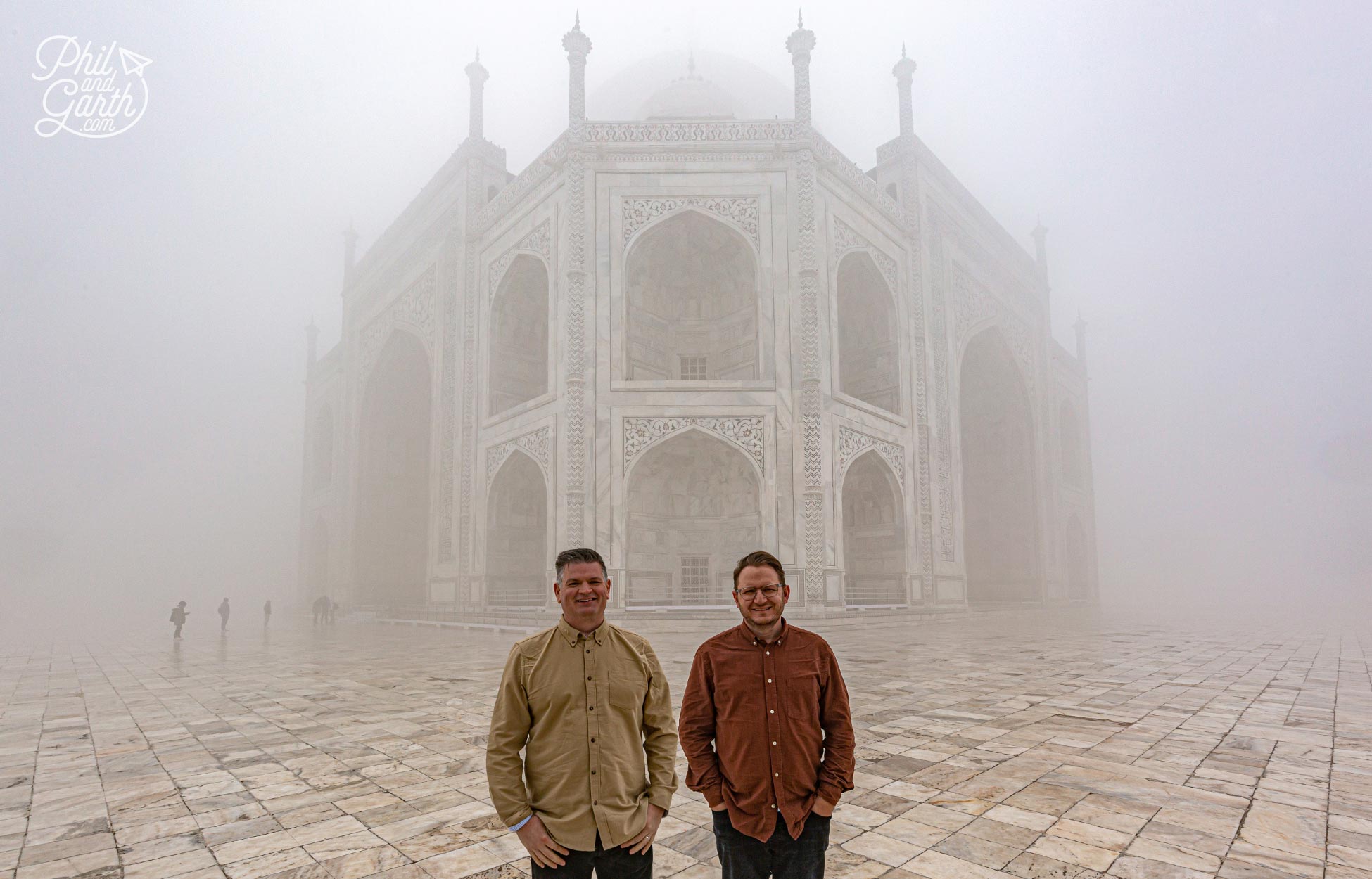
Phil and Garth stood on the upper terrace
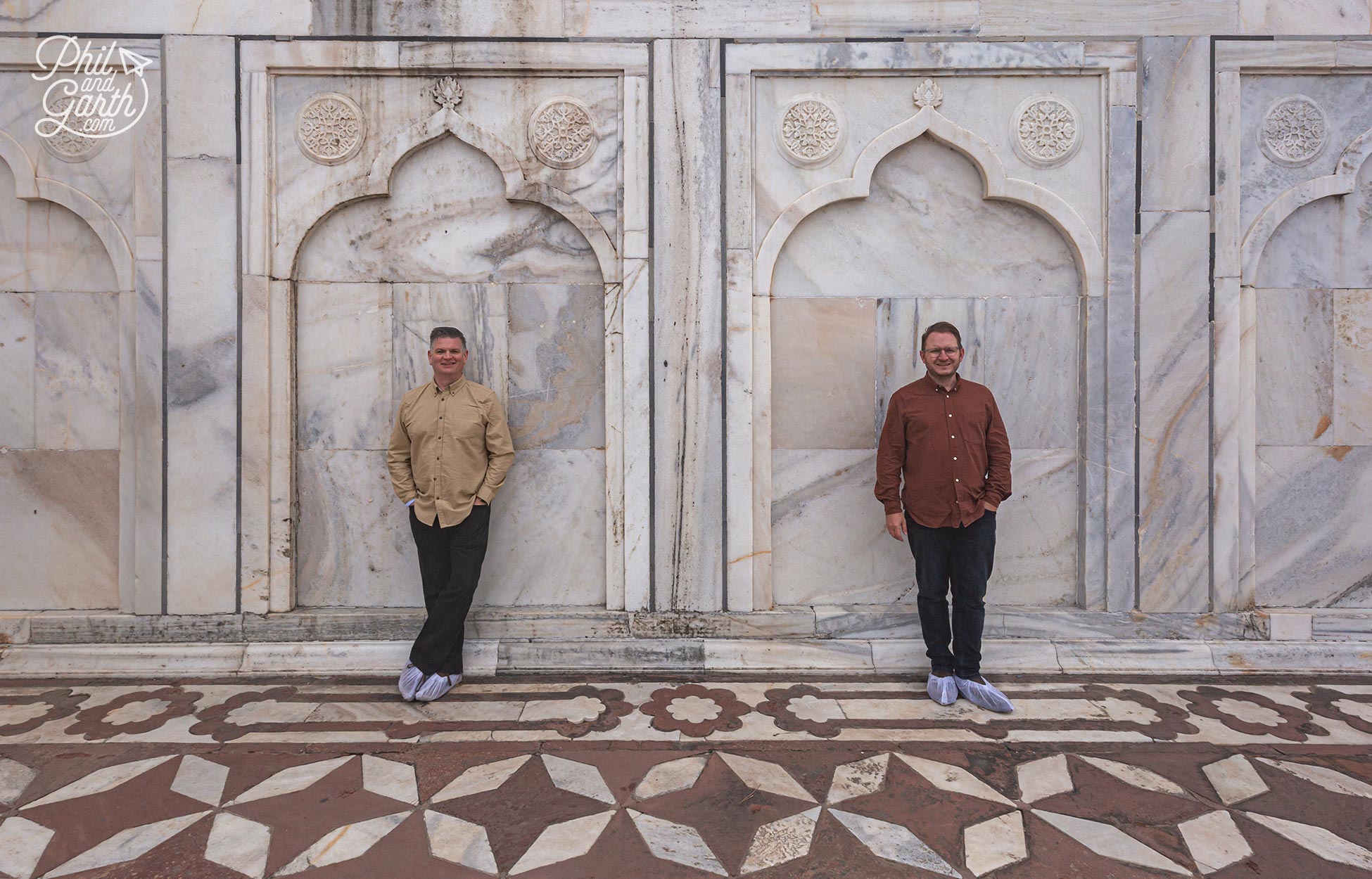
Phil and Garth stood next to a wall of the Taj Mahal
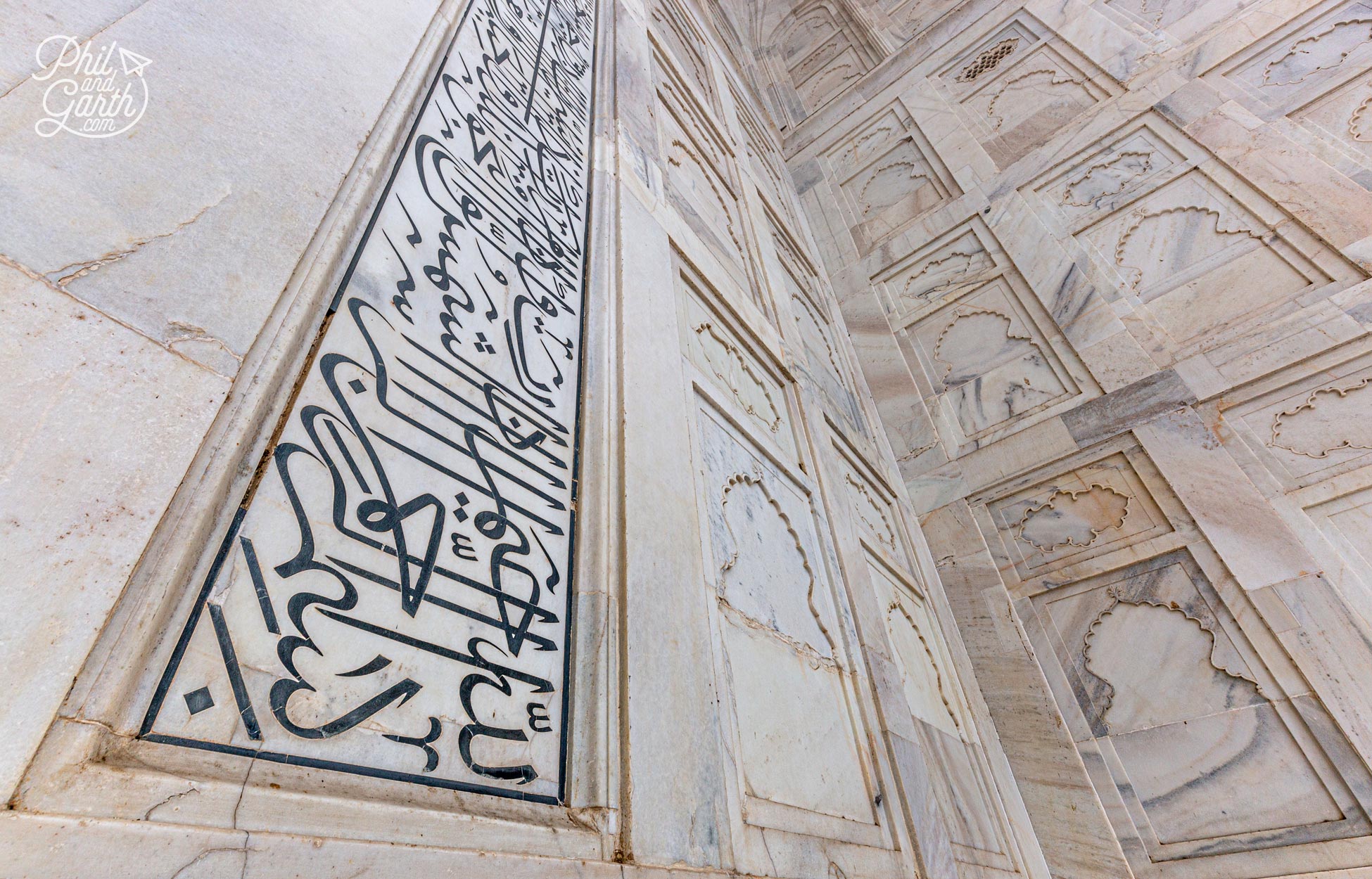
The Arabic calligraphy surrounding the entrance is a verse from the Quran
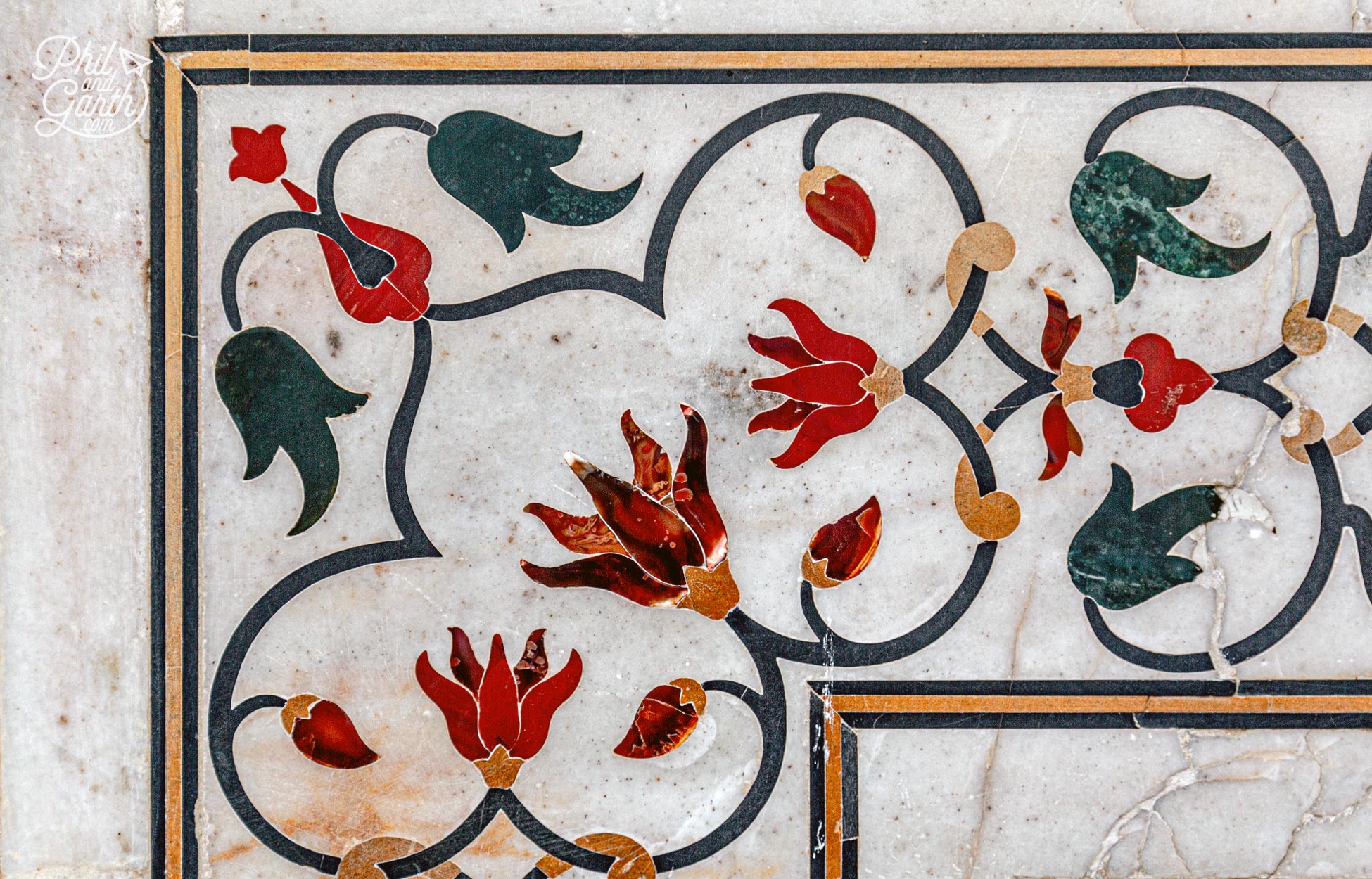
Close up of the incredible craftsmanship
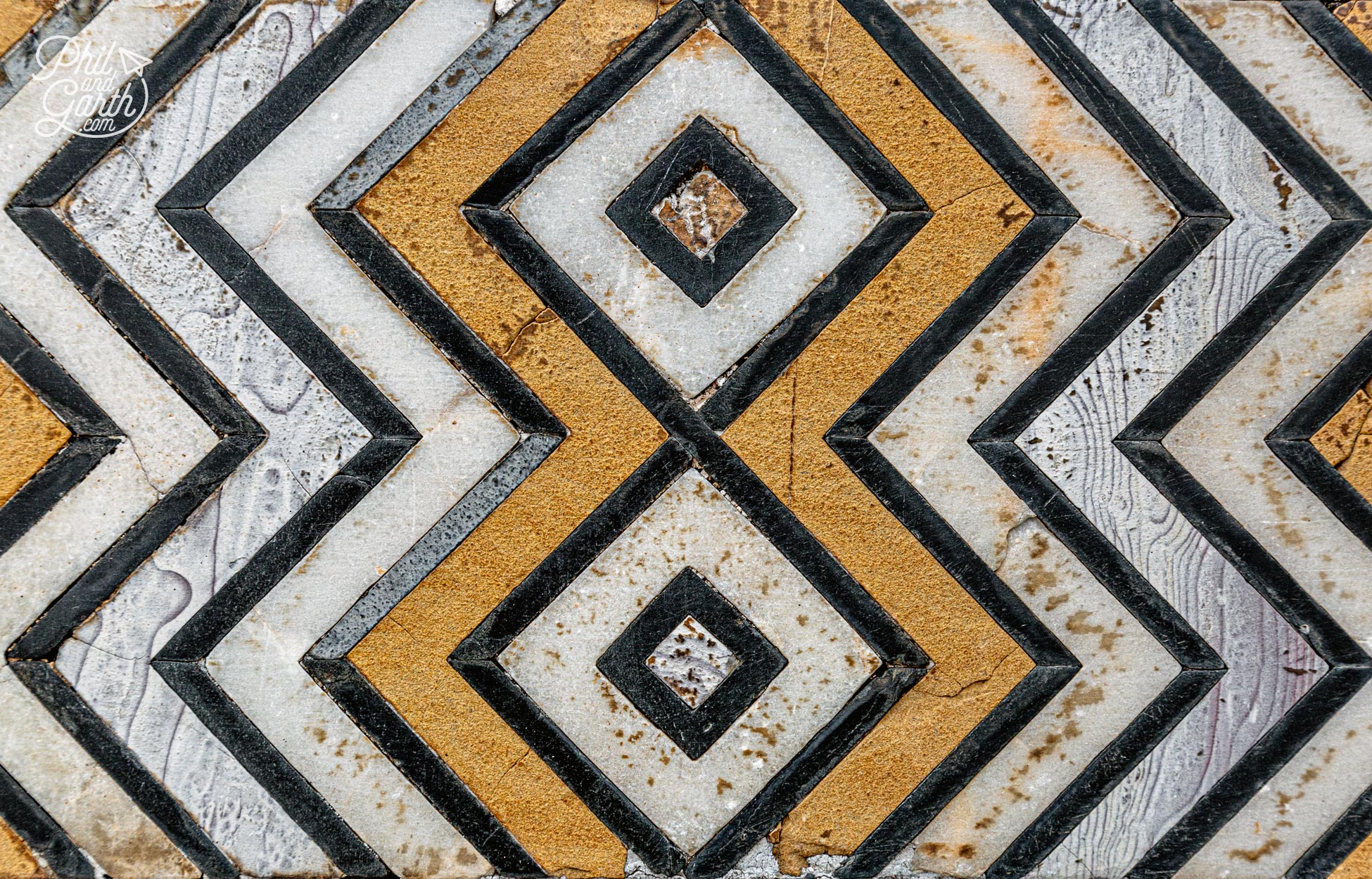
Bold and contemporary looking pattens made of precious stone
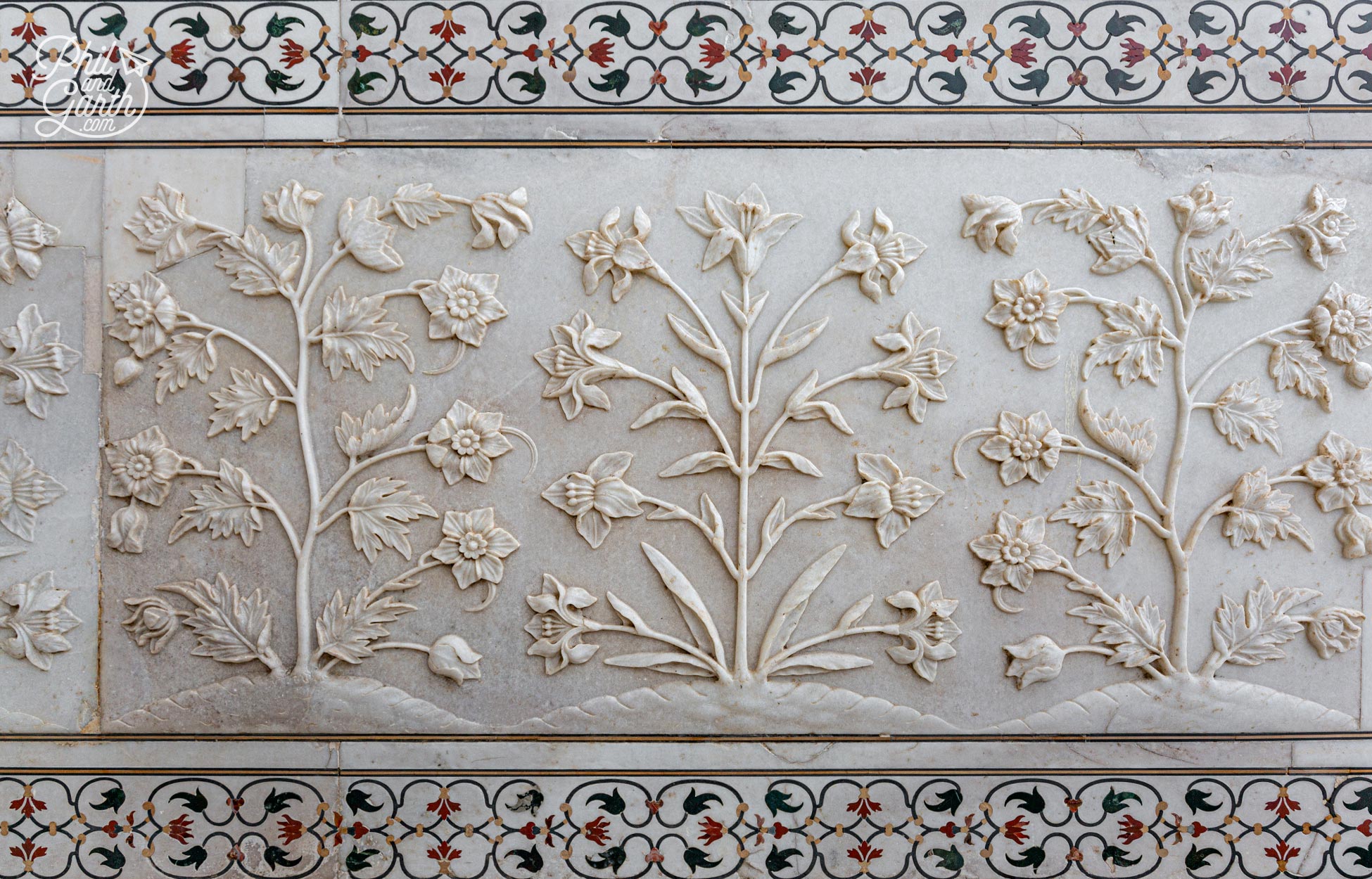
Marble bas-relief detail of flowers
Inside The Tomb Chamber
The ivory white walls continue as we walked inside the tomb chamber. There was a lovely perfume smell from smoldering incense, outside it smells of smoke from people burning rubbish which is very common in India. Inside it’s incredibly beautiful, the caskets of Mumtaz Mahal and Emperor Shah Jahan are now replicas, the real ones are below ground. Surrounding the caskets is a stunning lattice wall with of lotus and jasmine flower patterns. Photography is not allowed inside so we can’t share any pictures.
A security guard demonstrated the translucency of the coloured glass within the lotus and jasmine flowers close-up using a torch. As he shined his light the flower petals came to life with colour and shapes of the cut glass. We were so impressed we decided to go around again, this time a different security guard offered to show off the acoustics of the chamber. He asked us in turn what our wives names were called, we didn’t like to cause a scene so played along using family names. It was brilliant as we heard the echoes fade away over time of Garth’s mum’s name. “Tip please!” we were then asked, which slightly spoilt the magic!
Garden Design, Mosque & Guest House
The landscaped gardens are just as beautiful, from what we could see! 4 channels of water symbolise the 4 rivers of life – milk, water, wine and honey. They flow to a central point, dividing the garden into 4 equal squares. This symbolises paradise and is a common feature of Islamic garden design. The long water channels are lined with cypress trees which symbolise life and eternity. On each side of the Taj Mahal are 2 red sandstone buildings – a mosque and a former guest house called Mehmaan Khana which is now empty.
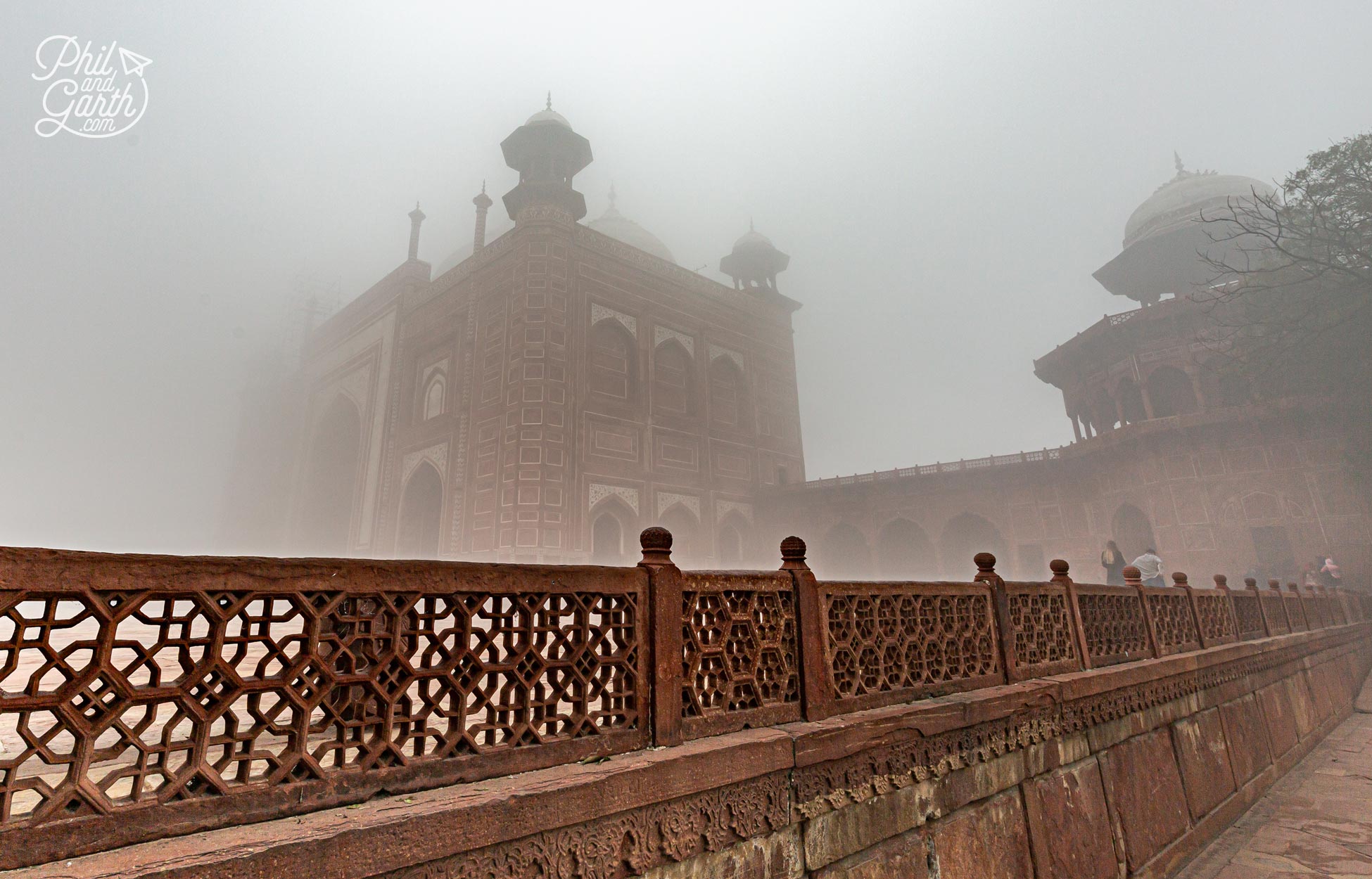
The Mehmaan Khana guest house appearing through the fog
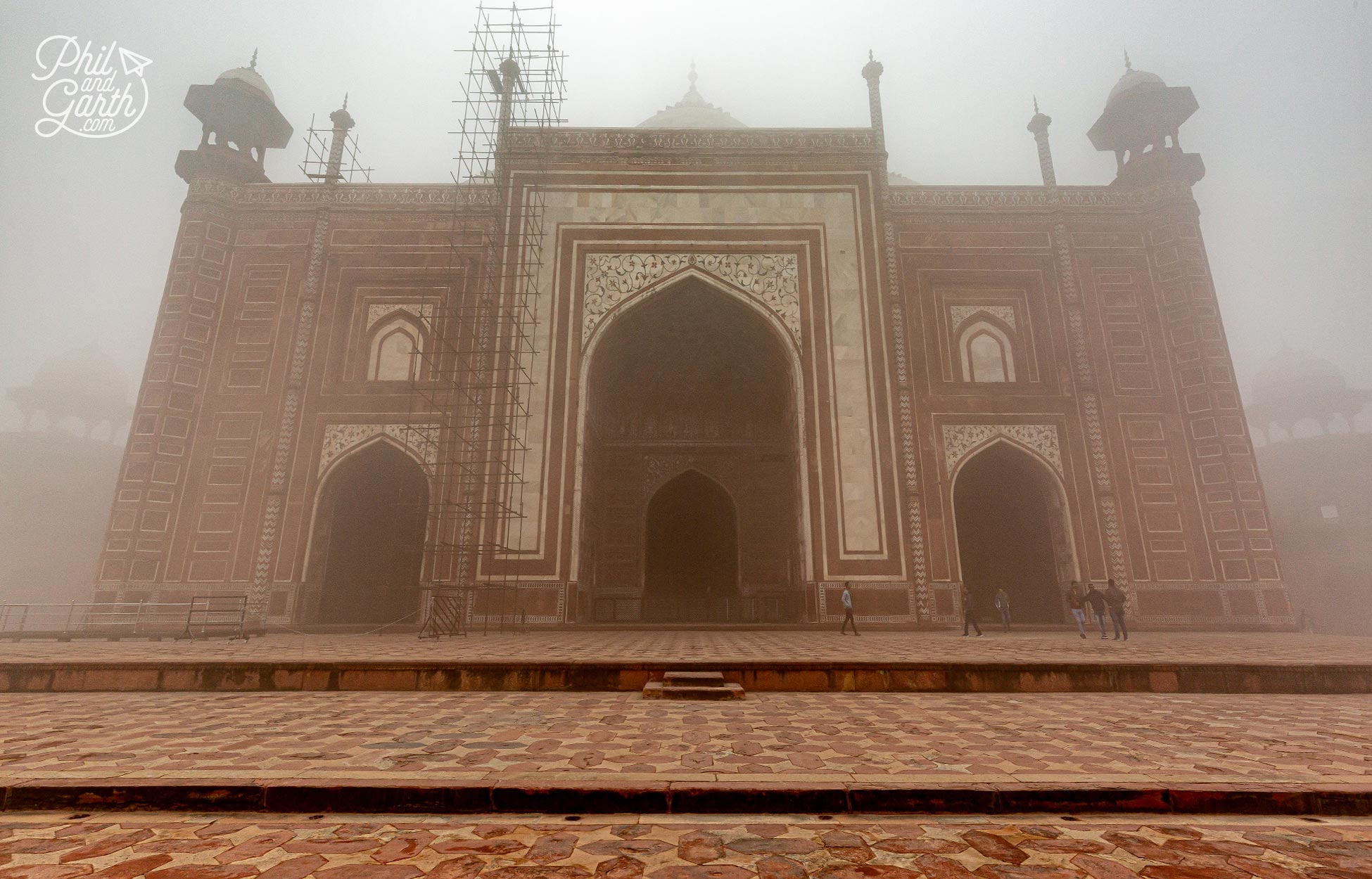
The guest house mirrors the architecture of the mosque opposite
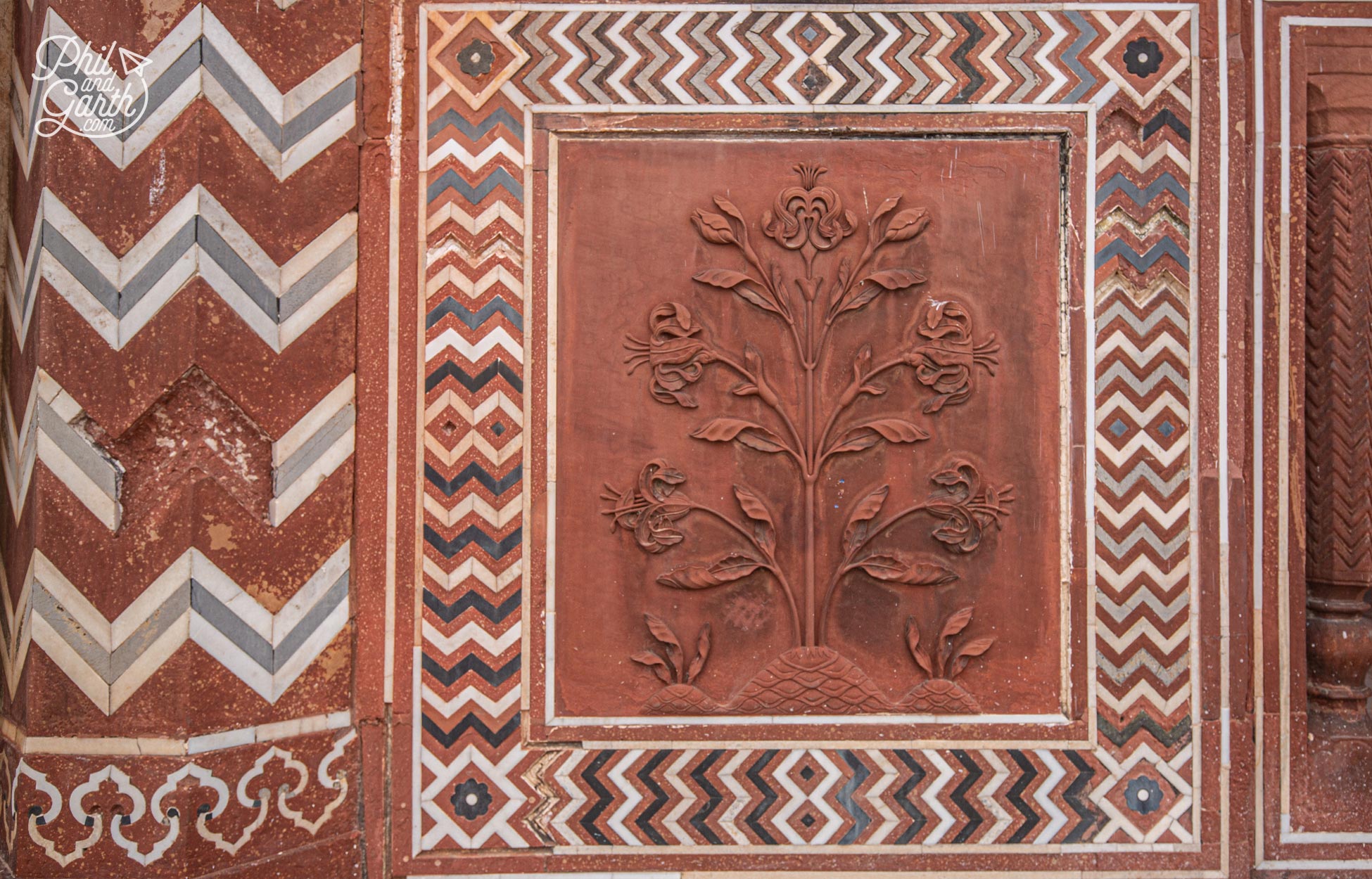
Details of the sandstone wall and inlay stones
Our Foggy Taj Mahal Experience!
So our experience of seeing the Taj Mahal at sunrise didn’t go quite to plan, however we were grateful we had seen it the day before. Fog is common in December and January at sunrise, so it would be wise to book a couple of nights in Agra during these months for a second go at sunrise (FYI – The fog lifted by 2pm). Finally when you leave the Taj Mahal exit be prepared for everyone wanting to sell you something. There’s lots of hawkers and souvenir shops. We also saw 10 people begging at tourist mini bus windows asking for money.
Sadly air pollution from neighbouring industries is damaging the white marble and turning it yellow. The pollution is putting the Taj Mahal under threat of short term closure added to that over 7 million people visit each year, so tourism officials continue to consider how to protect its future. We’re so glad we got the opportunity to visit, it’s exquisite and somewhere we’ll never forget and a huge bucket list tick!
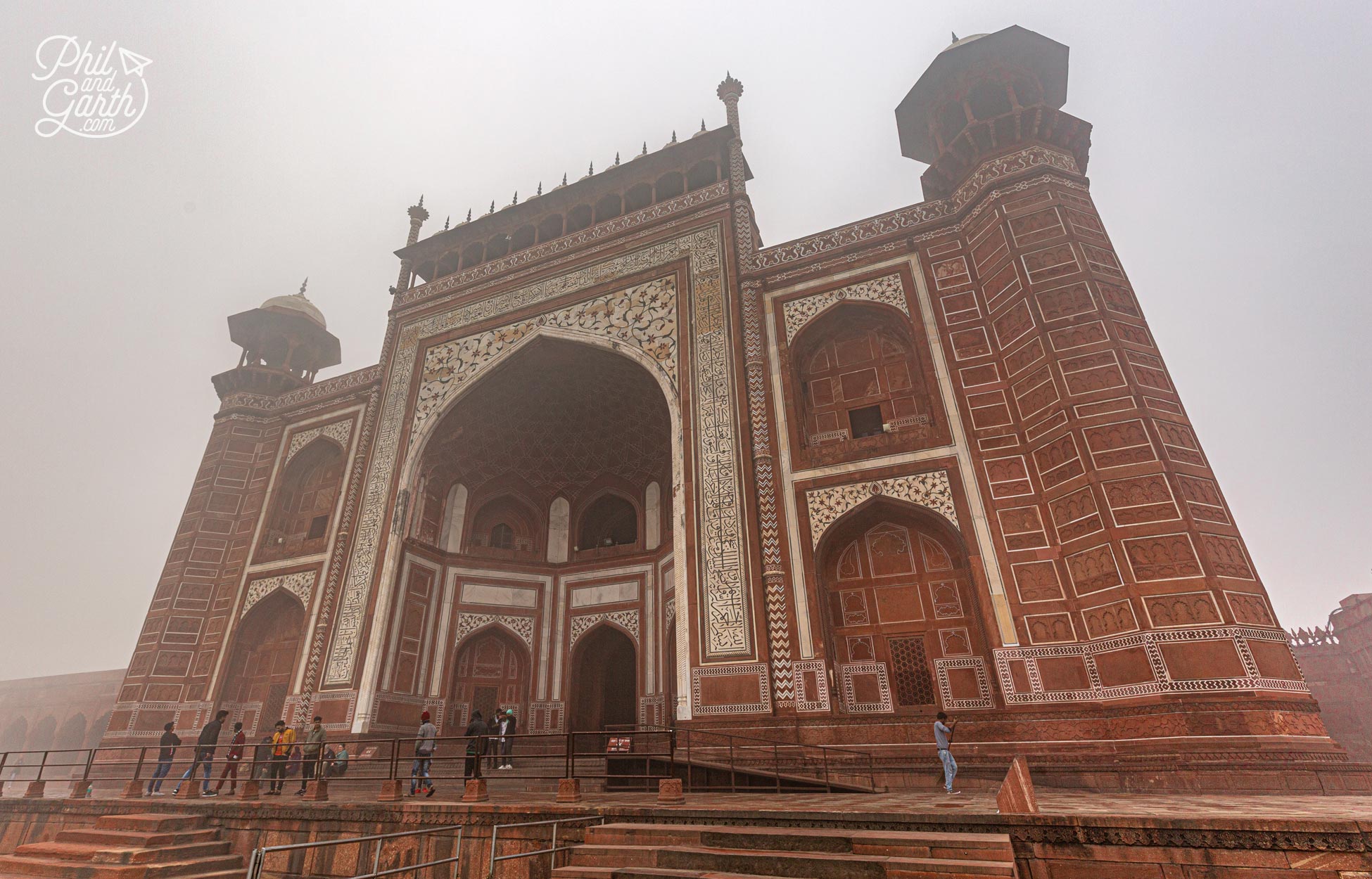
The north gate entrance and exit to the Taj Mahal
Fatehpur Sikri
Getting There
From the Taj Mahal we returned back to our hotel for a hearty Indian breakfast and then set off again in the morning for Fatehpur Sikri. The traffic out of Agra was like a video game with tuk-tuks, cars and motorbikes weaving in and out. The journey takes about an hour and passes through some nice countryside. It’s certainly not boring when there’s so much life and unusual sights to see right on the streets.
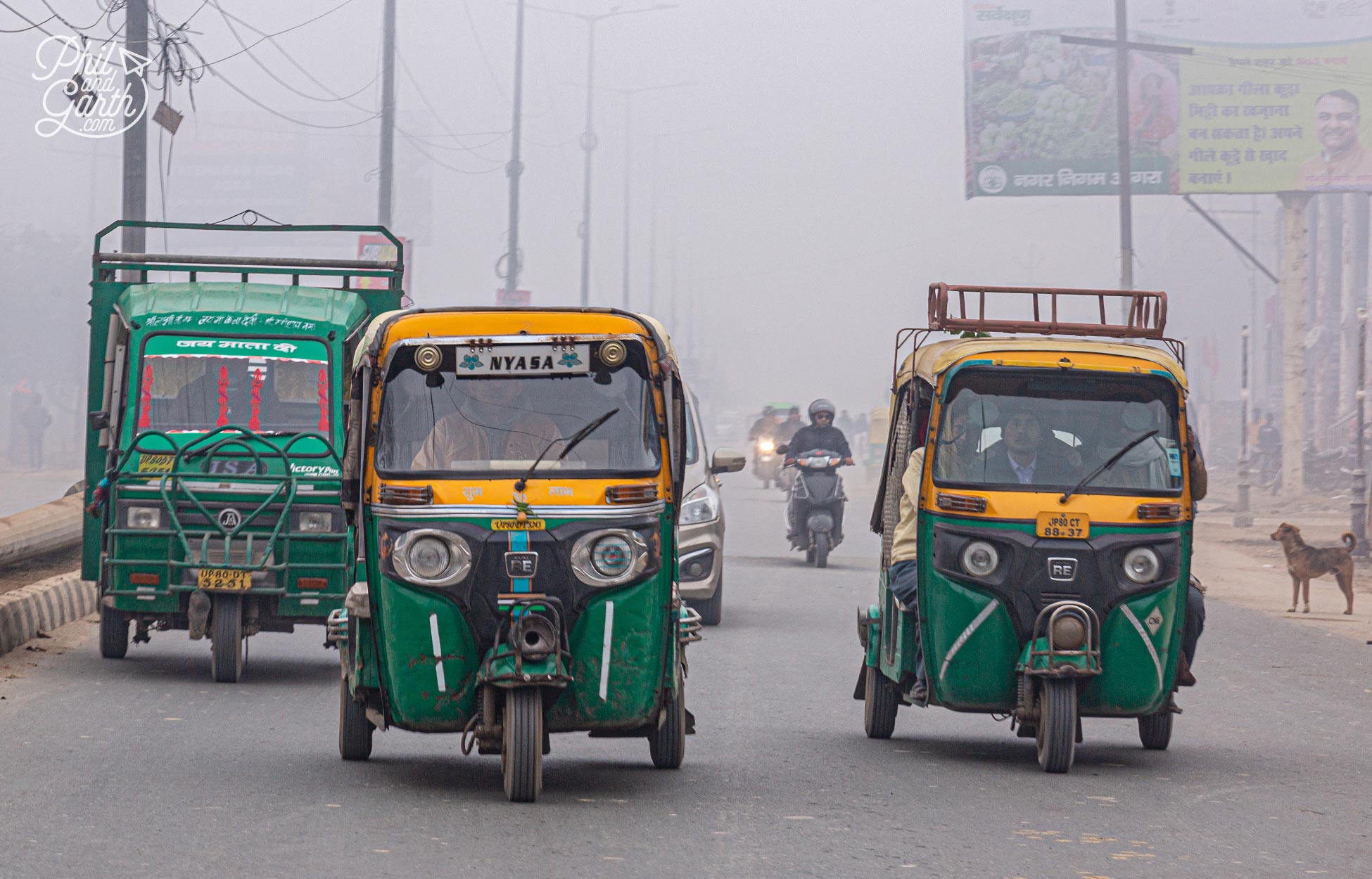
Tuk tuks to Fatehpur Sikri
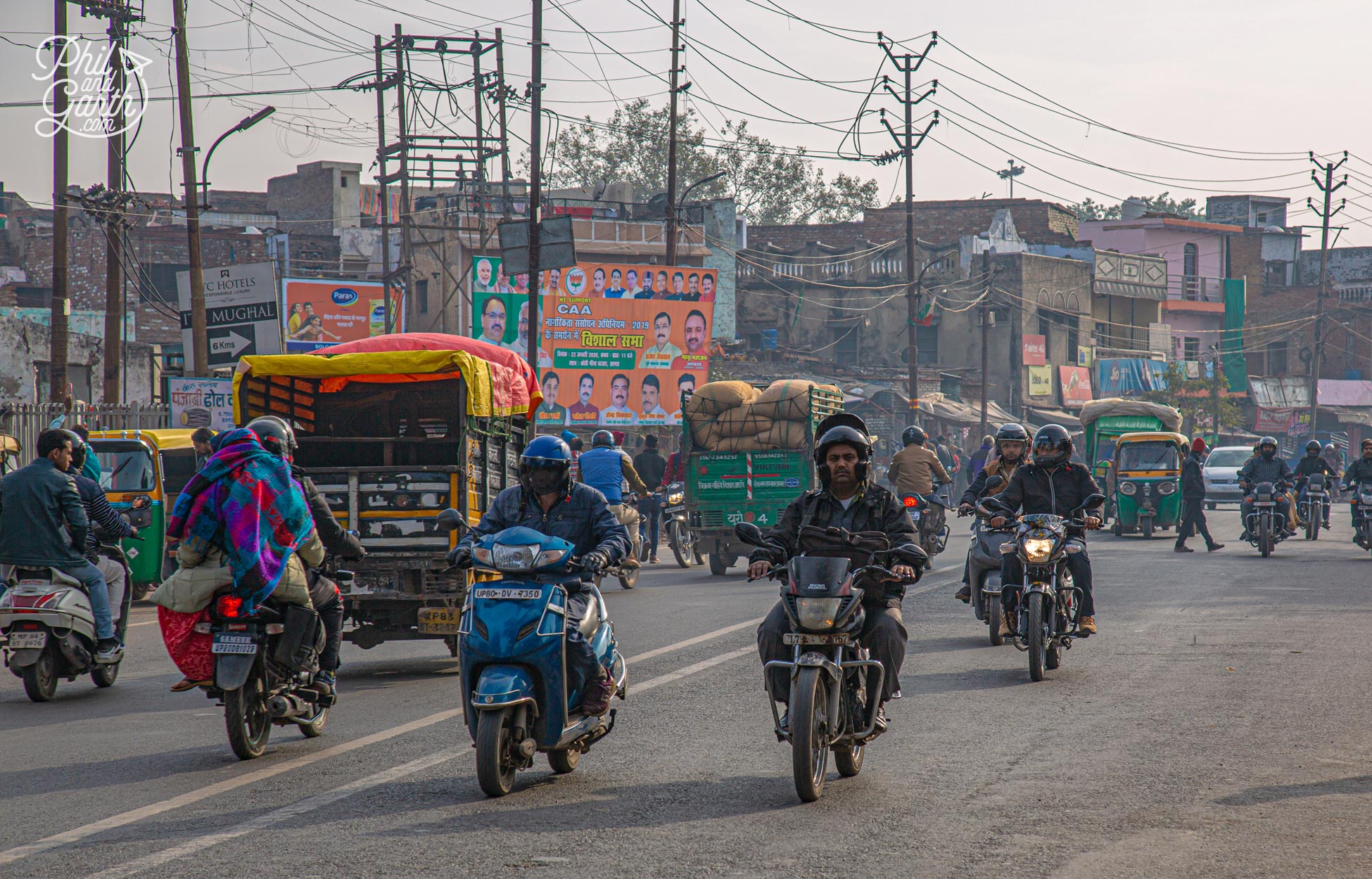
Driving through the traffic in Agra
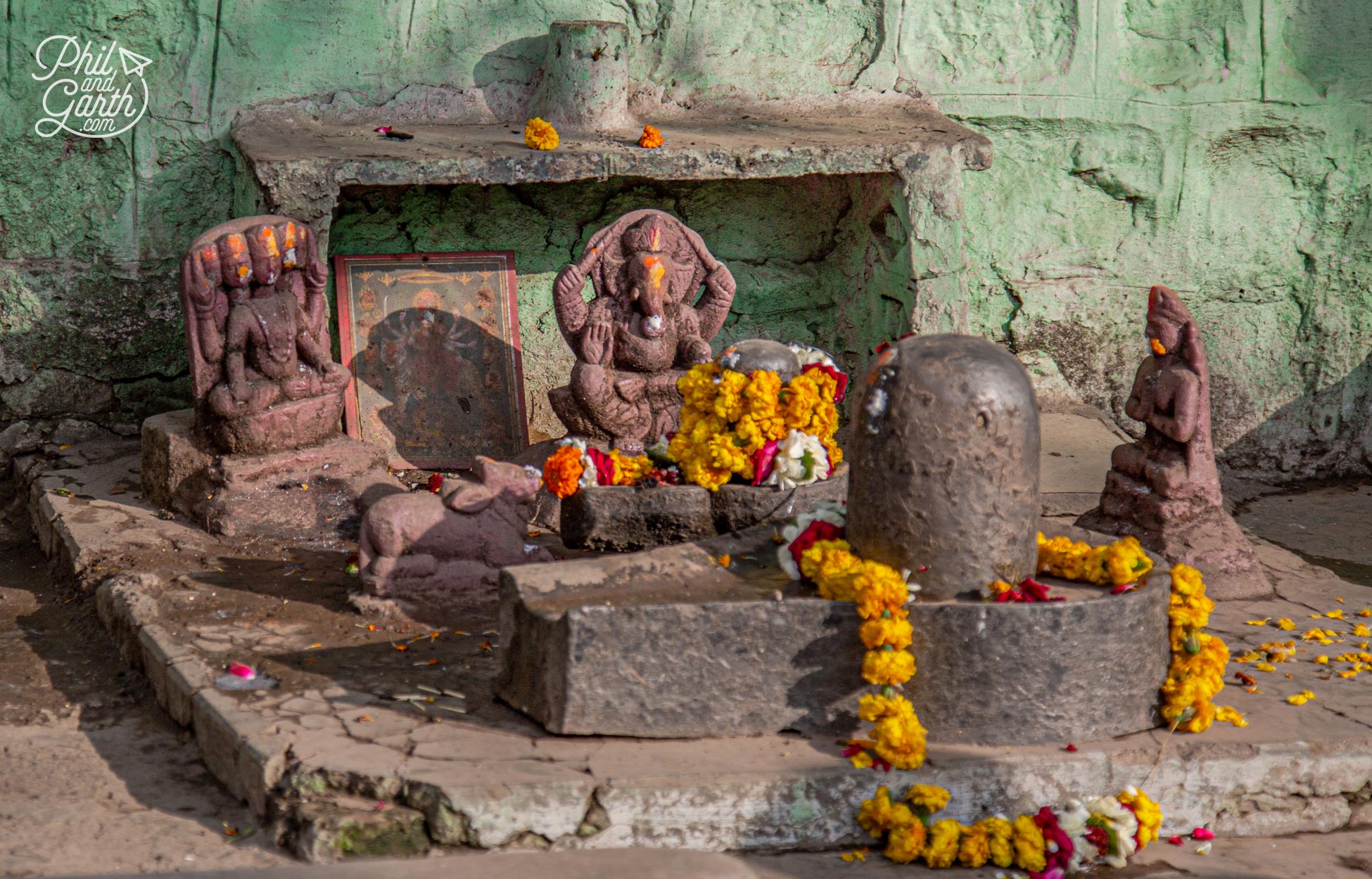
A little Hindu shrine next to the road
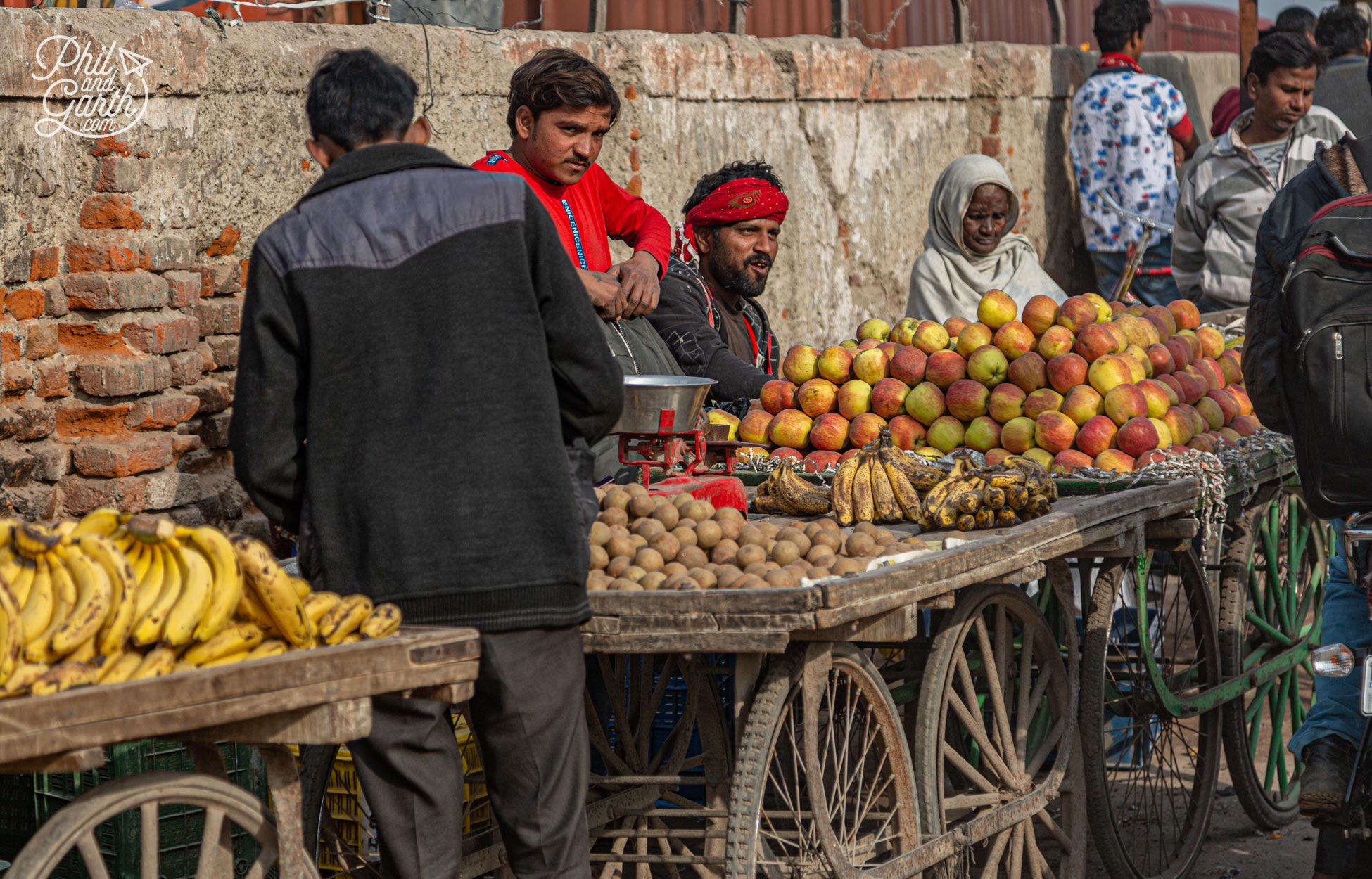
Fruit and vegetables for sale
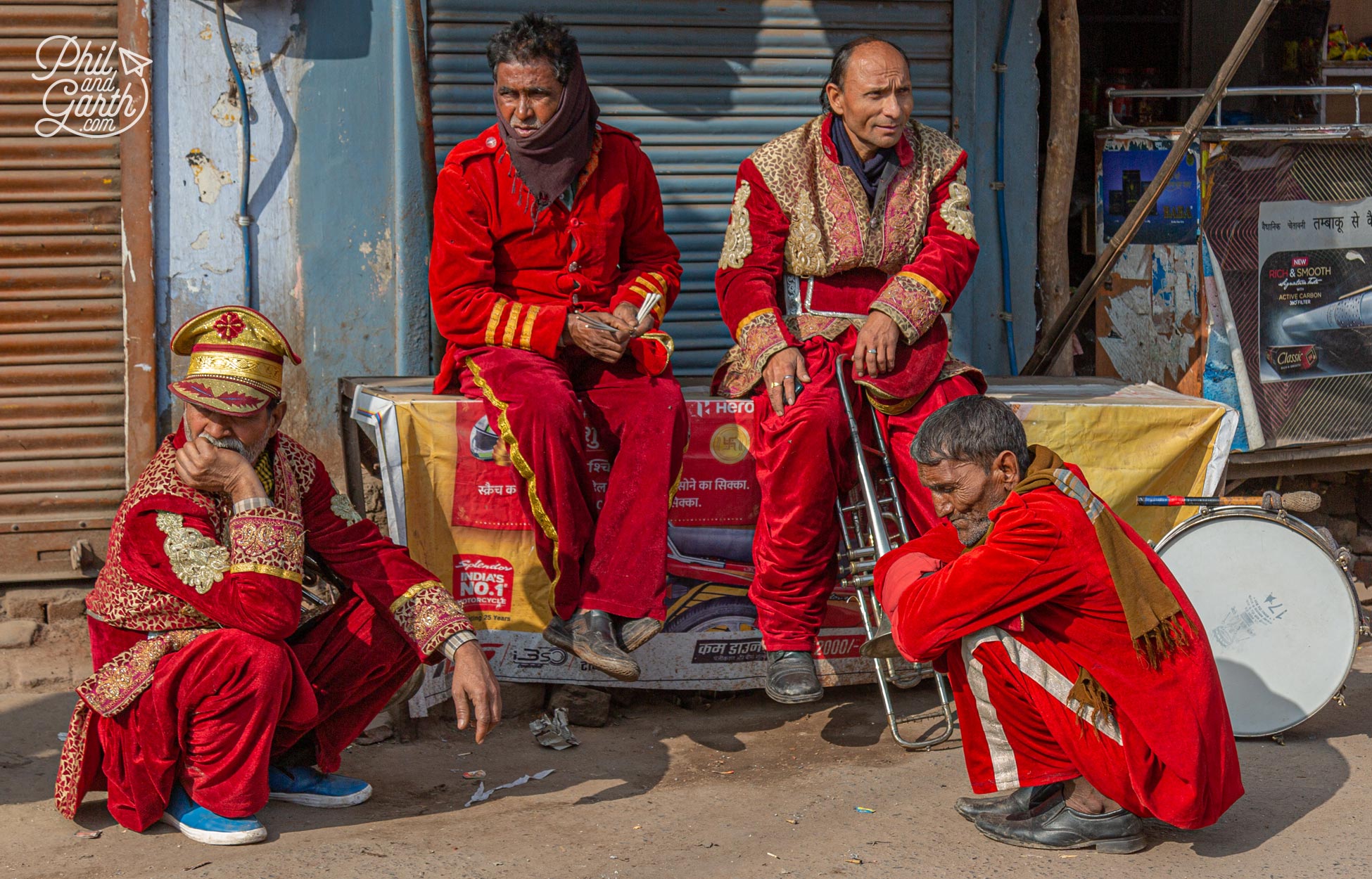
Musicians taking a rest on the roadside
About Fatehpur Sikri
The UNESCO World Heritage listed Fatehpur Sikri was built in 1571 by Emperor Akbar as the capital city of the Mughal Empire. However due to a lack of water it was abandoned by Emperor Akbar in 1585, just a decade after it was built. Fatehpur Sikri was completely abandoned by 1610 and remained a ghost town for hundreds of years.
Inside the complex is impressive because the monuments and temples are in very good condition. It’s off the beaten path, but well worth a visit especially because the crowds here are small. The buildings use a mix of Islamic and Persian architecture. Emperor Akbar built 3 palaces for each one of his wives. Fatehpur Sikri also includes one of the largest mosques in India – the Jama Masjid which has an enormous entrance gate called the ‘Bulandh Darwaza’.
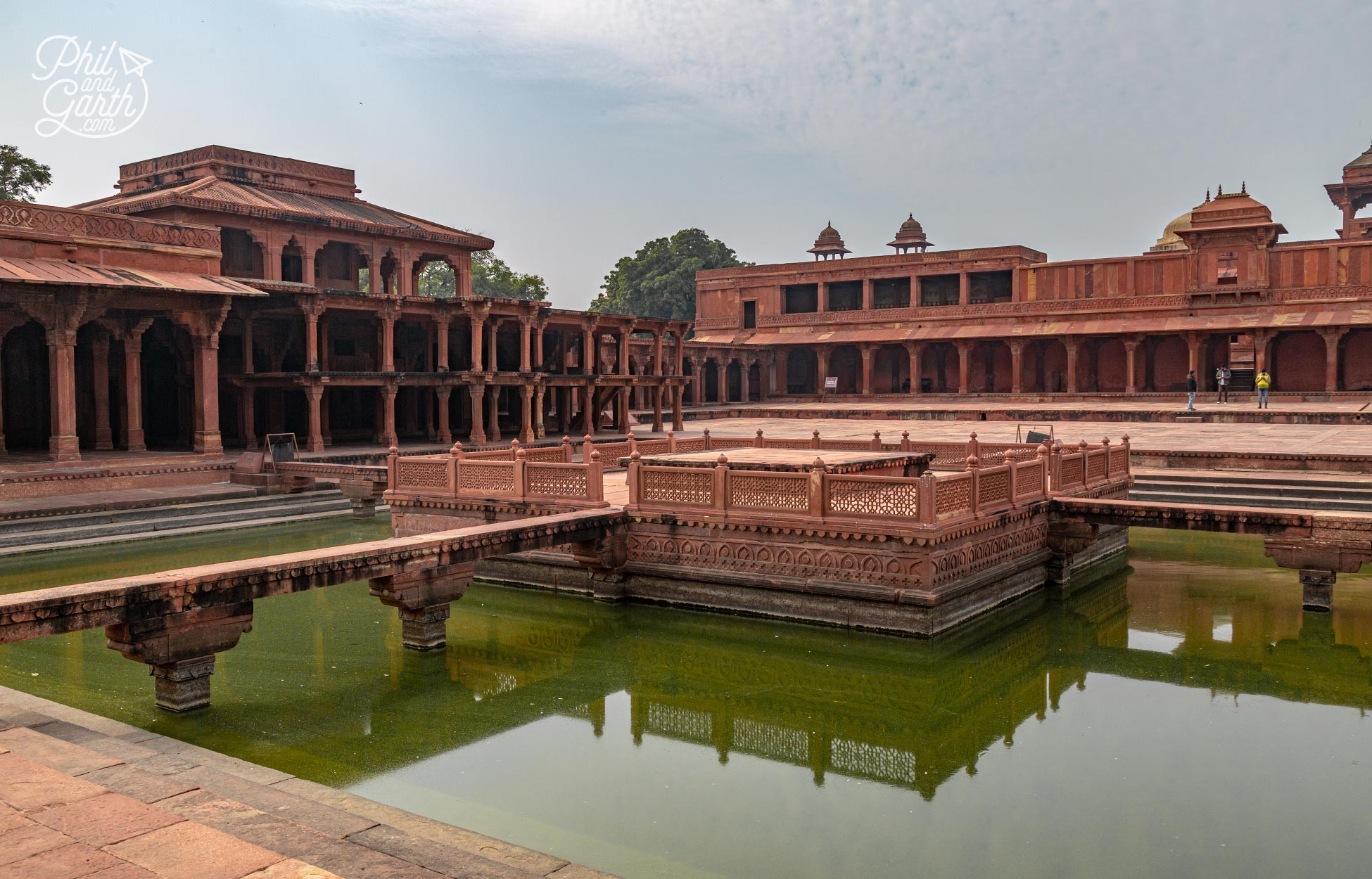
The abandoned Royal city of Fatehpur Sikri, which means ‘The City of Victory’
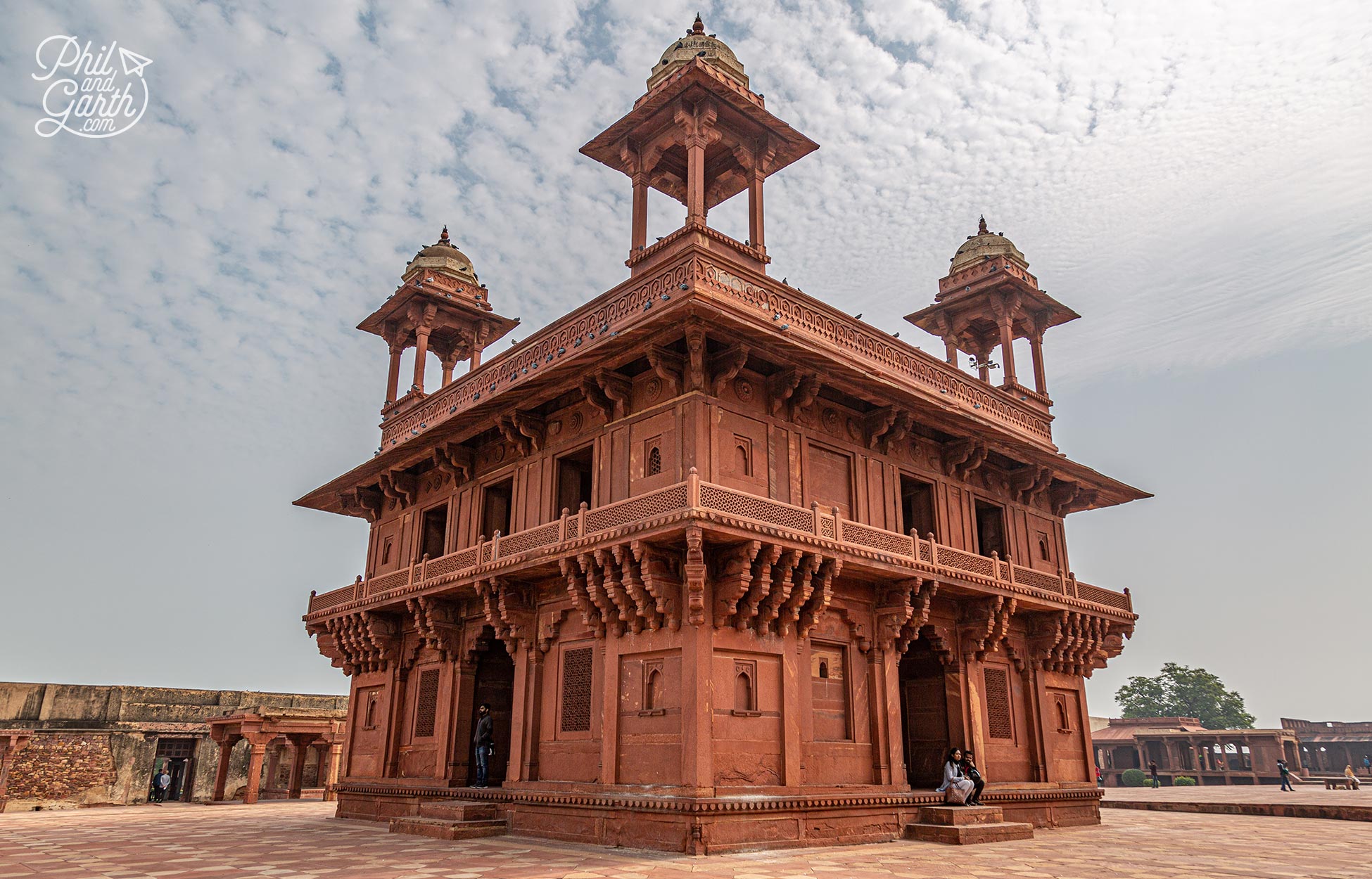
Diwan-i-Khas – A hall where the Emperor met his guests and dignitaries
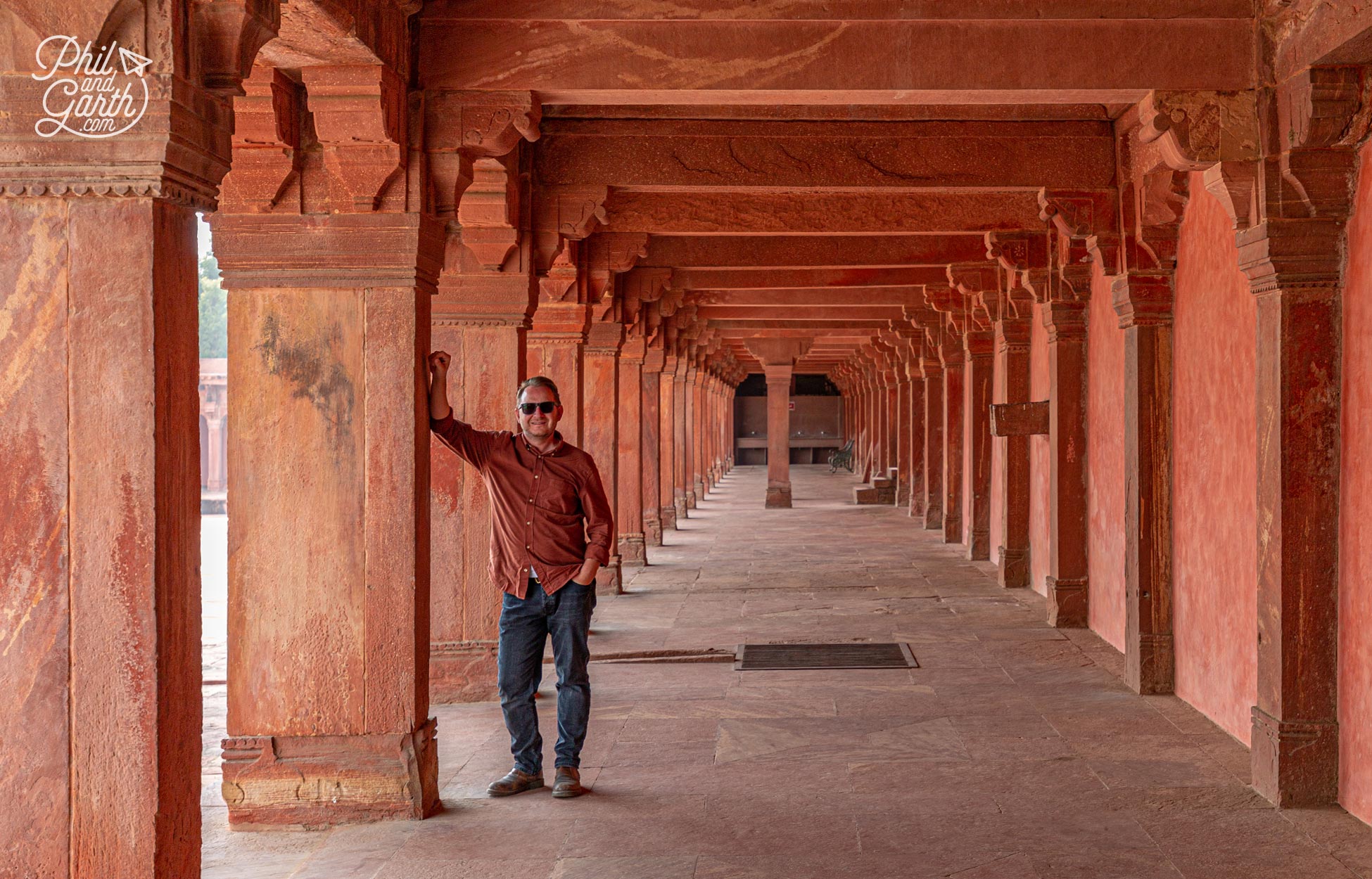
Garth blending into the sandstone walls at Fatehpur Sikri
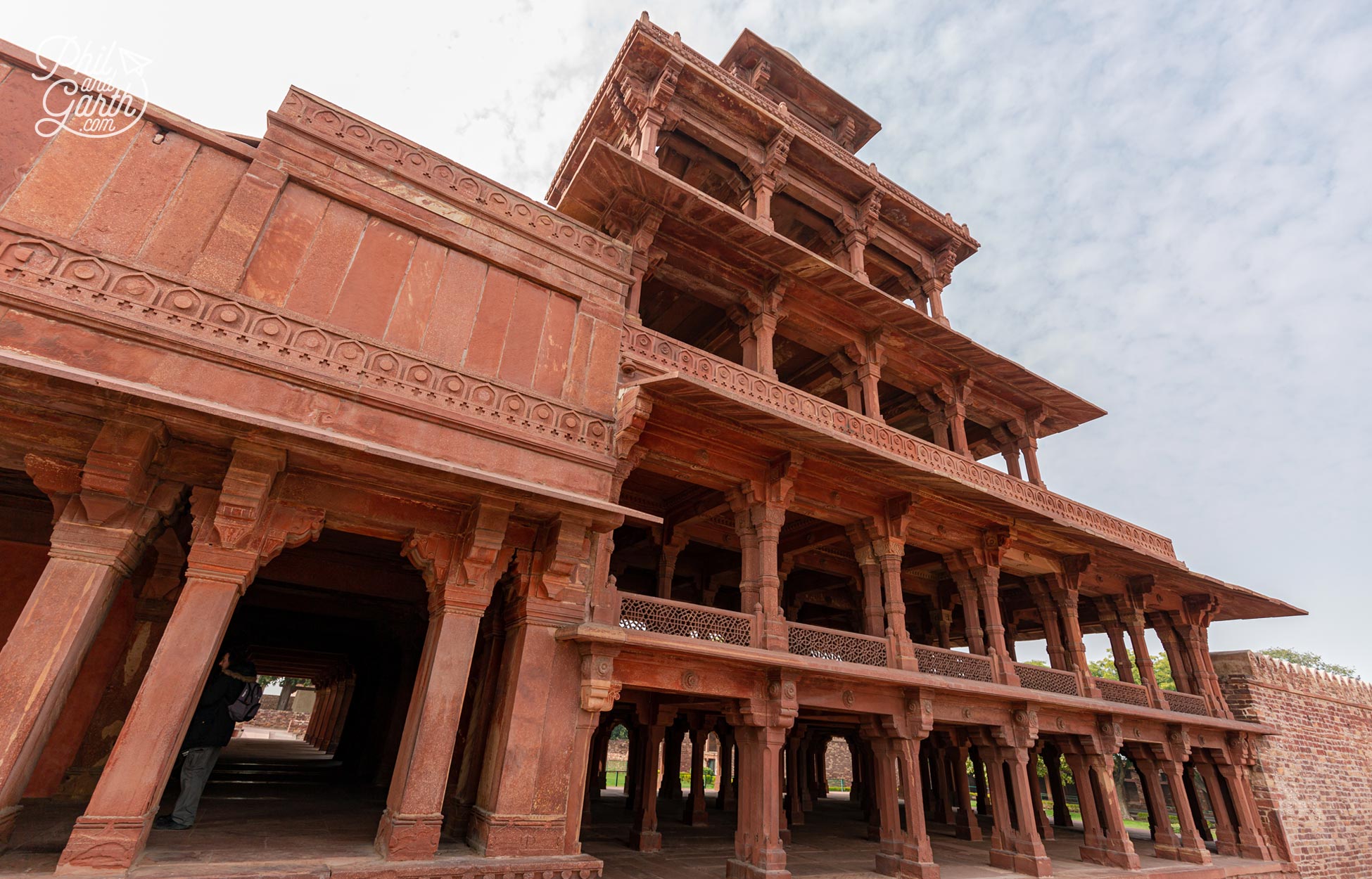
The Panch Mahal – a 5 storey palace for the Queens and other ladies of the court to use for recreation
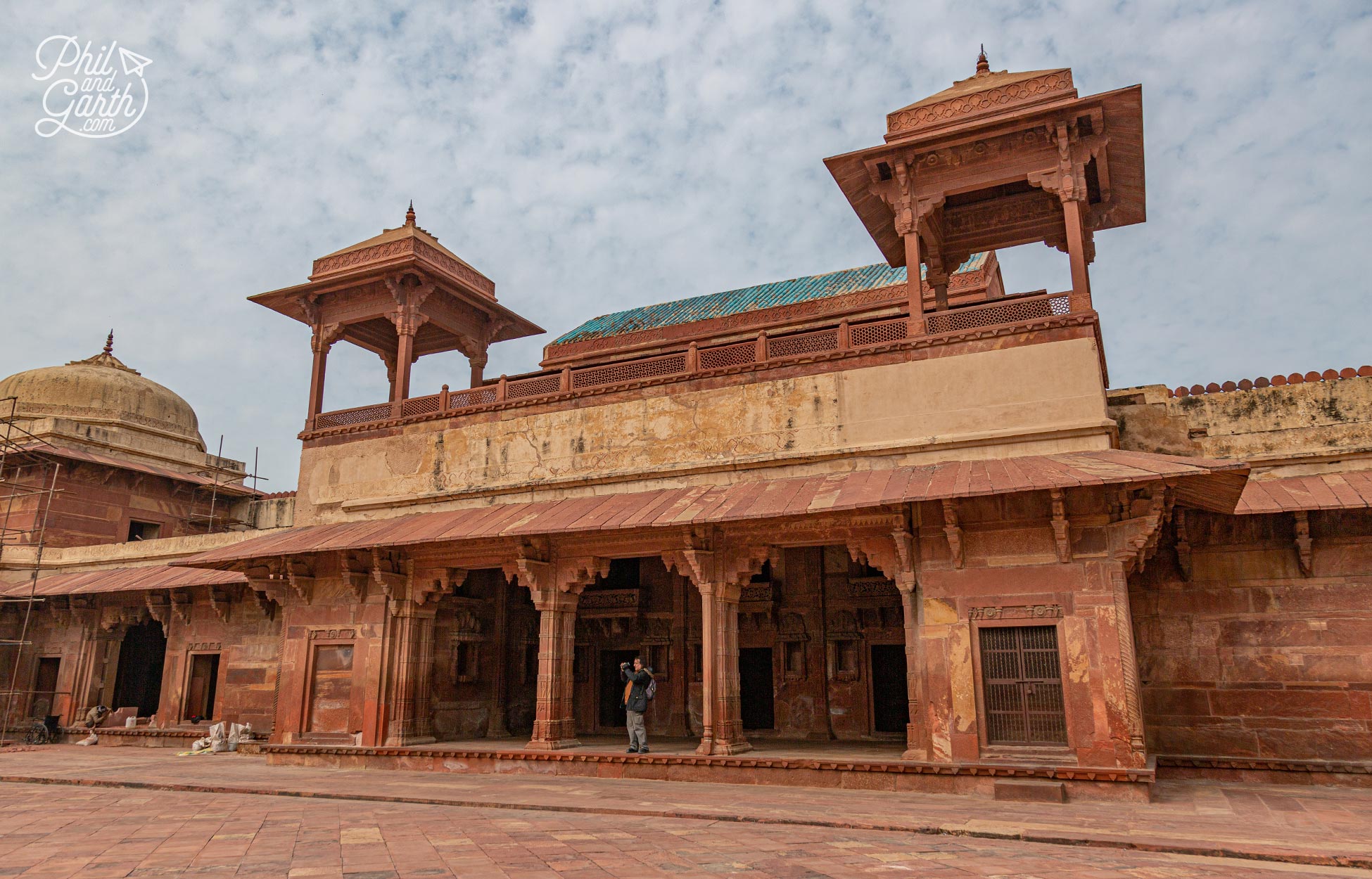
The Jodha Bai Palace built for the Emperor’s favourite wife Jodha Bai
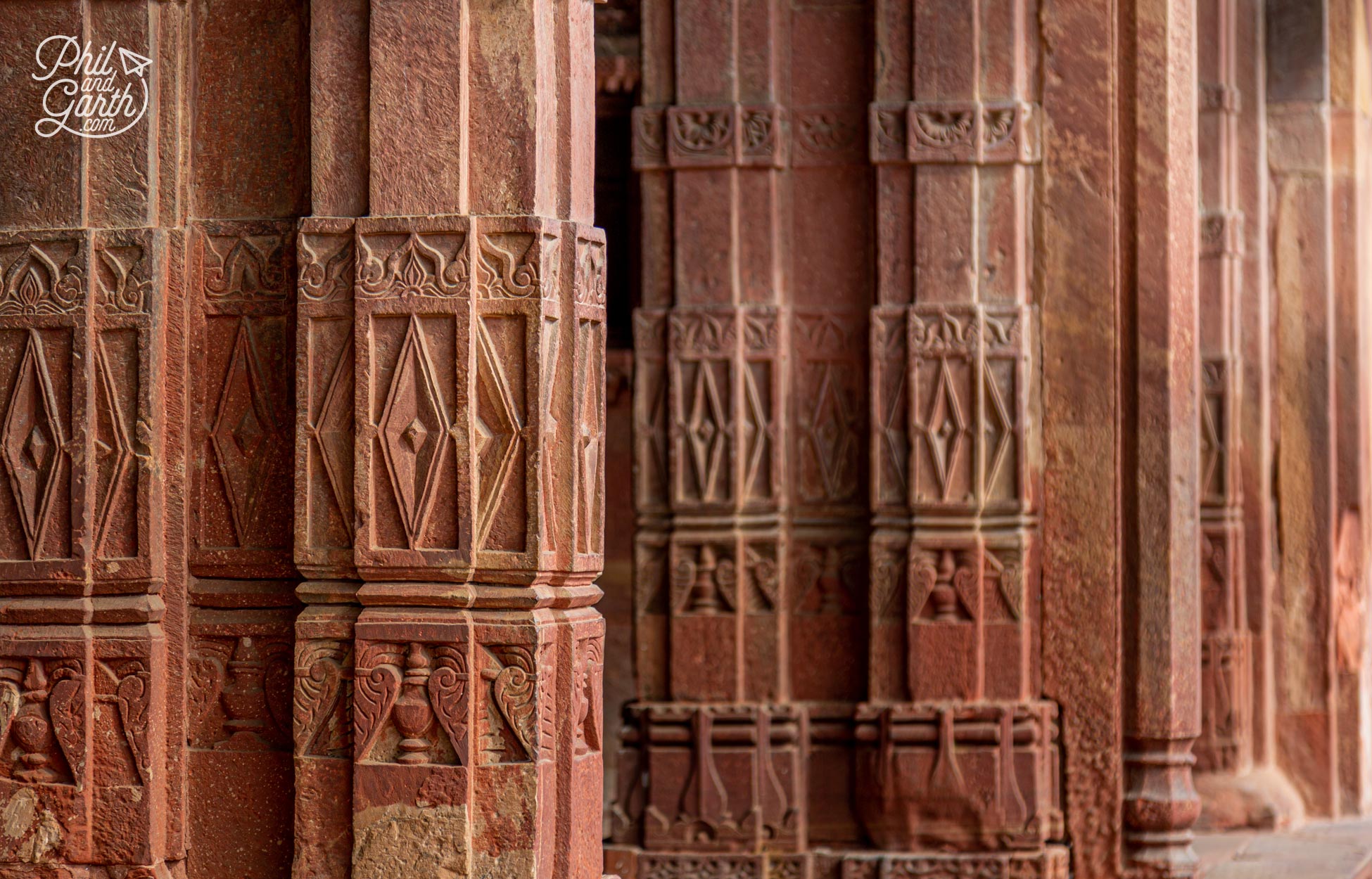
Detail of some of the bas-relief columns
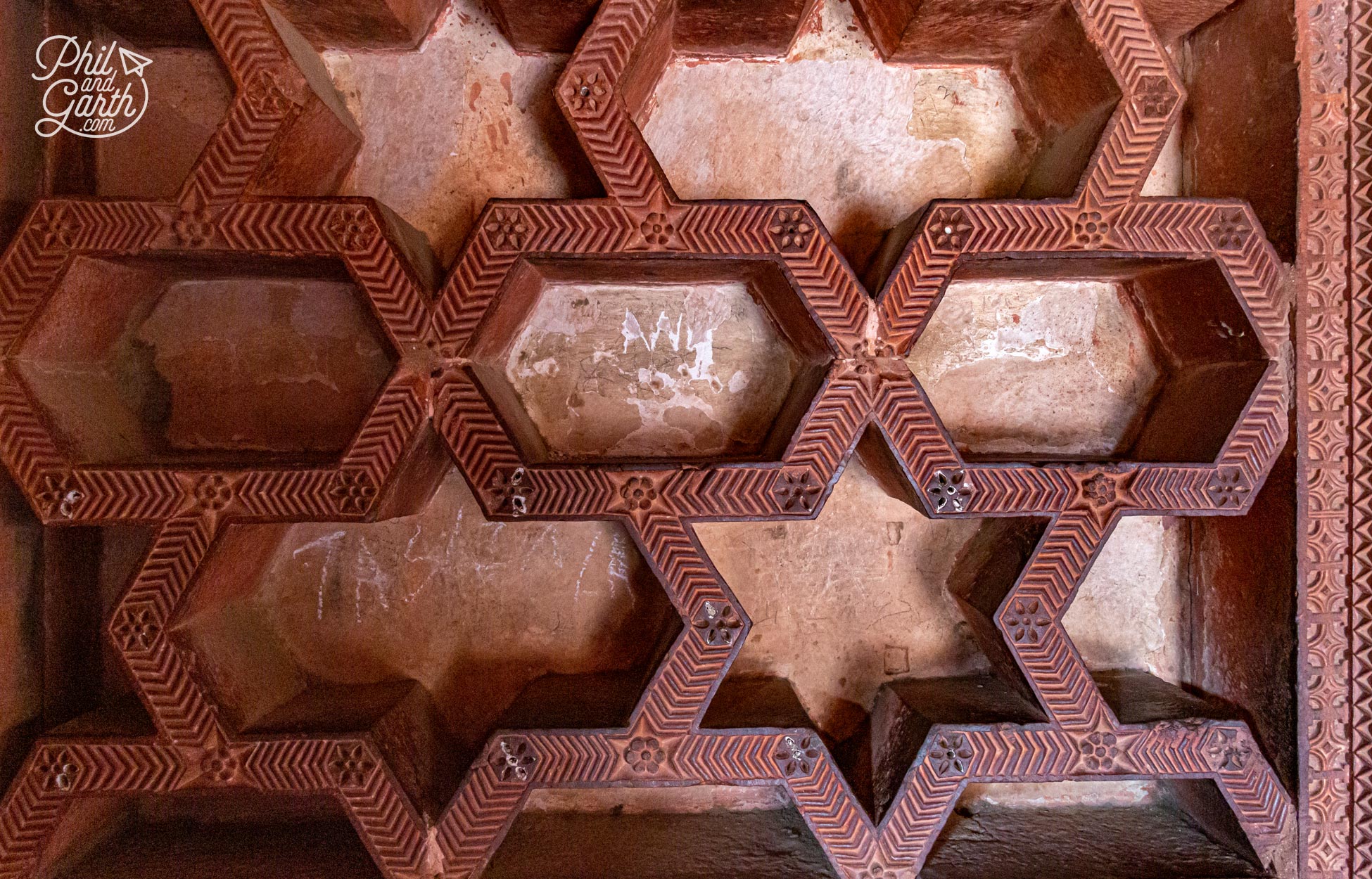
So many gorgeous designs and patterns here
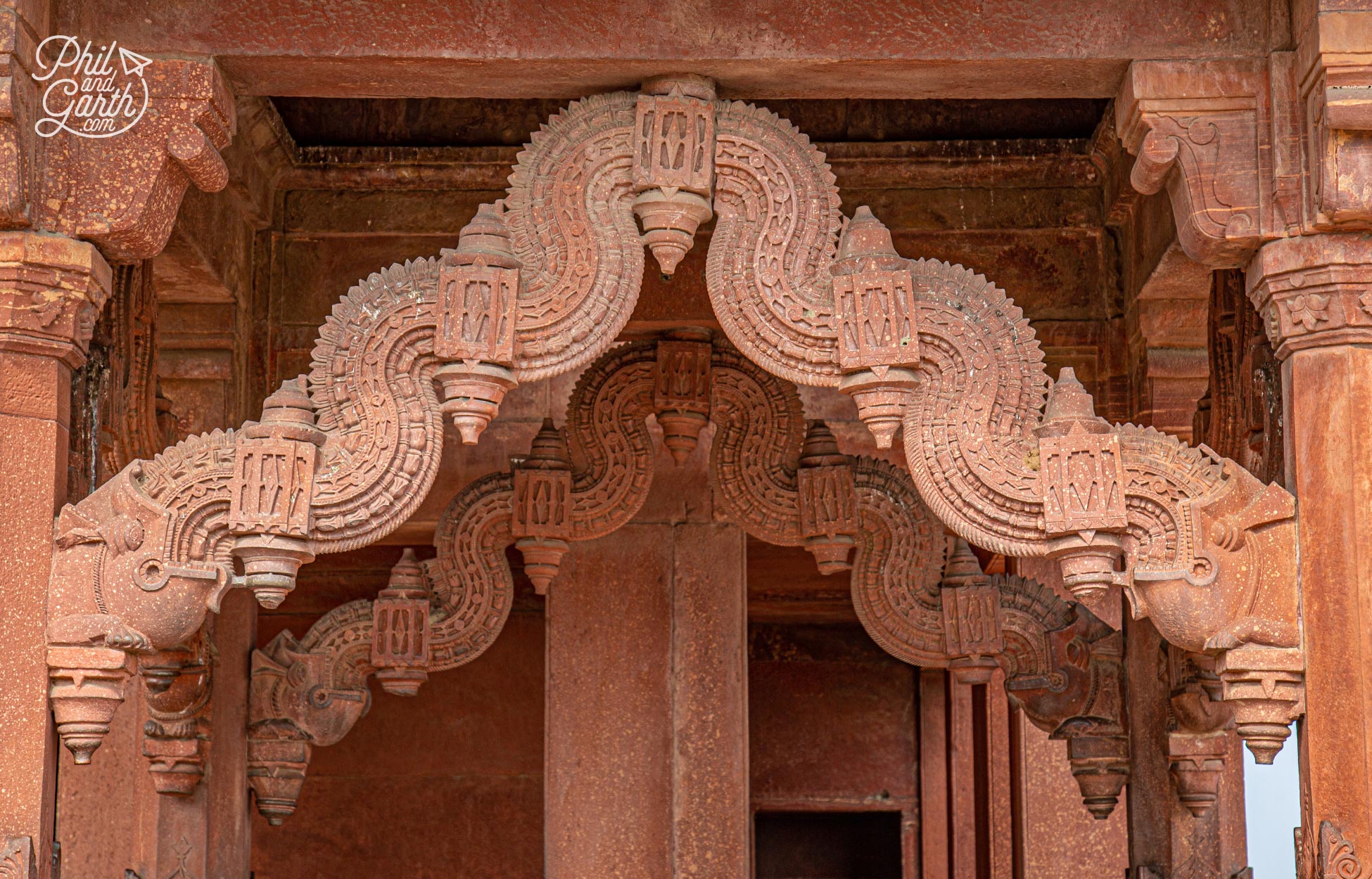
Detail of the Ankh Michauli – The Treasury building
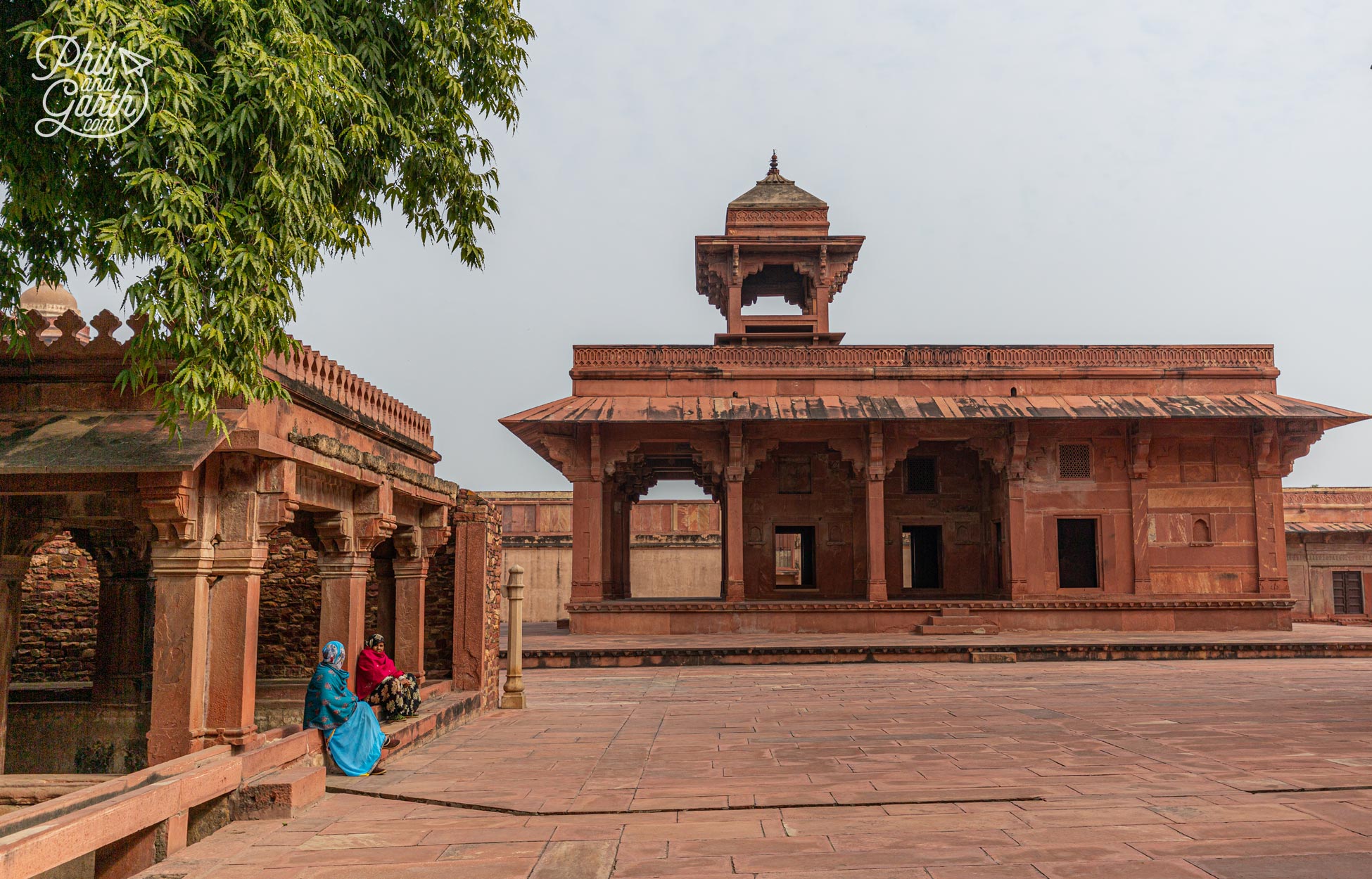
This ancient city is filled with ornate palaces, meeting halls and mosques
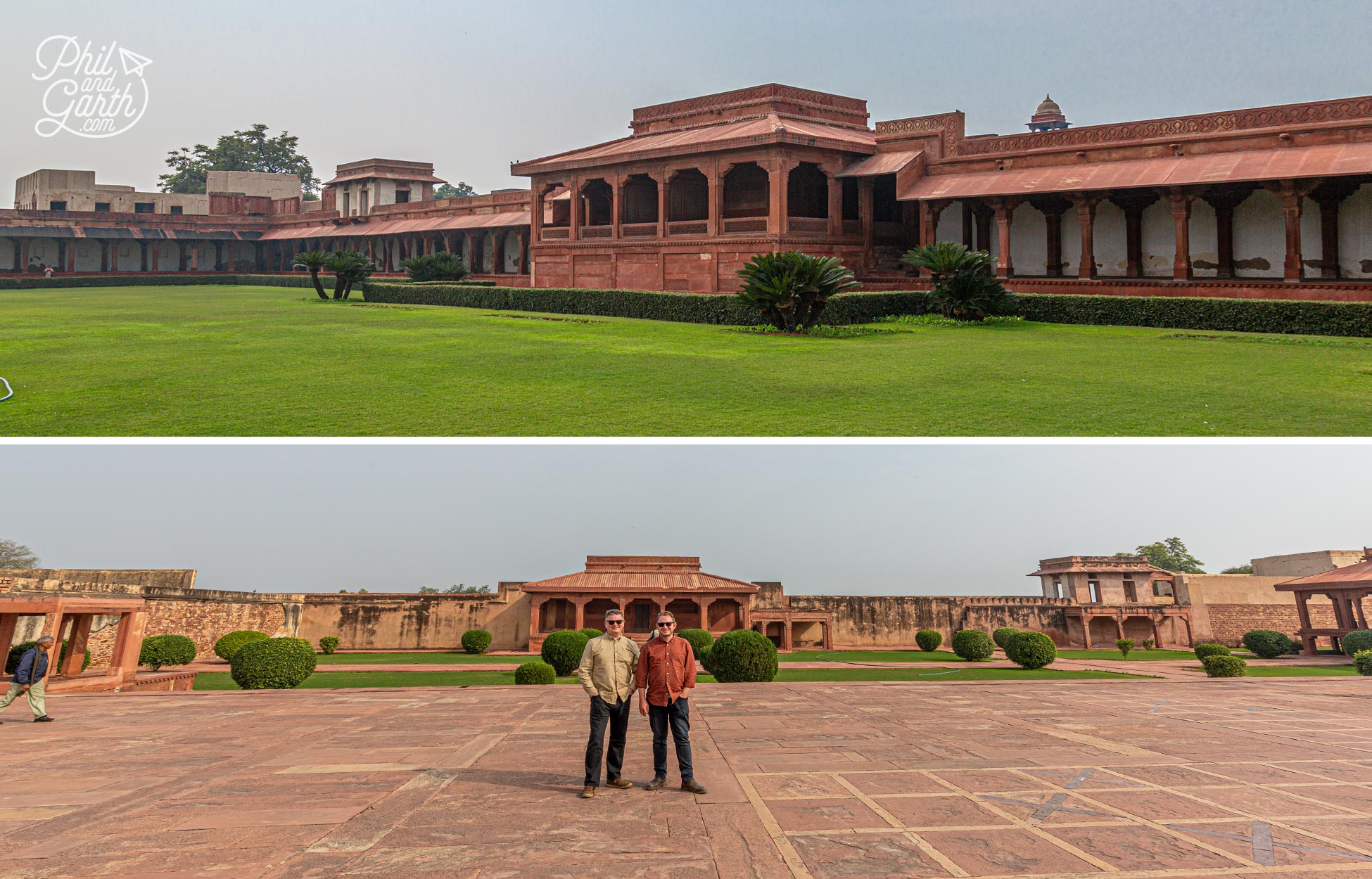
Phil and Garth at Fatehpur Sikri
Be prepared for people everywhere outside asking for money and even inside the complex. The gardeners and restoration craftsmen asked us “where are you guys from?” you can guess what’s coming next …
Agra Fort
The last sight on our Agra itinerary for day 2 was another big one – Agra Fort and another UNESCO World Heritage Site. Built in 1565 as a military base it was later converted into a palace, and it’s one of the best preserved forts in India. It used to be the Royal home to three reigns of Mughal Emperors until they moved the capital city in 1638 from Agra to the Red Fort in Delhi.
Agra Fort is a sprawling complex built from red sandstone and marble. A walled city surrounded by a moat on three sides and a river on the forth side, the defence walls are double thick and 20 metres high. Inside it’s like a maze with palaces, courtyards, halls and gardens spread out over 94 acres. Many of the original buildings were destroyed by the British army between 1803 to 1862 to build barracks. That area of the fort is still used by the Indian Army and is off limits to the public.
You really need to hire an official guide like we had (available outside the main gate) to appreciate the stories behind the various buildings. We loved all the architectural details, Garth liked the jigsaw puzzle patterns of the Anguri Bagh garden and Phil loved all the decorative arches which are a a feature of Islamic architecture. The view across the distance to the Taj Mahal is also impressive.
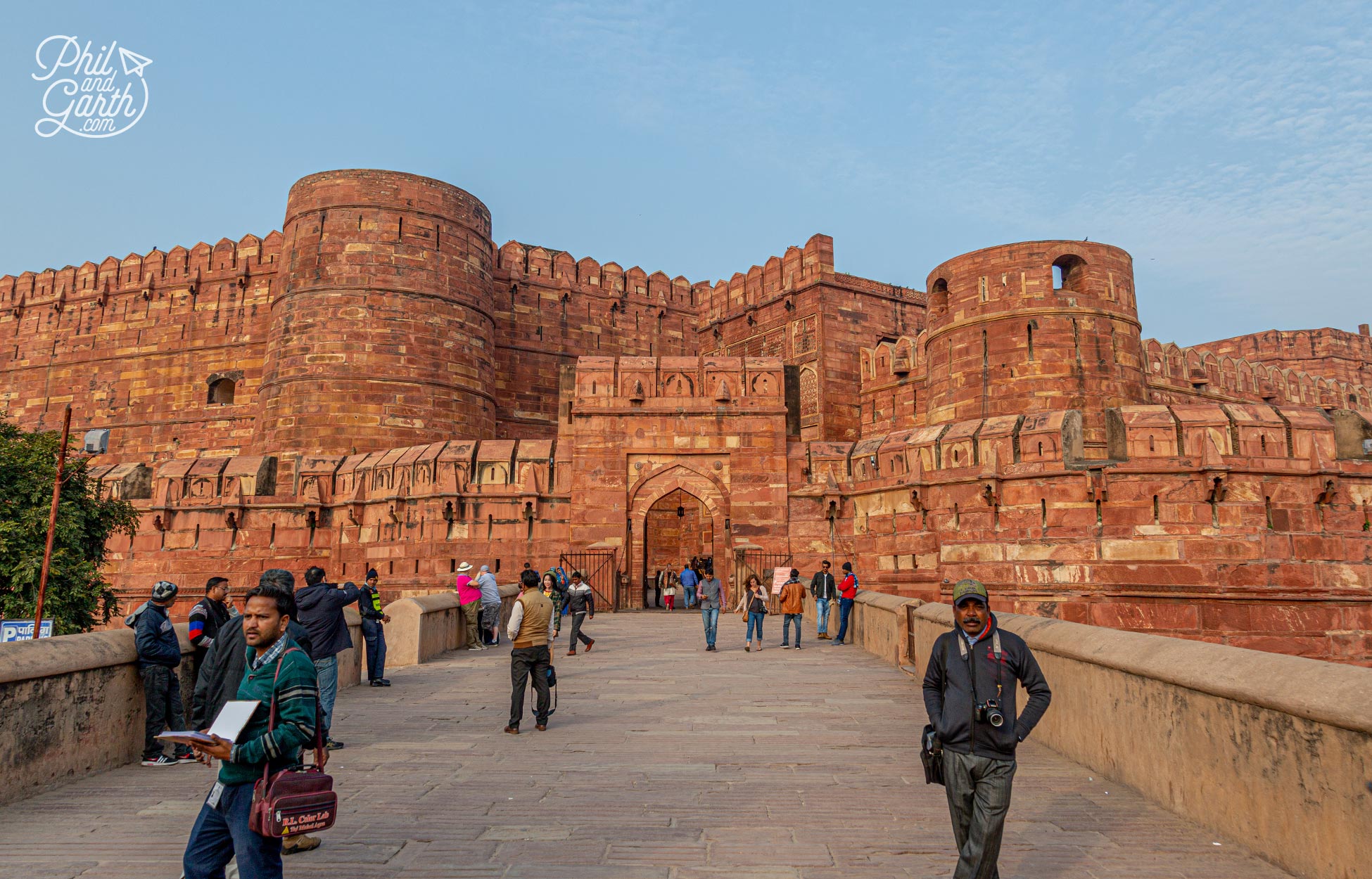
The colossal Agra Fort also known as Lal Qila or the Red Fort
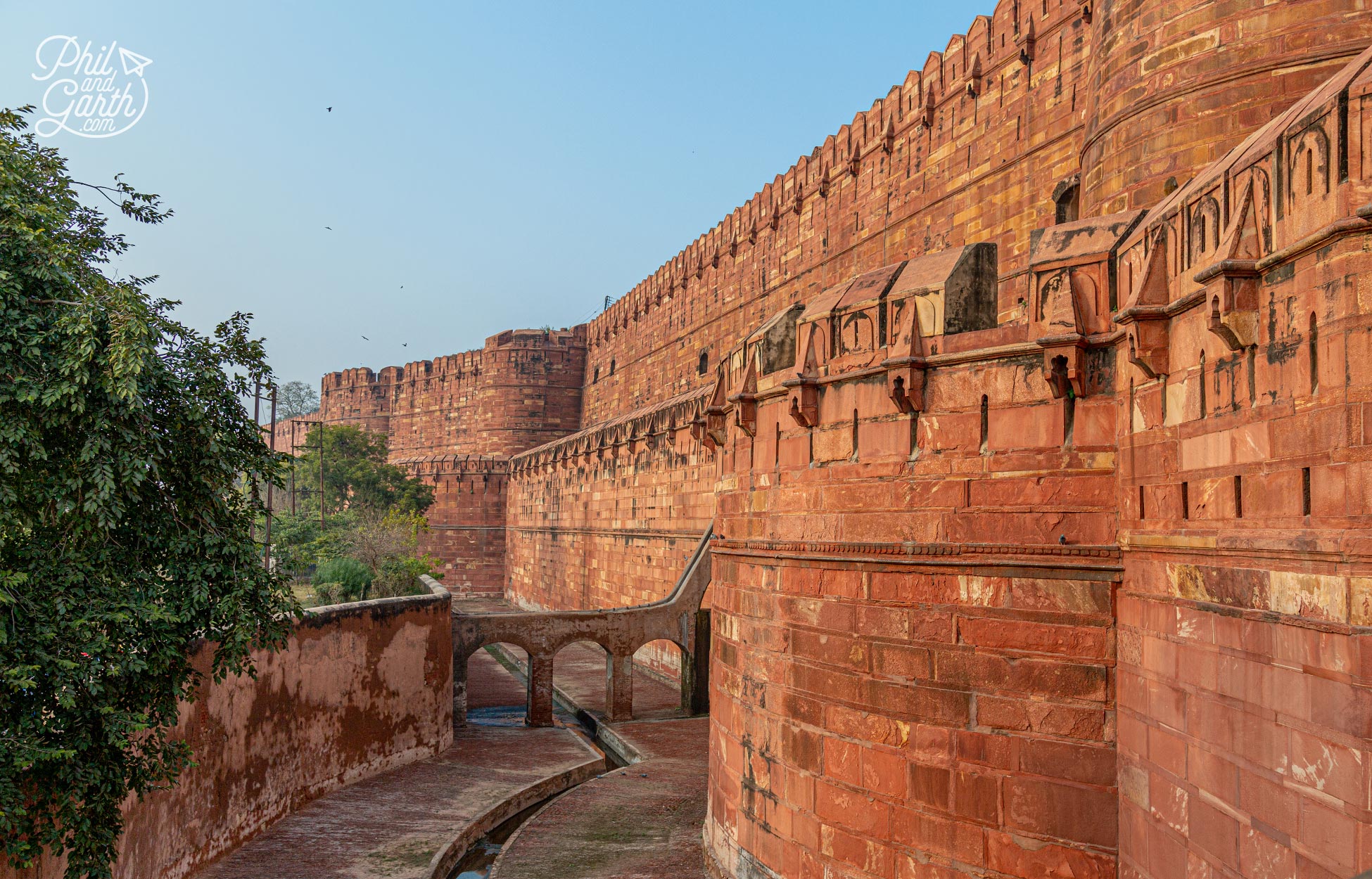
Part of the fort is still used by the Indian Army and is off limits to the public
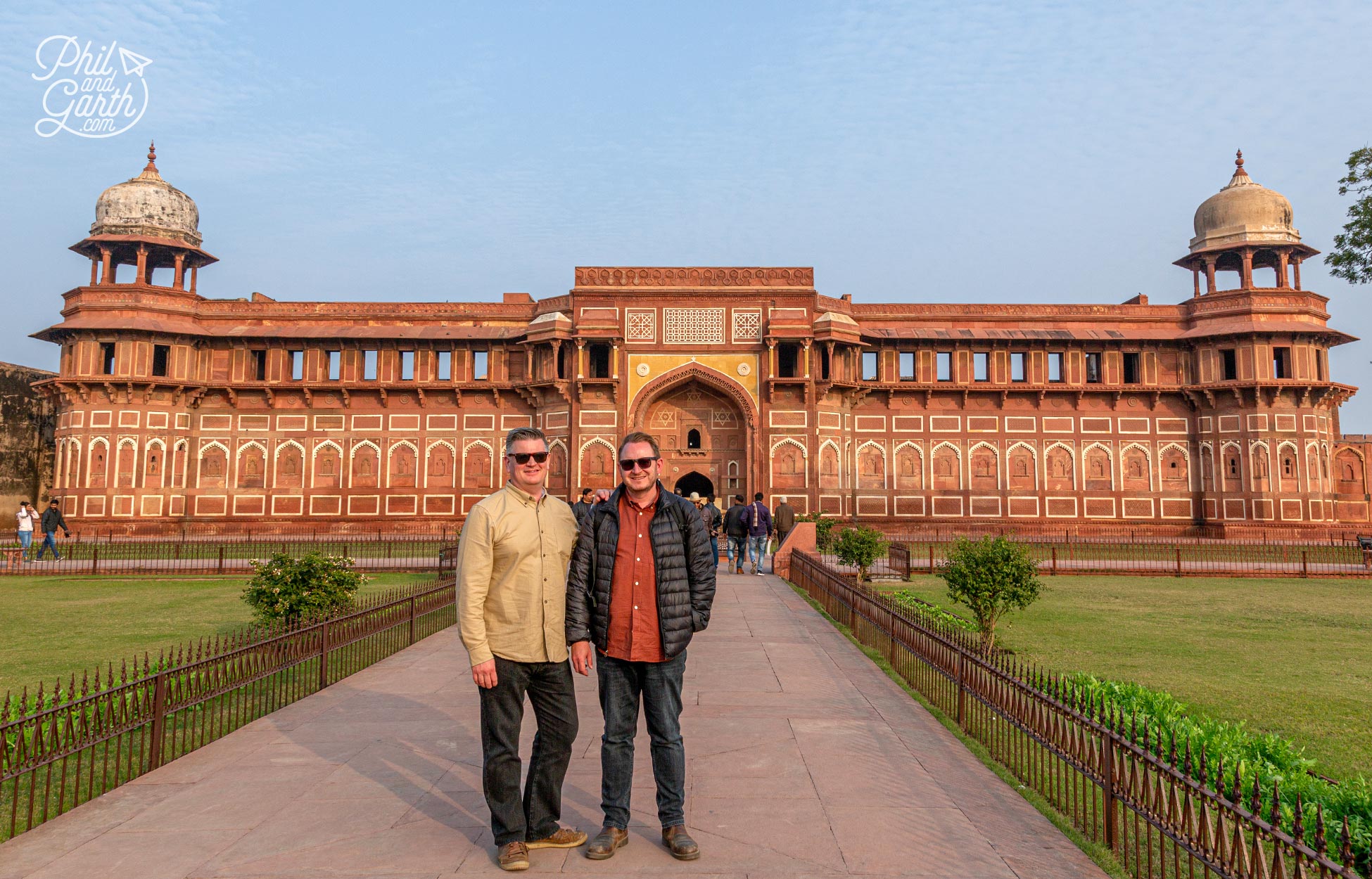
Phil and Garth outside The Jahangiri Palace – The women’s quarters of the Royal household
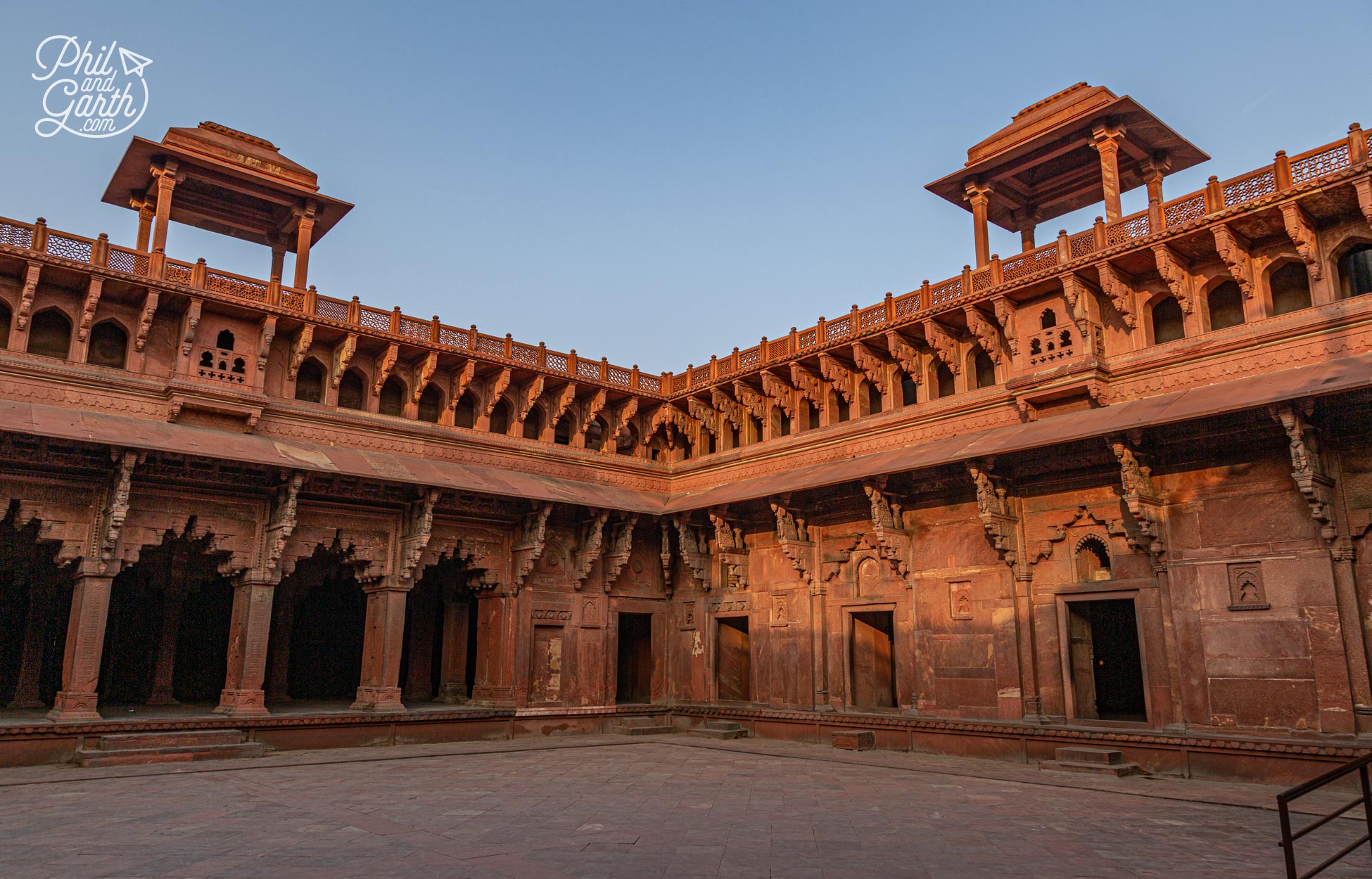
Hindu inspired architecture of the central courtyard within the Jahangiri Mahal Palace
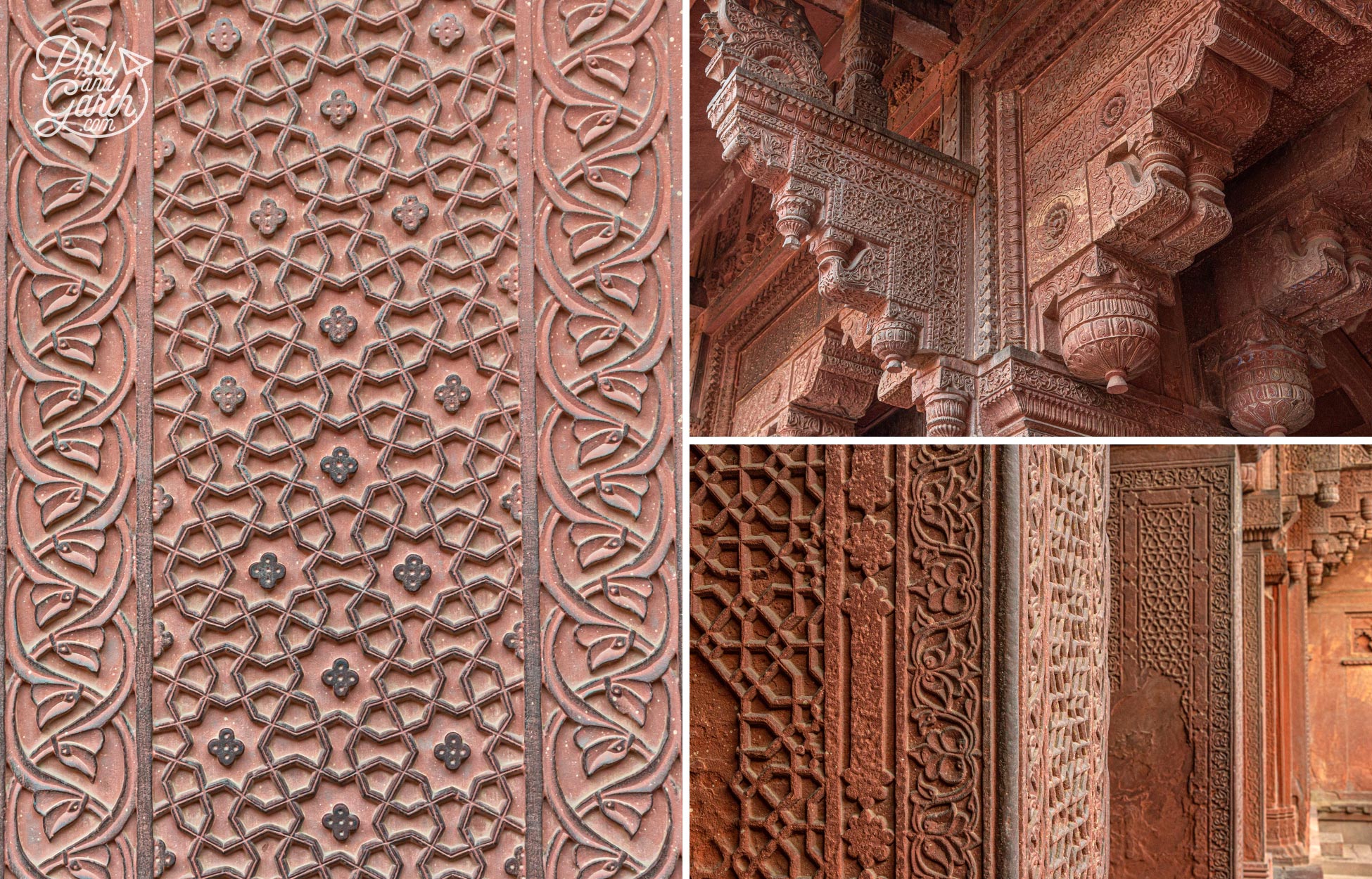
Details of the bas-reliefs in the courtyard – a blend of Hindu and Persian styles
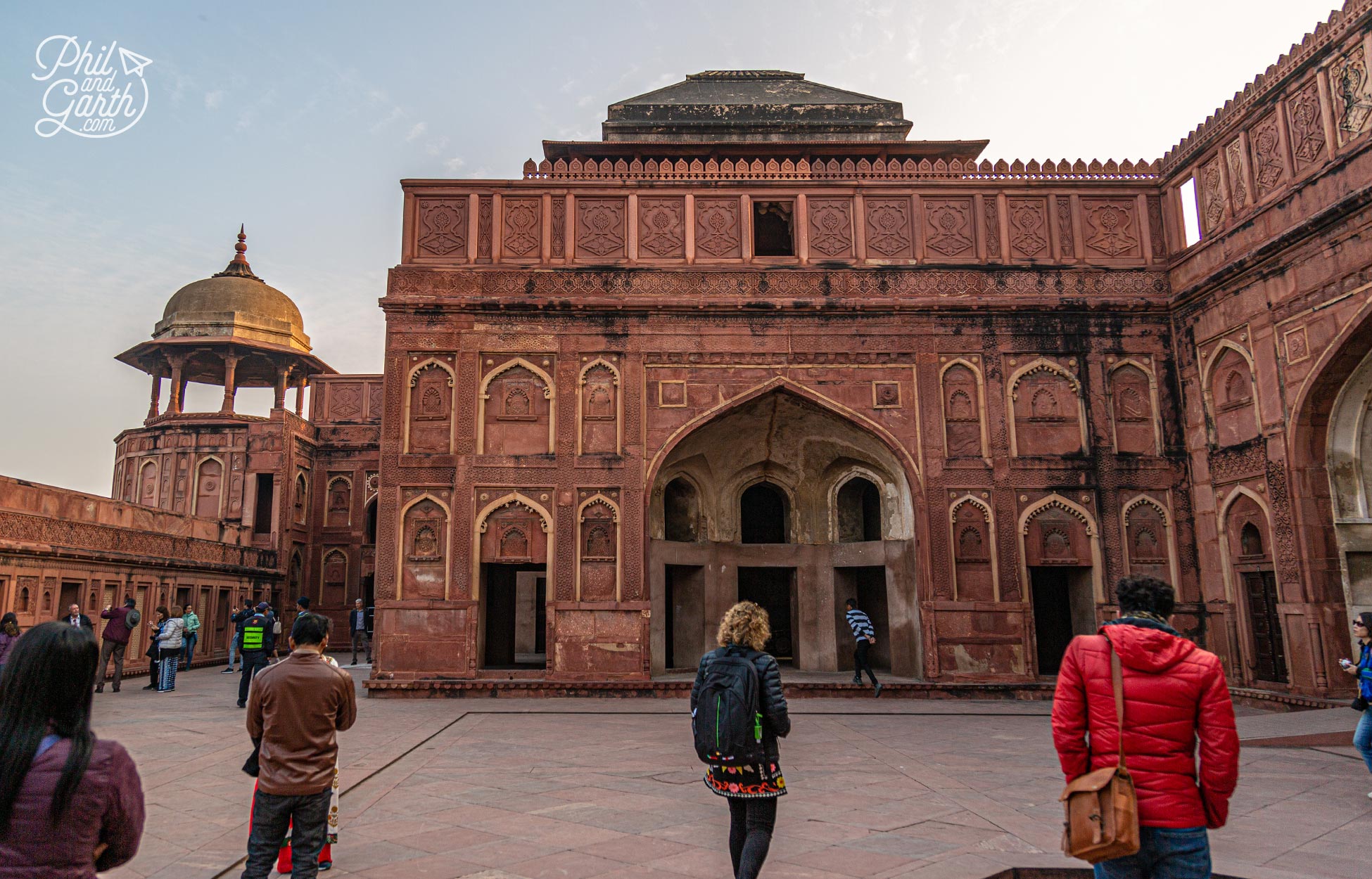
The Riverfront Courtyard of the Jahangiri Mahal Palace
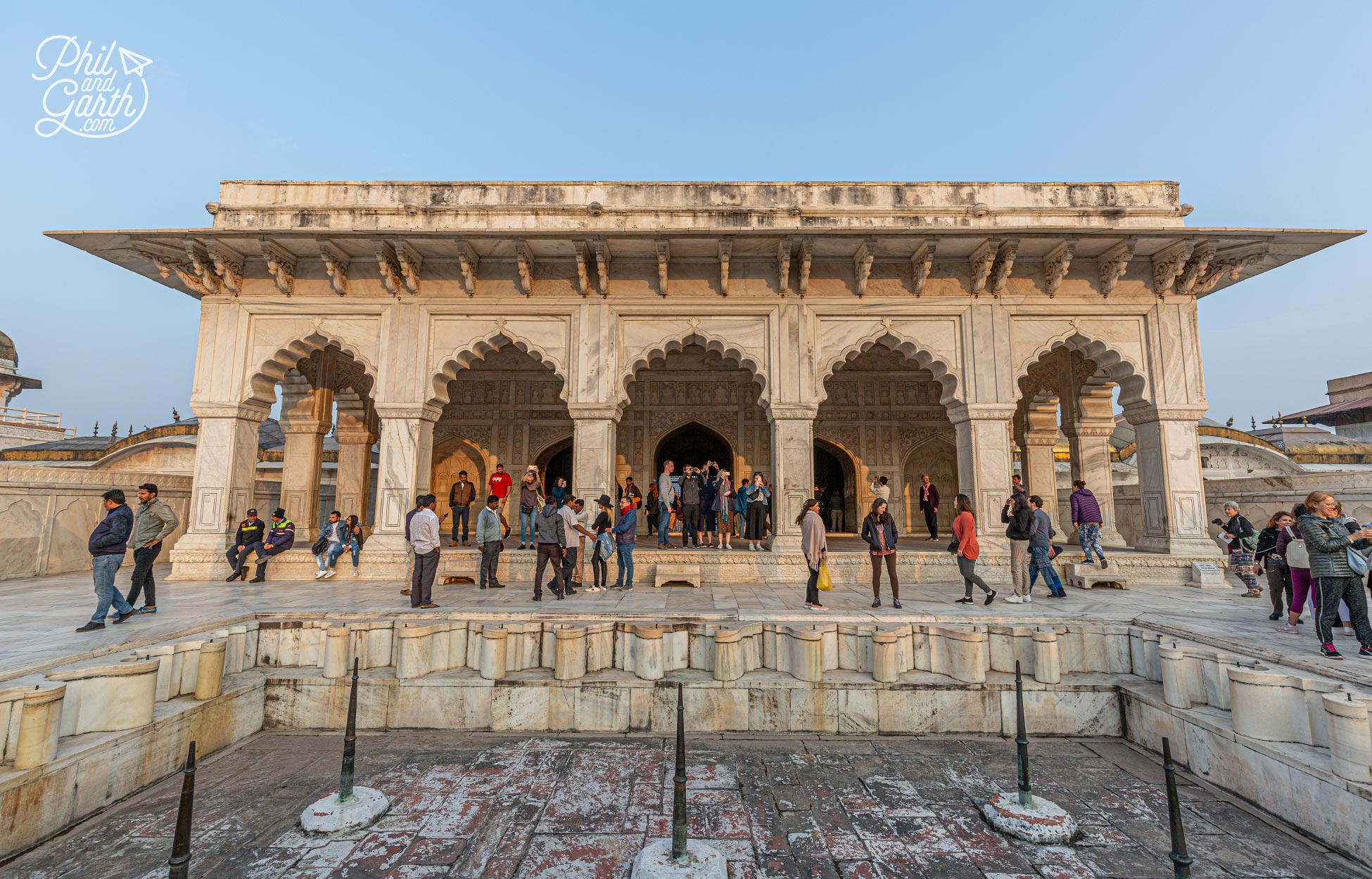
The Khas Mahal Palace built in 1636 by Emperor Shah Jahan
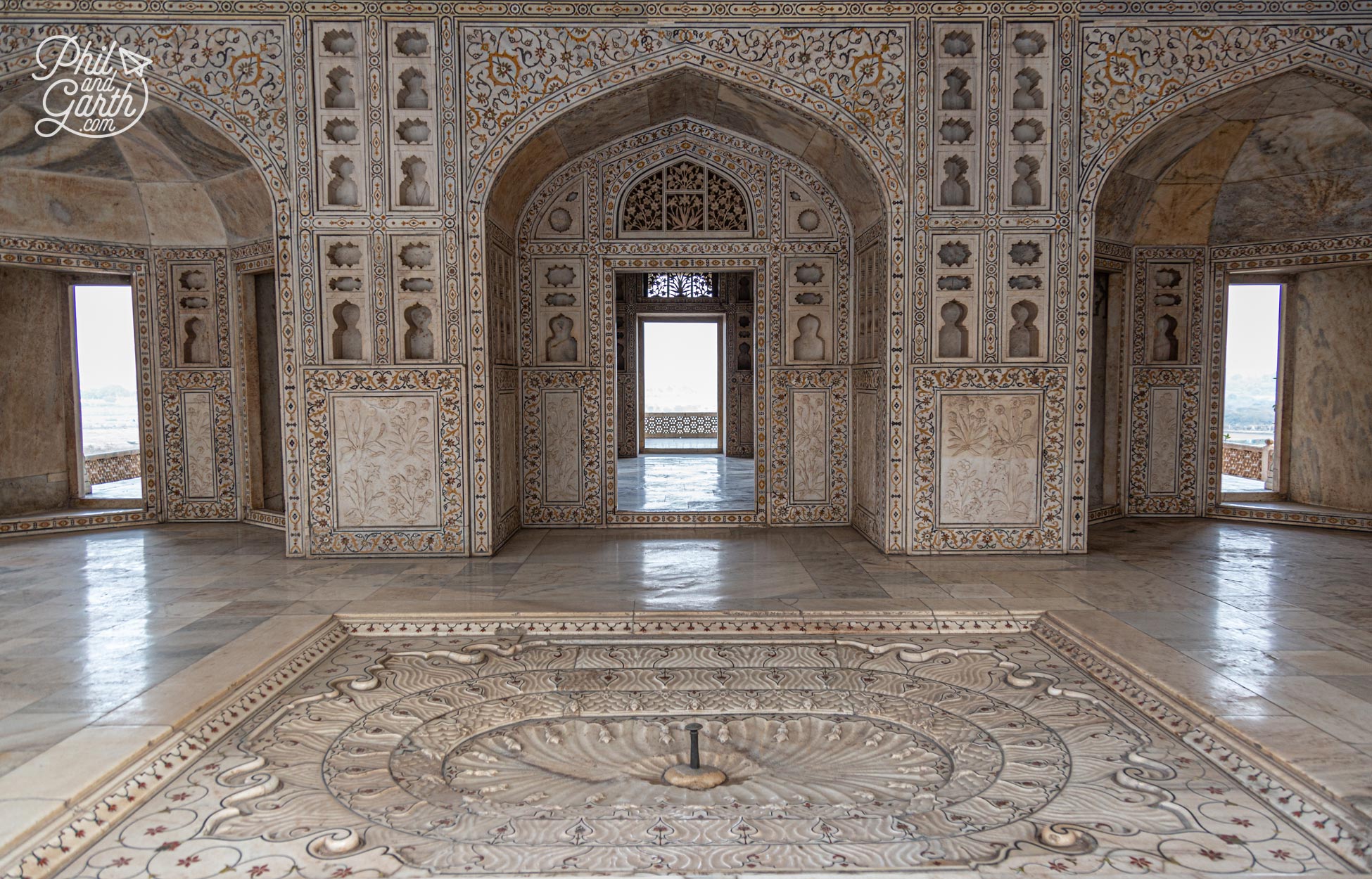
The incredible detail inside the Musamman Burj, part of the Khas Mahal Palace
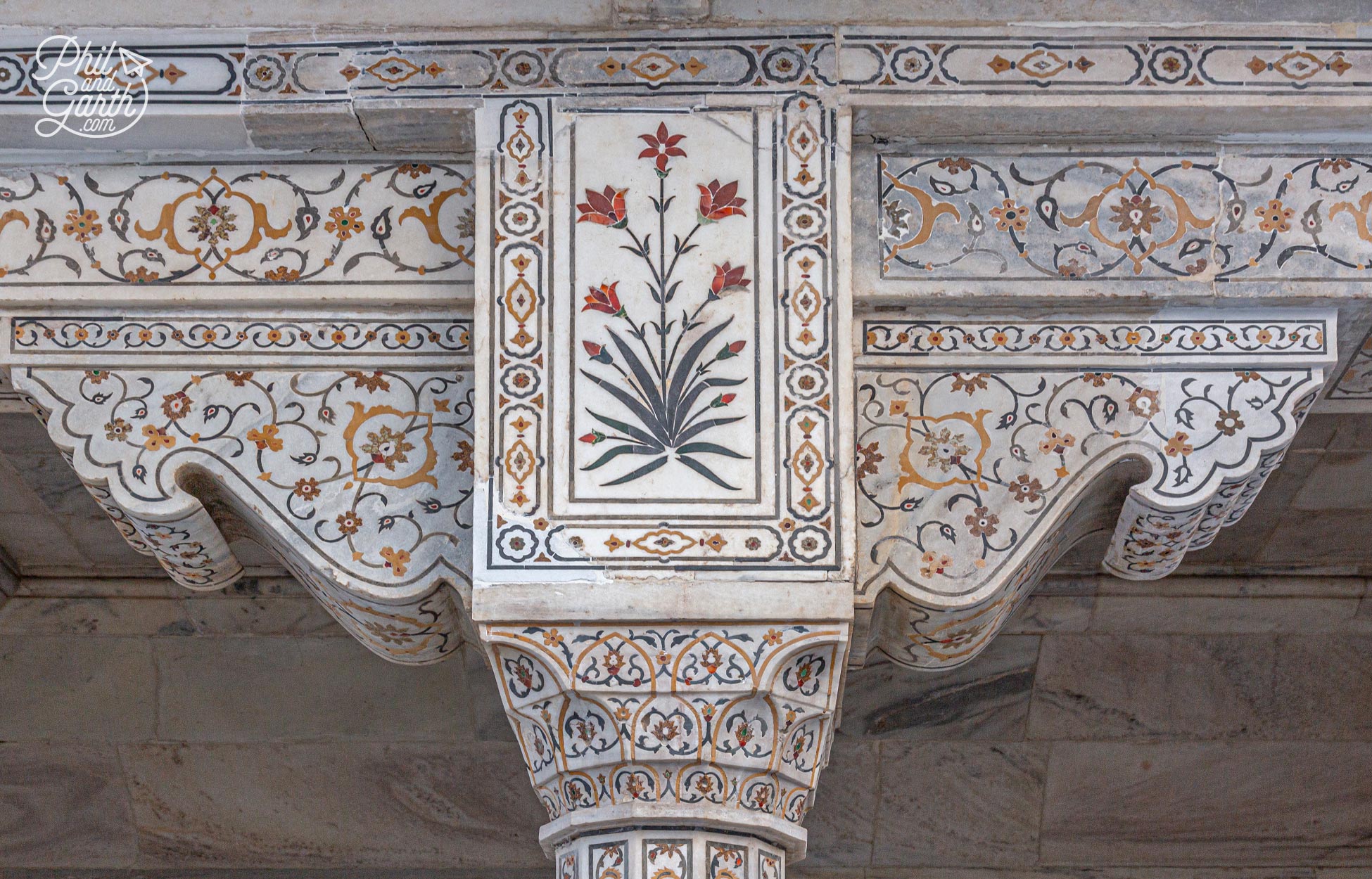
Emperor Shah Jahan’s signature design style used in the Khas Mahal Palace
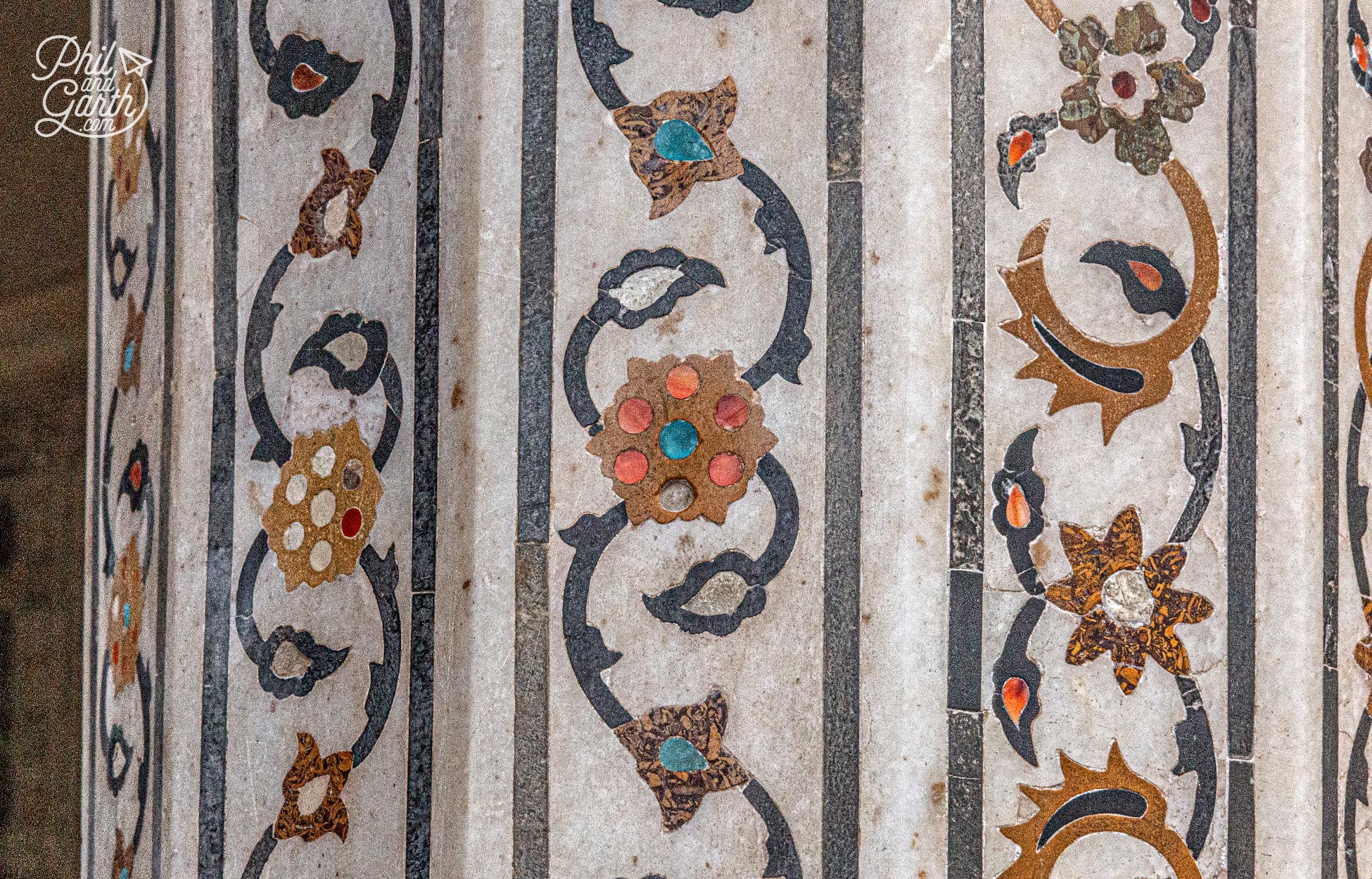
White marble with inlaid precious stones
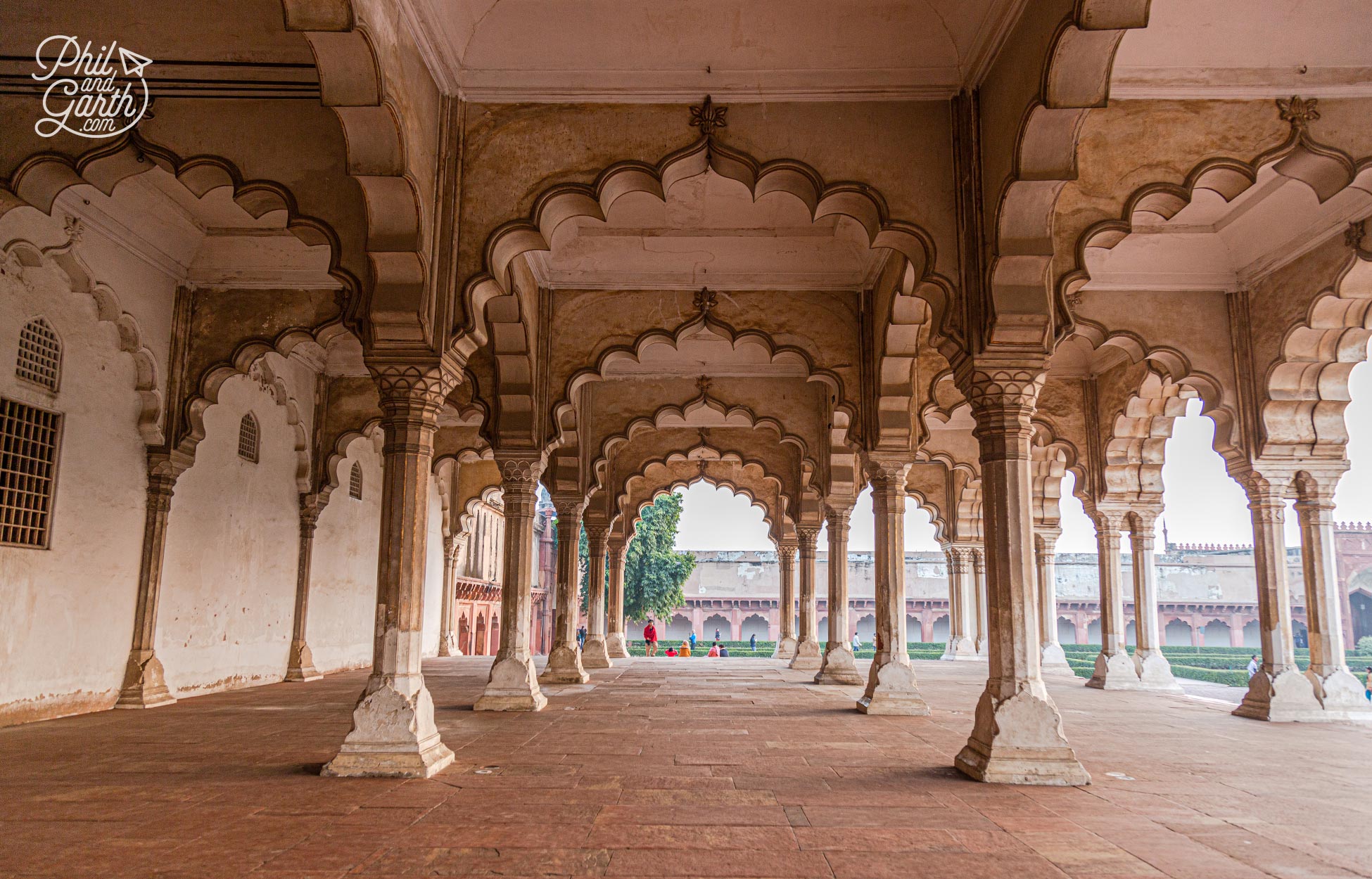
Diwan-I-Am is also called ‘The hall of audiences’ where the Emperor would meet members of the public
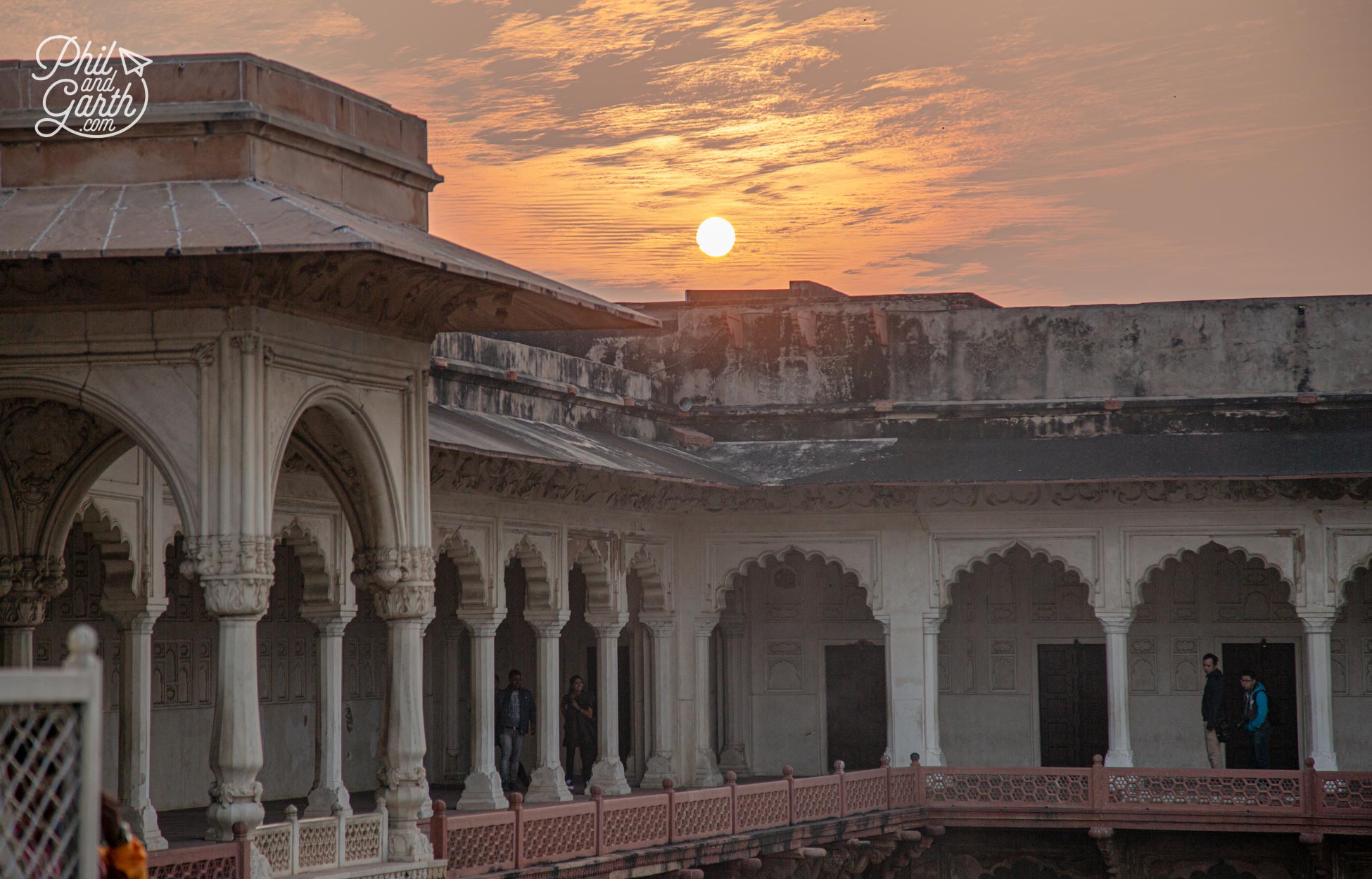
The arched galleries of Macchi Bhawan
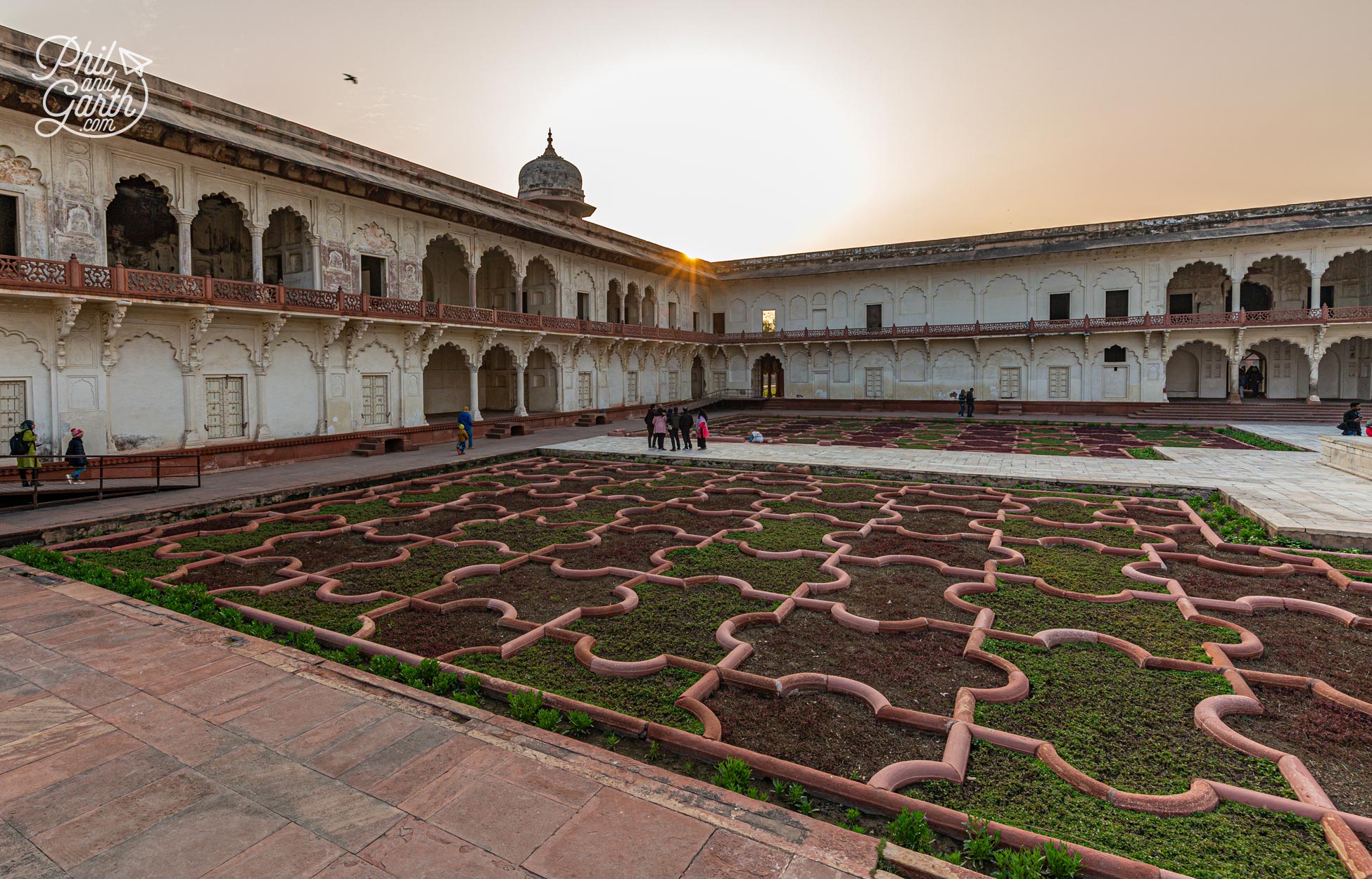
The jigsaw puzzle like patterns of Anguri Bagh – The grape garden
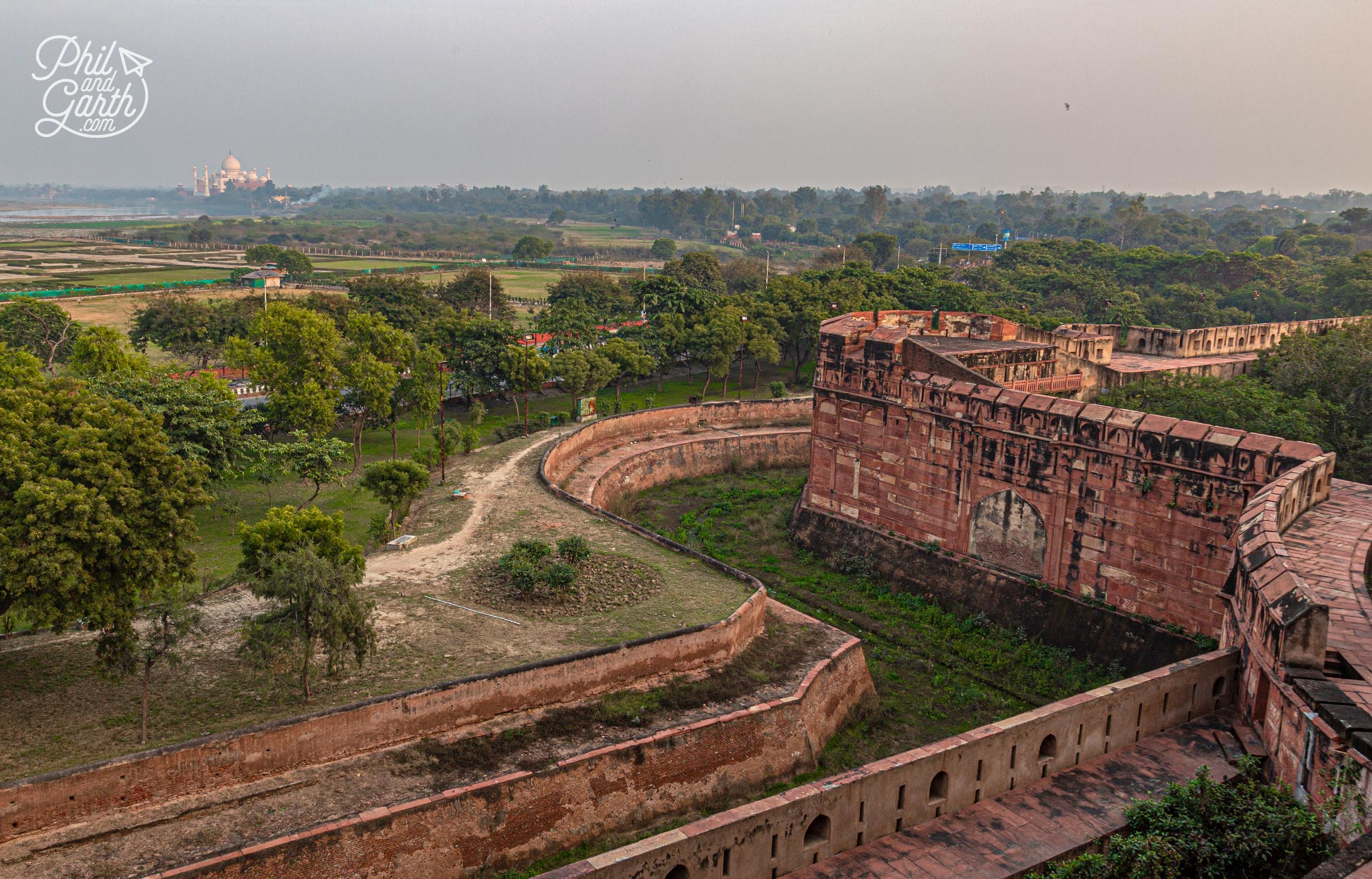
This is the view across to the Taj Mahal from Agra Fort
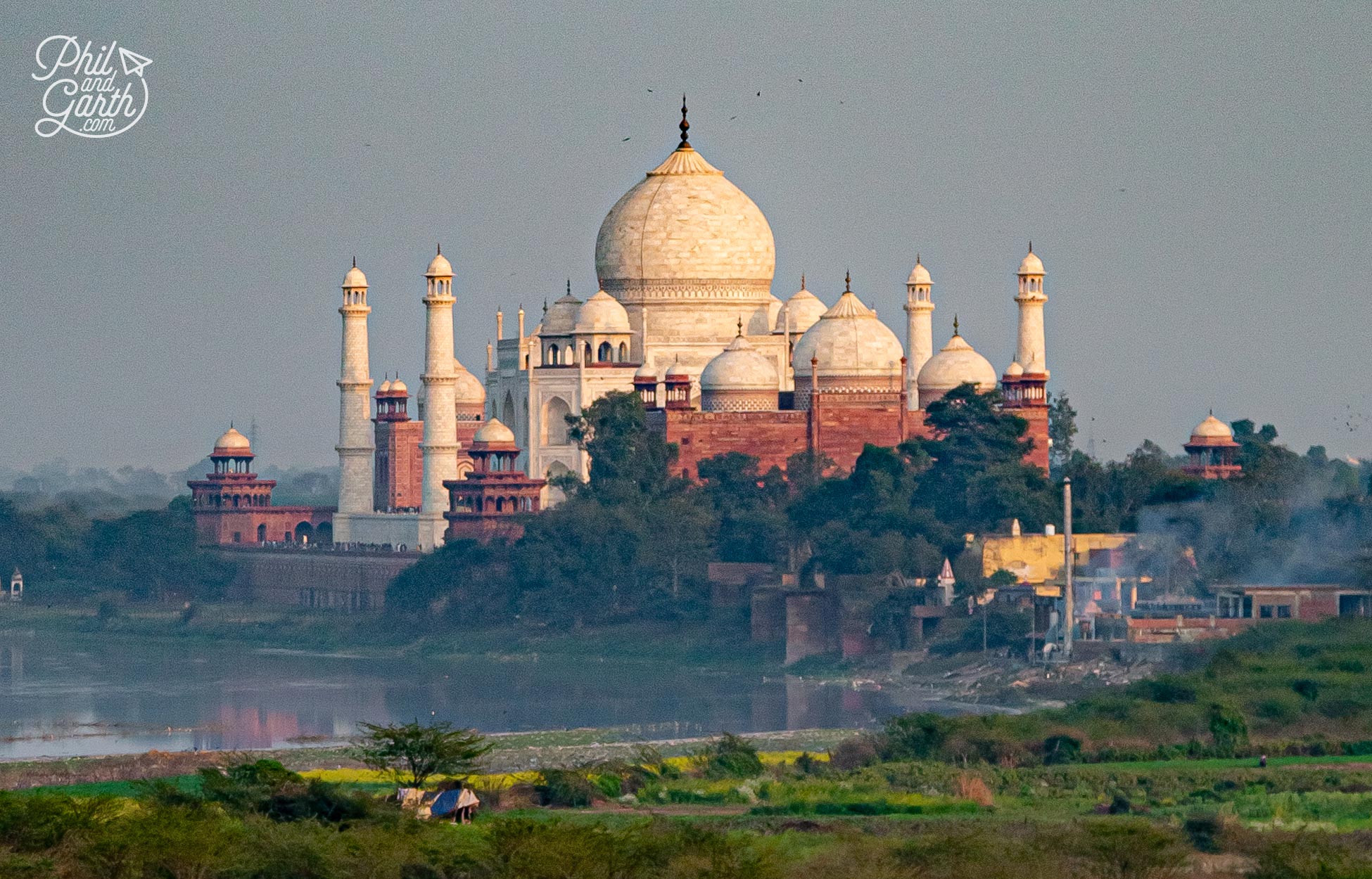
The impressive view of the Taj Mahal (photo taken with a zoom lens!)
Overnight Train to Allahabad
We finished at 6.30pm at Agra Fort and headed back to the hotel to get ready to catch our overnight sleeper train to Allahabad at 9.15pm. It was a full on day but full of some wonderful sights, but we were ready to go. Agra itself lacks the charm of cities like Udaipur, we thought we wouldn’t want to spend too long here because of the pollution and the constant hassle from hard selling hawkers.
Other Attractions and Things To Do In Agra
- Shahi Jama Masjid – Huge mosque opposite Agra Fort. It can accommodate 25,000 people for prayers.
- Akbar’s Tomb at Sikandra – 6 miles from Agra, a mausoleum to the greatest of the Mughal kings – Emperor Akbar.
- Mariam’s Tomb – Tomb for Mariam-uz-Zamani, a wife of Emperor Akbar.
- The Taj Nature Walk – Nature reserve trail with viewpoints of the Taj Mahal.
Agra Practical Information and Useful Advice
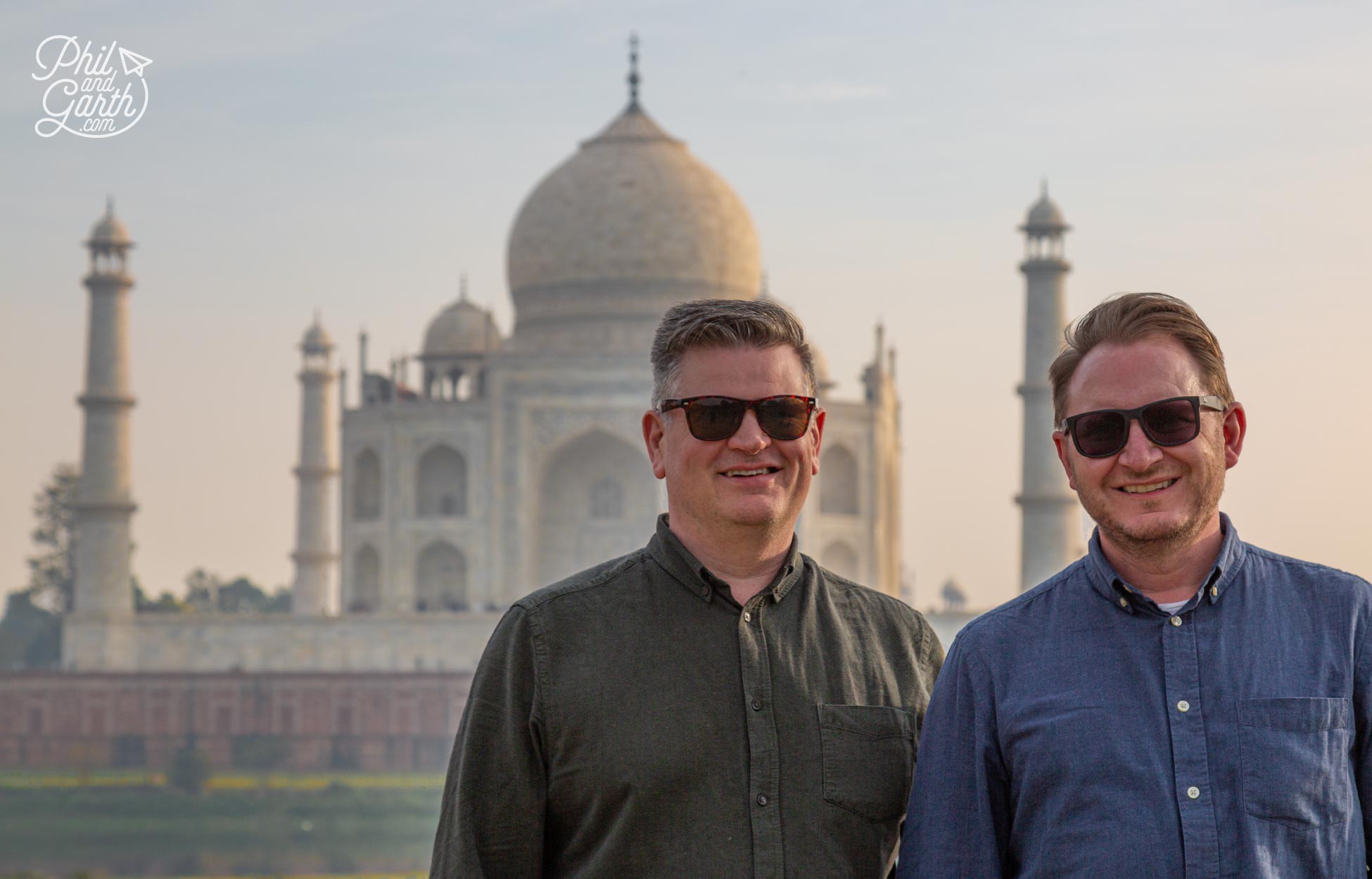
Phil and Garth’s Top 5 Agra Tips
Phil and Garth’s Top 5 Agra Tips
- Tip #1: For the best photos with the Taj Mahal wear bright colours, it’s white and skies are often grey.
- Tip #2: Sunrise and sunset are the best times to visit the Taj Mahal for less visitors.
- Tip #3: There is no heating in hotel rooms.
- Tip #4: Be aware the ticket office at Mehtab Bagh closes 30 minutes before sunset.
- Tip #5: The Taj Mahal is closed on Fridays.
Agra FAQs
- What is the airport code for Agra? AGR – Pandit Deen Dayal Upadhyay Airport.
- What time zone is Agra? GMT+5:30 – India Standard Time.
- What currency is used in Agra? Indian Rupee (Symbol: ₹)
- What language is spoken in Agra? Hindi, Urdu and Punjabi.
- What is the population of Agra? 2,210,000.
- What number should I call in an emergency? Dial 112.
- What electricity sockets are used in Agra? Plug Types C, D & M. The 3 round pin type is the most common. Voltage is 230V / 50Hz.
- When is the best time to visit Agra? Late October to March. However fog is common in December & January.
- When is the worst time to visit Agra? April to June is extremely hot (45ºC) and makes sightseeing impossible. July to September is monsoon season.
- What is Agra famous for? Taj Mahal, UNESCO World Heritage Sites, Gardens, Mughlai food.
- What is a brief history of Agra? Agra was the capital city of India between 1526 to 1658 ruled by the Mughal emperors.
- What are the 5 must see sights of Agra? Taj Mahal, Agra Fort, Fatehpur Sikri, Mehtab Bagh & Shahi Jama Masjid.
- What local food should I eat in Agra? Eat petha – a sweet dessert unique to Agra, made from wax gourd, a melon like vegetable.
- What is the best way to get around Agra? The best way to get around Agra is by tuk-tuk.
- What’s a fun fact about Agra? Agra’s Yamuna River used to be called the ‘blue river’ because it was so clear. Today it’s one of the most polluted in India.
- What movies have been filmed in Agra? Movie location for Slumdog Millionaire (2008).
- Where is the best photo spot in Agra? From Mehtab Bagh views of Taj Mahal without the crowds.
- What is a hidden gem of Agra? The Wildlife SOS Elephant Conservation Centre.
- What is the best souvenir to buy in Agra? A marble inlay plate.
Costs
- Mehtab Bagh cost 300 INR (£3)
- The Taj Mahal opens from 6am – 7pm but closed on Fridays. Costs 750 INR (£9) for tourists and 20 INR (25p) for locals
- Tuk-tuk to Agra Fort (return) 250 INR (£2.65)
- Entrance fee to Agra Fort 650 INR (£6.95)
- Rickshaw to ‘Baby Taj’ 400 INR (£4) Entrance fee to ‘Baby Taj’ 320 INR (£3.25)
- Tuk-Tuk to Fatehpur Sikri 800-1000 INR (£10.69)
- Fatehpur Sikri entrance fee 640 INR. (£6.84)
How We Did It
- We visited Agra at the end of January. It was very cold in the evenings, foggy late at night and early morning but nice and sunny during the day.
- We stayed for 1 night at the Hotel Panna Paradise. Not exactly ‘paradise’ but a simple 3 star budget friendly hotel.
- We paid for a small group guided tour of India with Explore Worldwide.



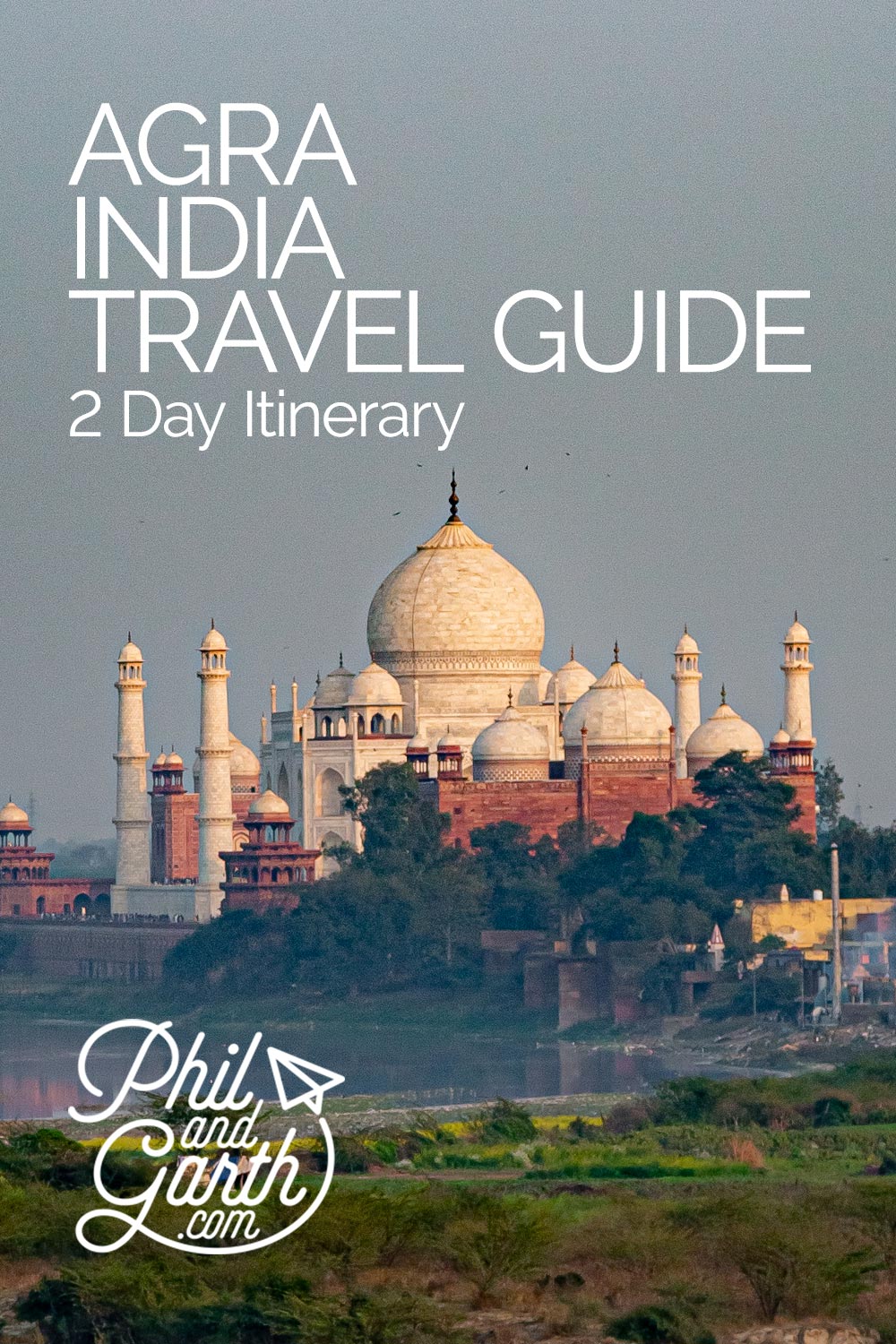
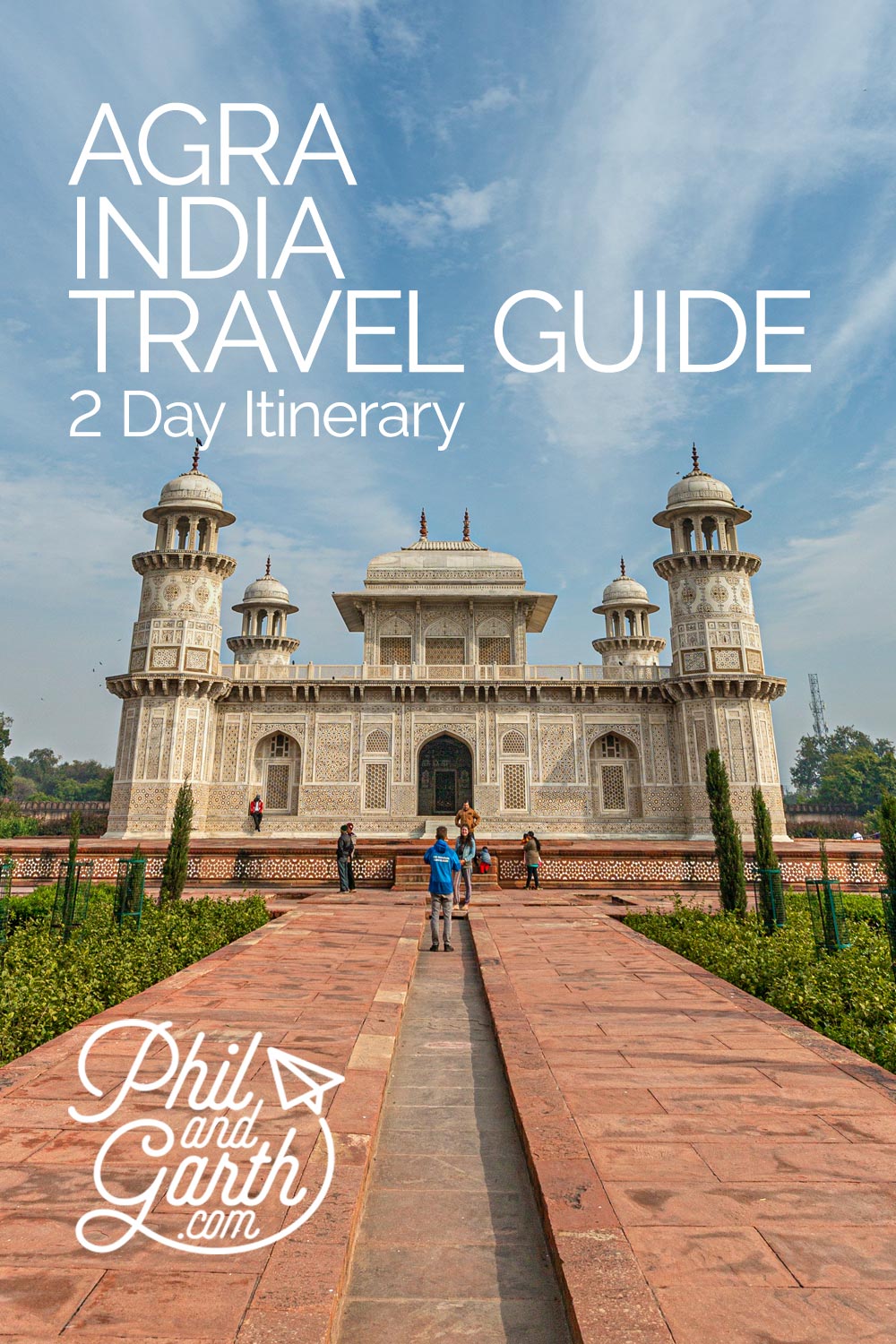
6 comments
Thank you so much for detailed information about your Agra trip. I found many pointers which are not anywhere else on internet, all the details provided are very uselful. Thank you so much Phil and Garth.
We’re so pleased you were able to use some of our tips.
Thanks for Valuable Information Keep it up.
Cheers Arif
Nice and useful post author. Thank you.
Nice post, thanks for sharing